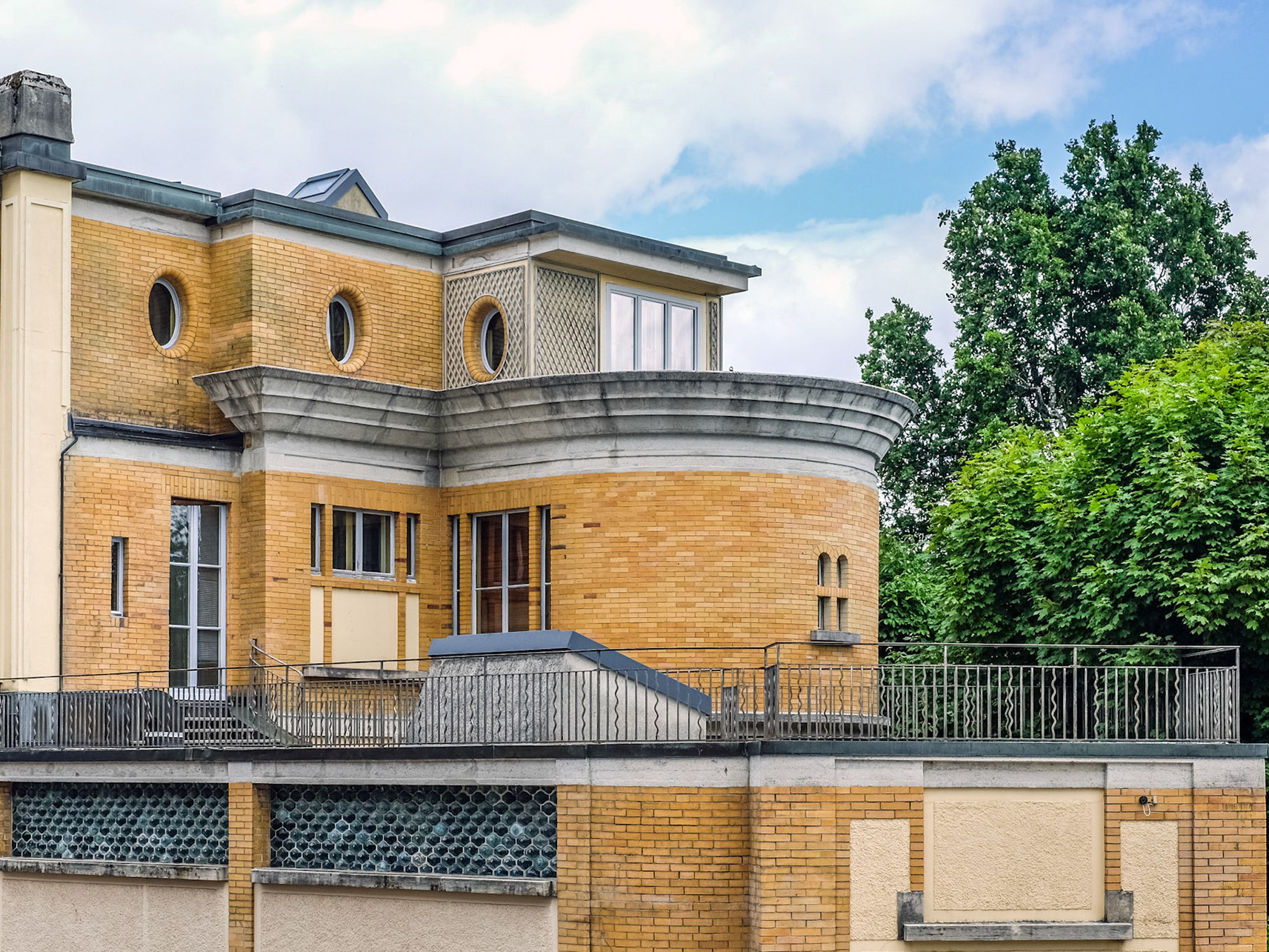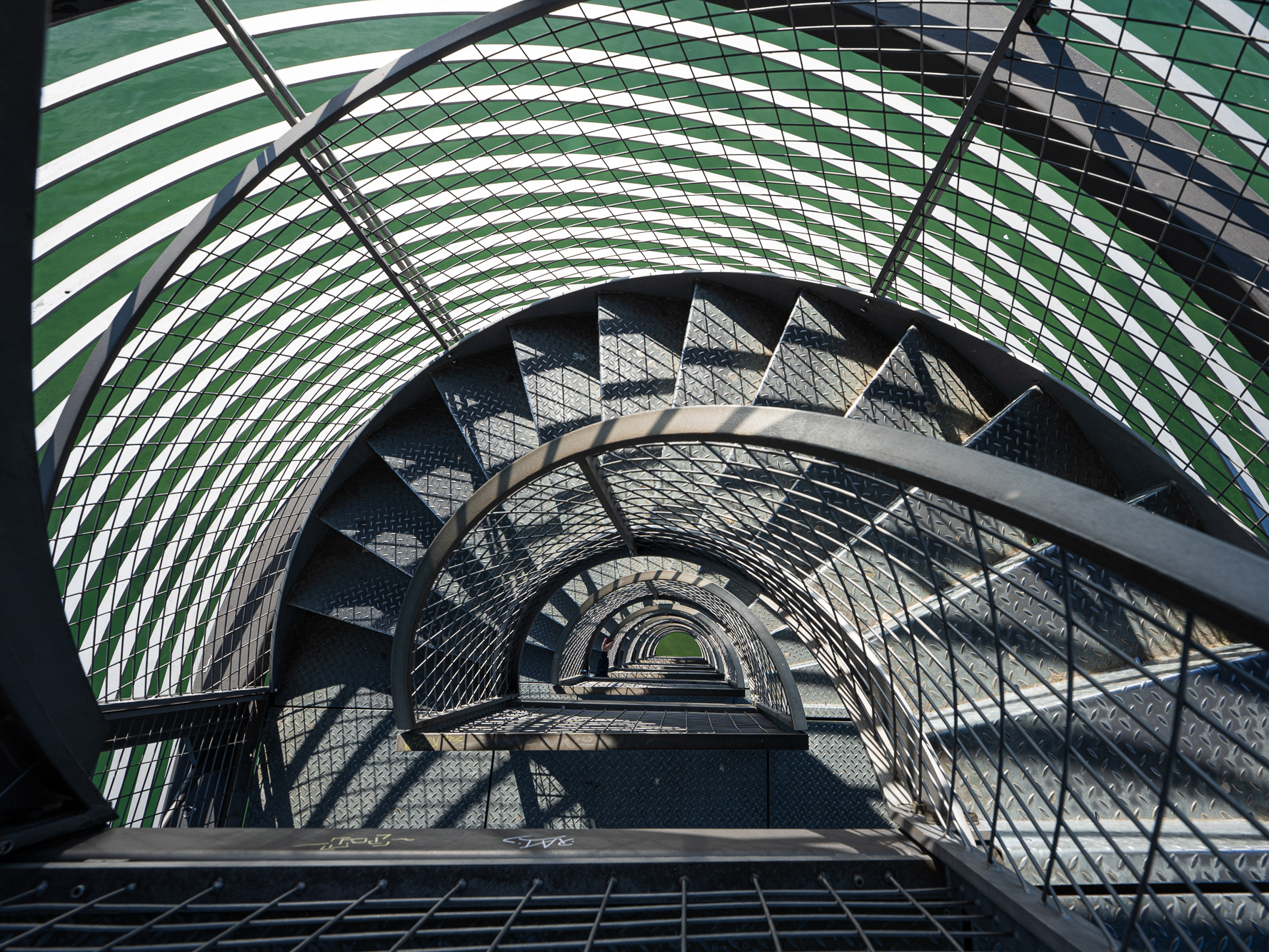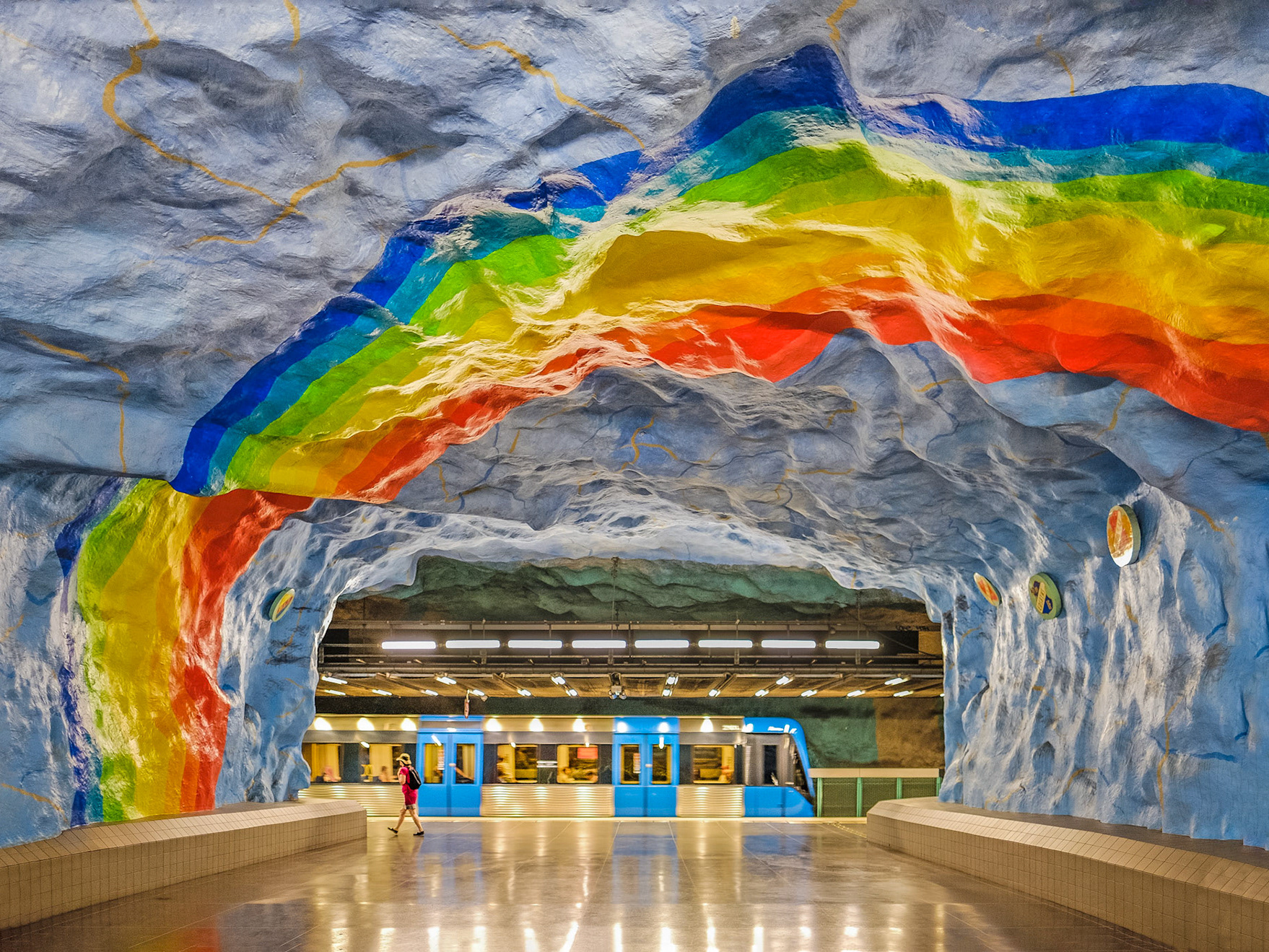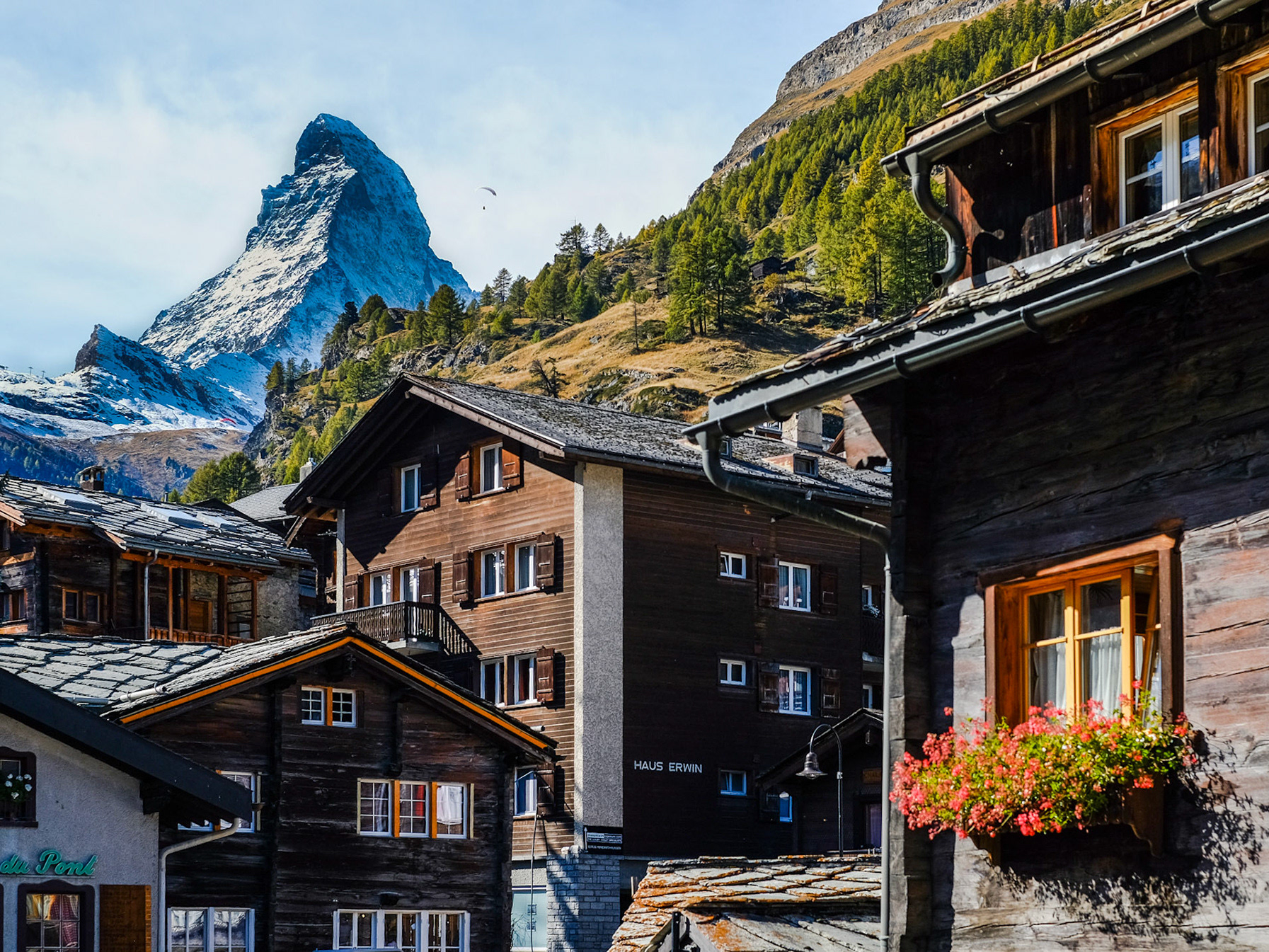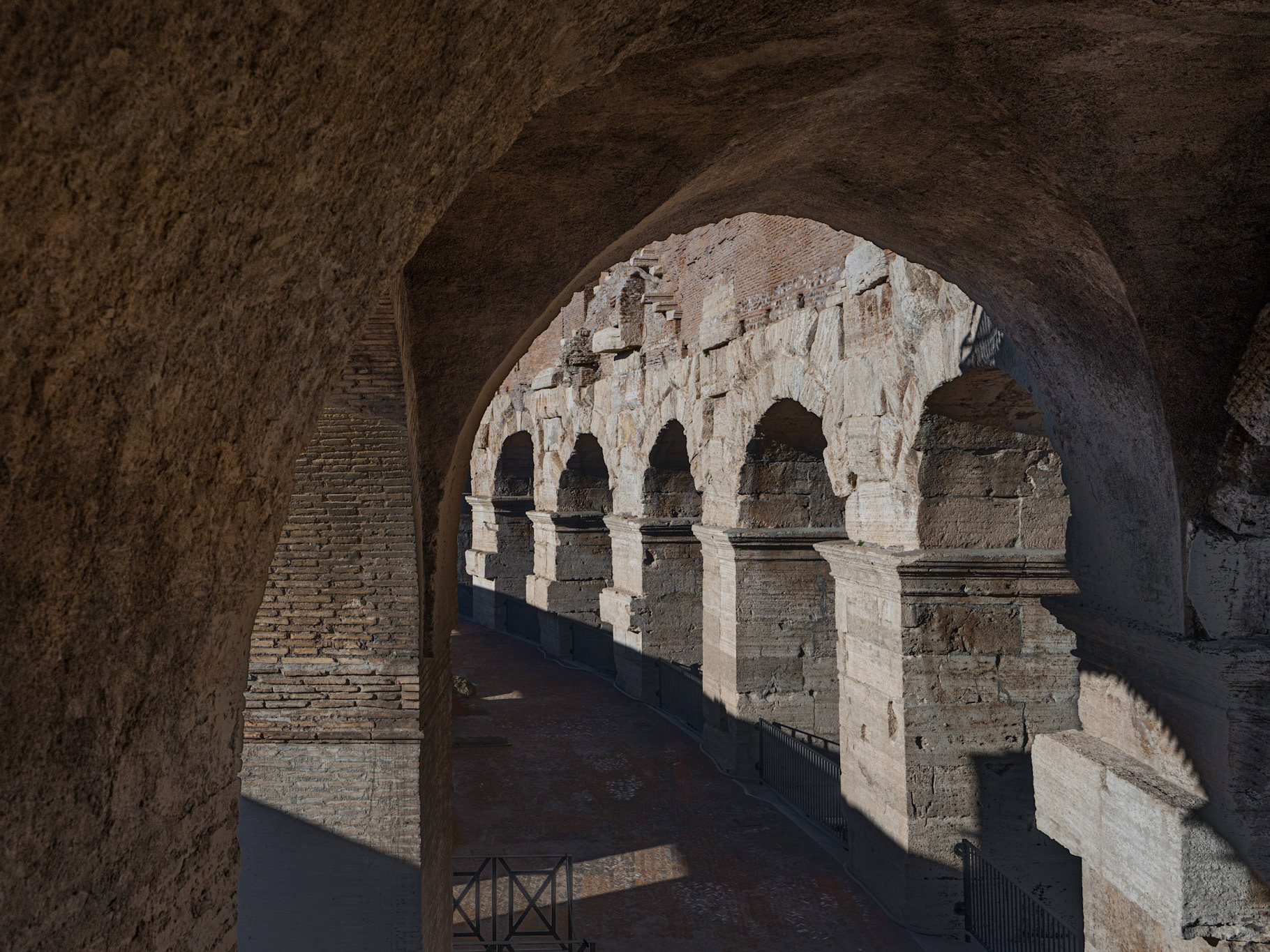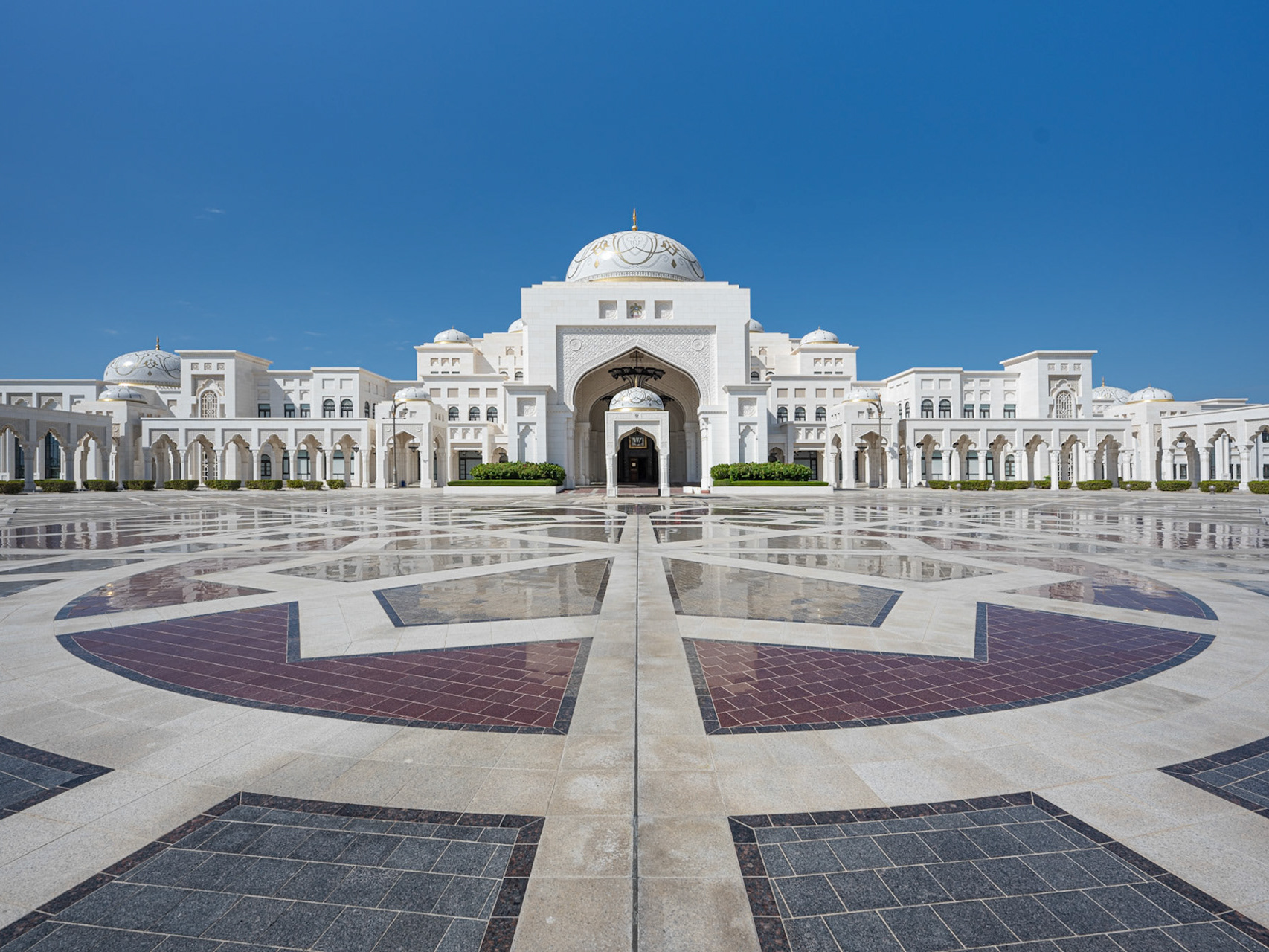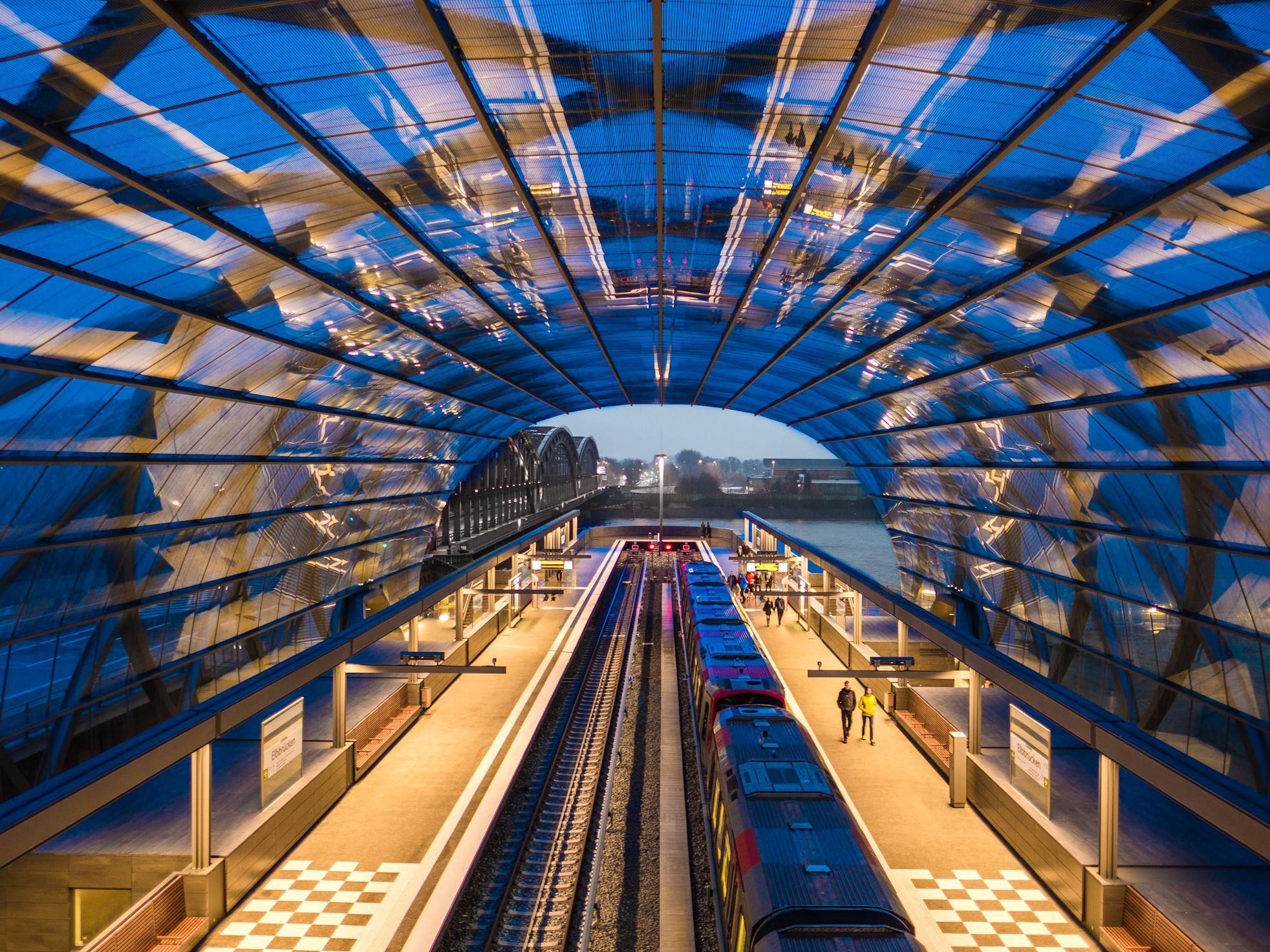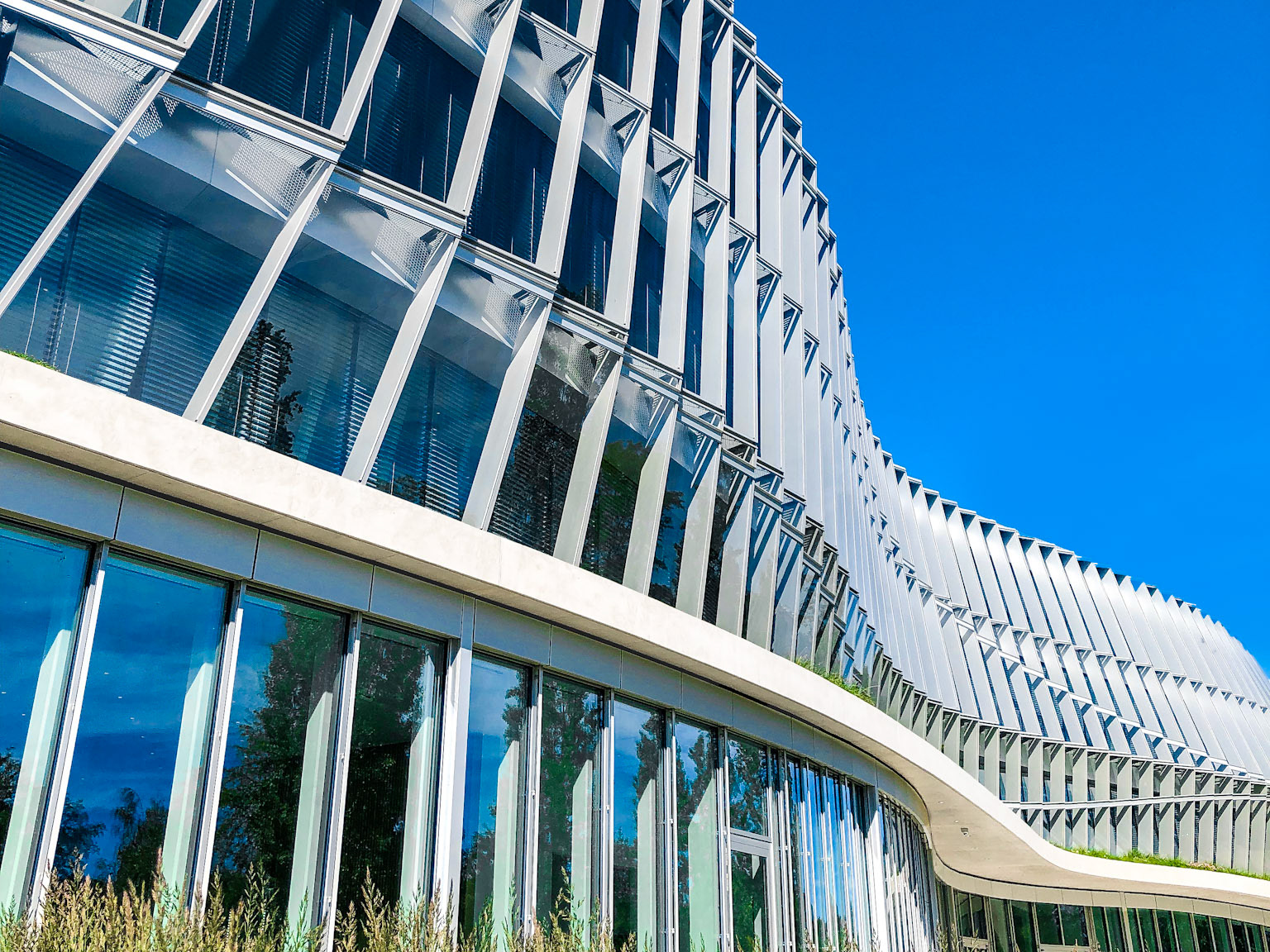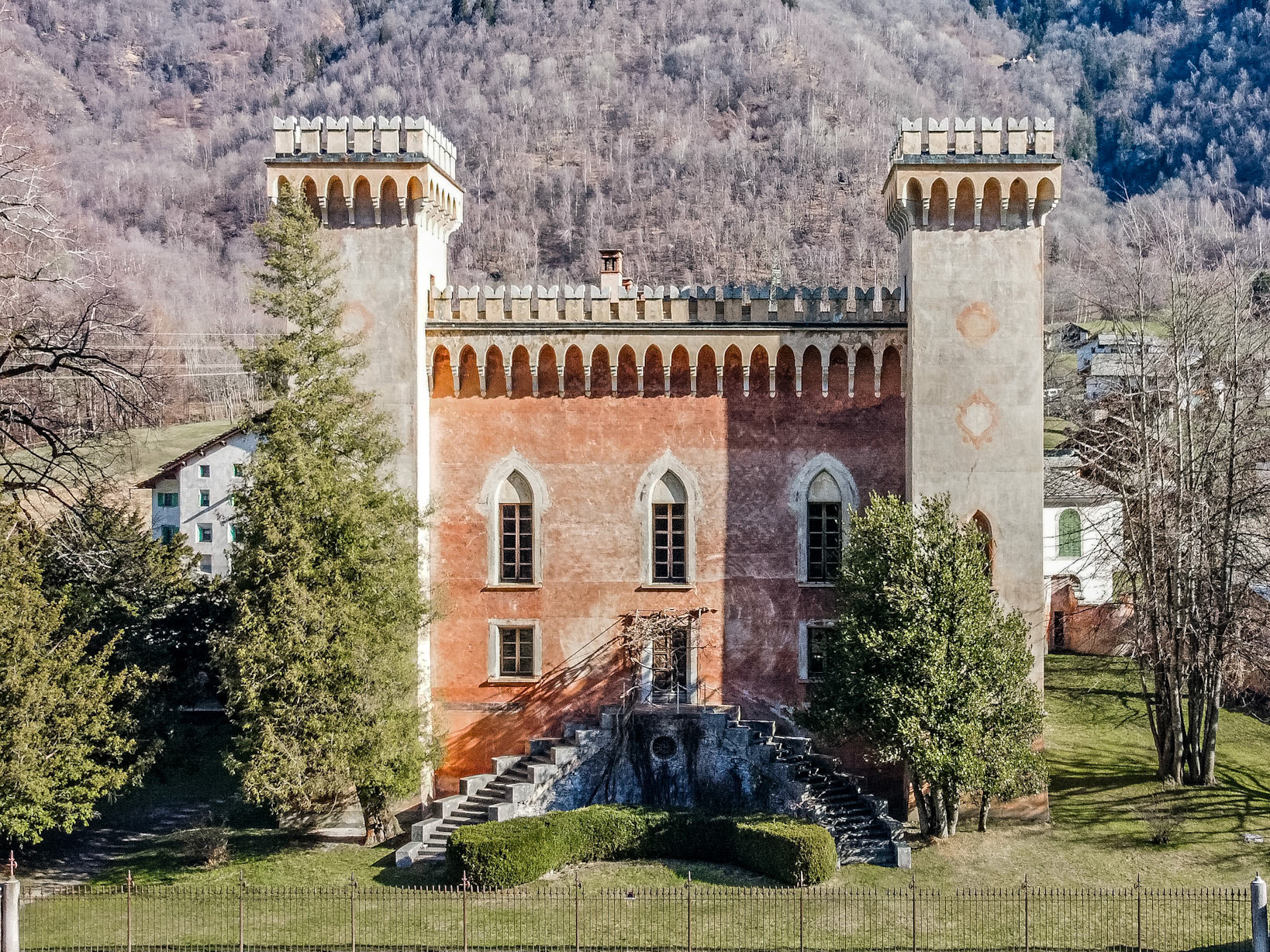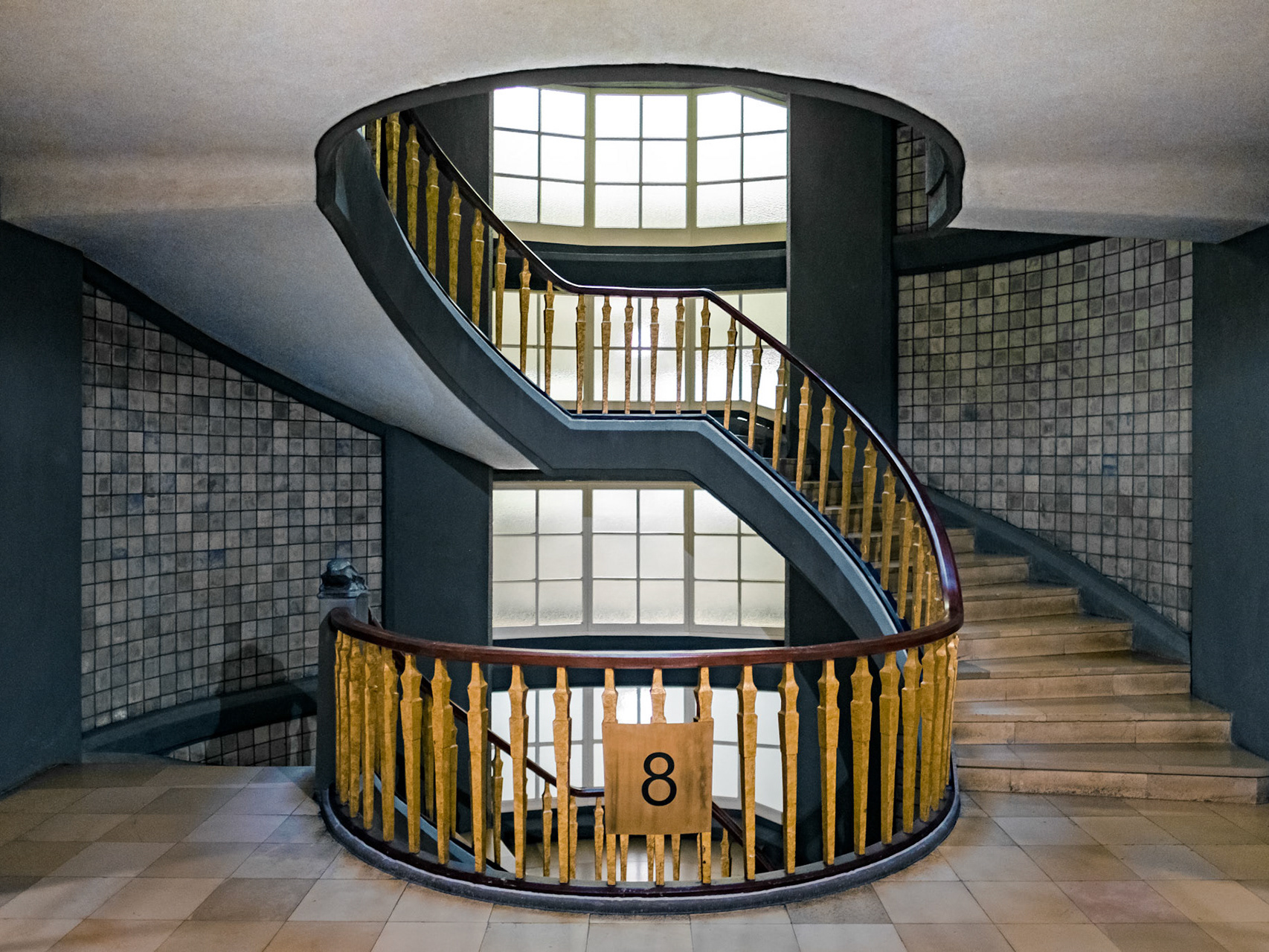Val Poschiavo is a mountain valley in the Italian-speaking part of Grisons. It can be reached via the 2328m high Bernina Pass and descends around 1800m through the municipalities of Poschiavo and Brusio towards Tirano in Italy. At the beginning of July, we spent a week there taking in the sun and Mediterranean lifestyle while hiking and, of course, also exploring some interesting architecture.
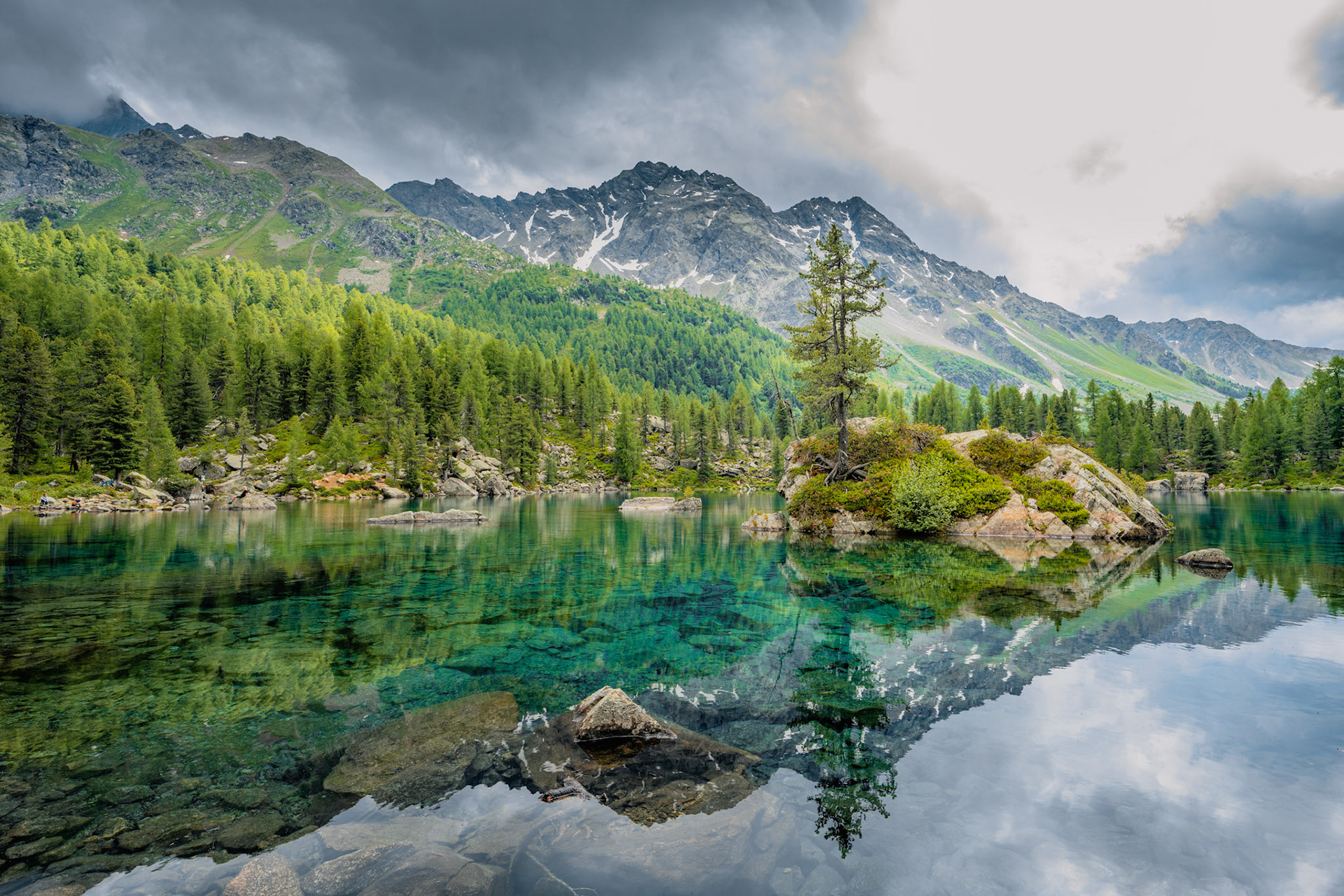
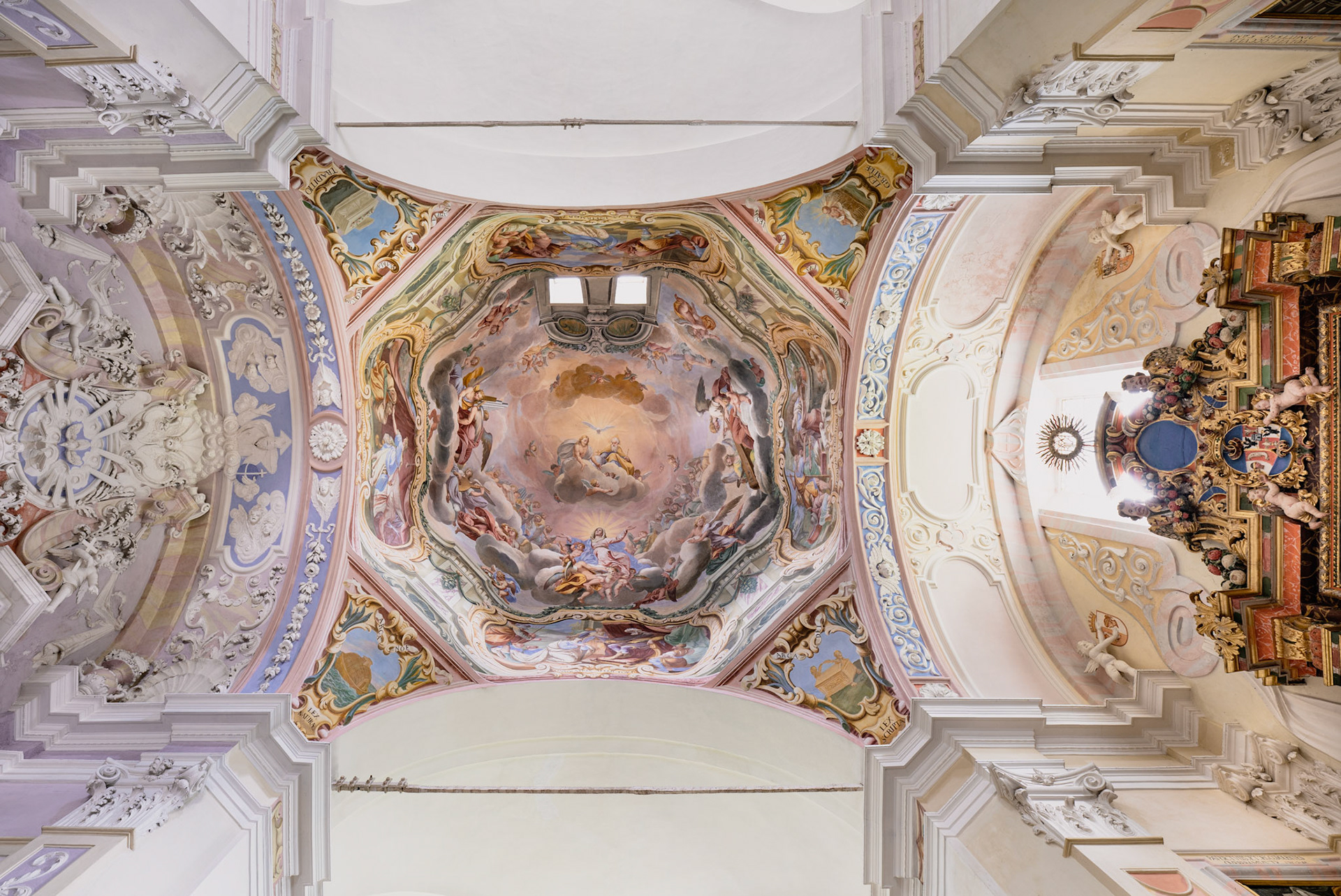
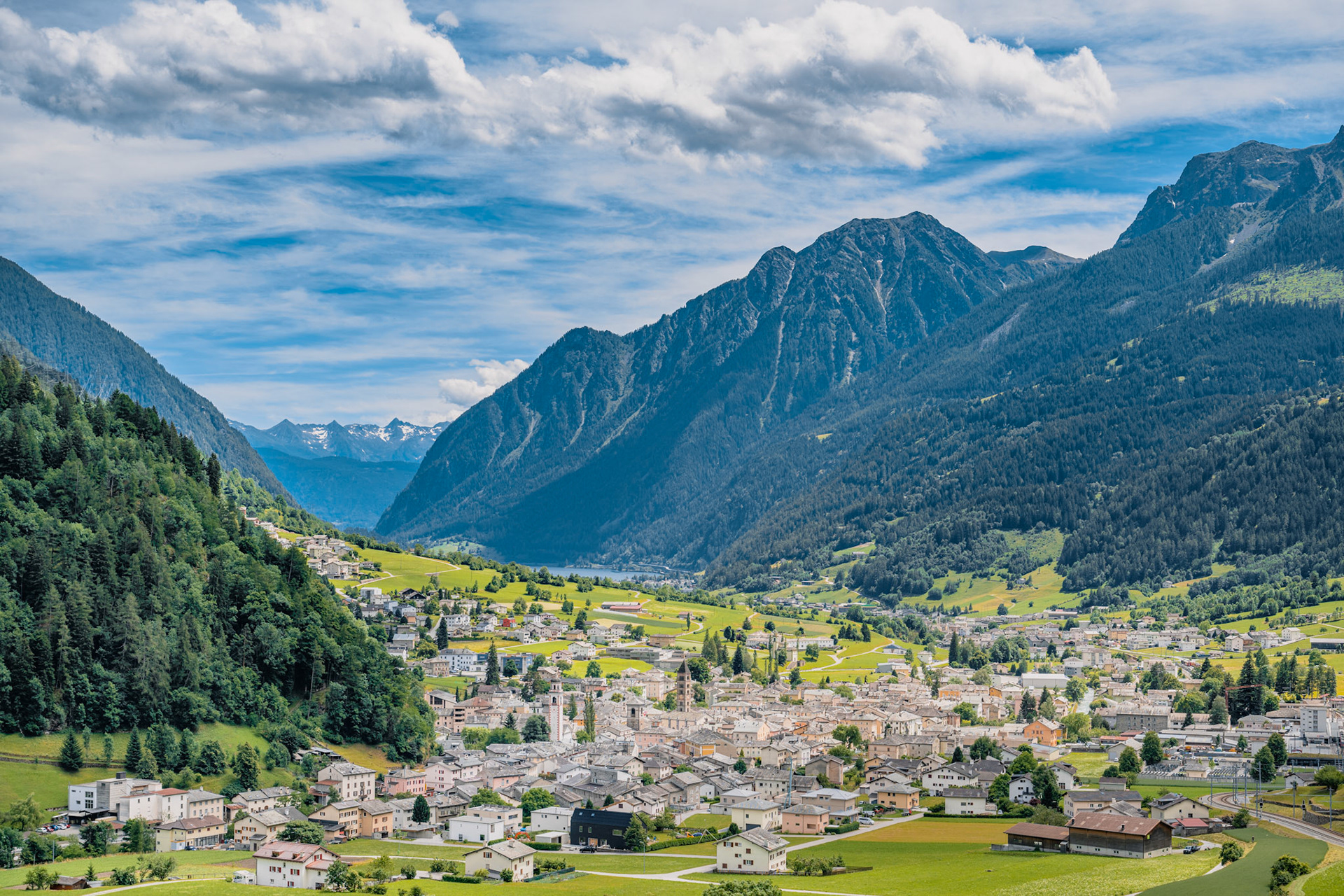
The main town in Val Poschiavo is Poschiavo with a population of about 3500. It was first mentioned in 824 and features many Renaissance style palazzi built in the 19th century by residents who had made their fortune abroad. With its animated market place and great connection both by rail and road, it makes for an excellent base to explore the valley and we could easily alternate between hiking and cultural activities depending on the weather.
Palazzo Glaser/Kunz
Our home for the week in Poschiavo was the Palazzo Glaser/Kunz located in the town center and the only example of late Baroque architecture in Poschiavo. The house was built by Giacomo Mini and Domenica Cortesi in 1793 after their return from Warsaw where they had founded one of the city’s first pastry shops in 1775. In 1802, they founded another coffee house in Copenhagen and at the beginning of the 20th century, their descendants operated, in cooperation with other Poschiavo cafetiers, around sixty coffee houses in Spain under the name “Café Suizo”. Ernest Hemingway was even an occasional guest at the Café Suizo in Pamplona and he mentioned it twice in his 1926 novel The Sun Also Rises. In 2017, the Swiss artist couple Glaser/Kunz acquired the palazzo and restored the house over a period of three years. It can now be rented through Ferien im Baudenkmal.
The Palazzo is huge and has many interesting details, both inside and outside.
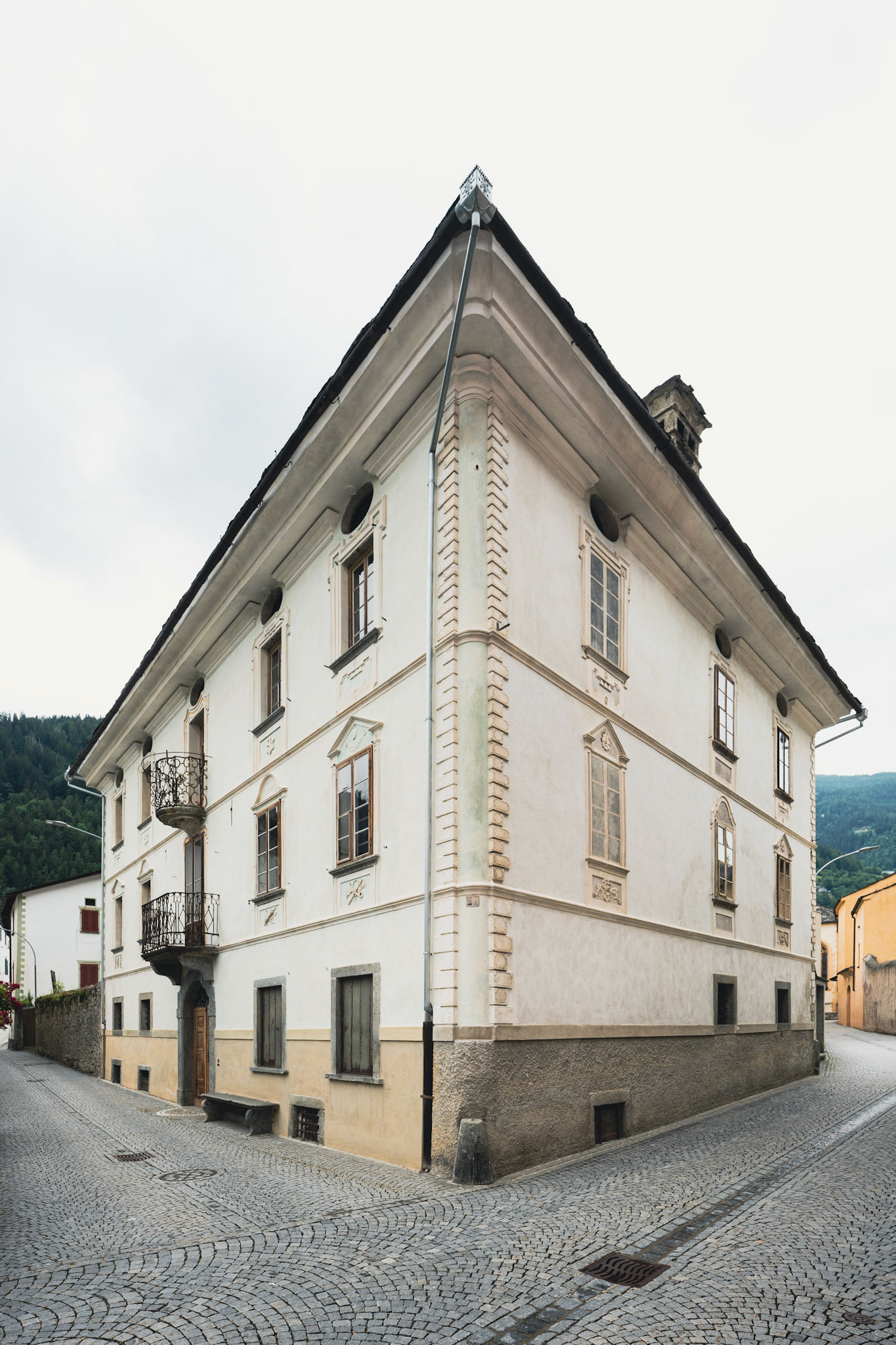
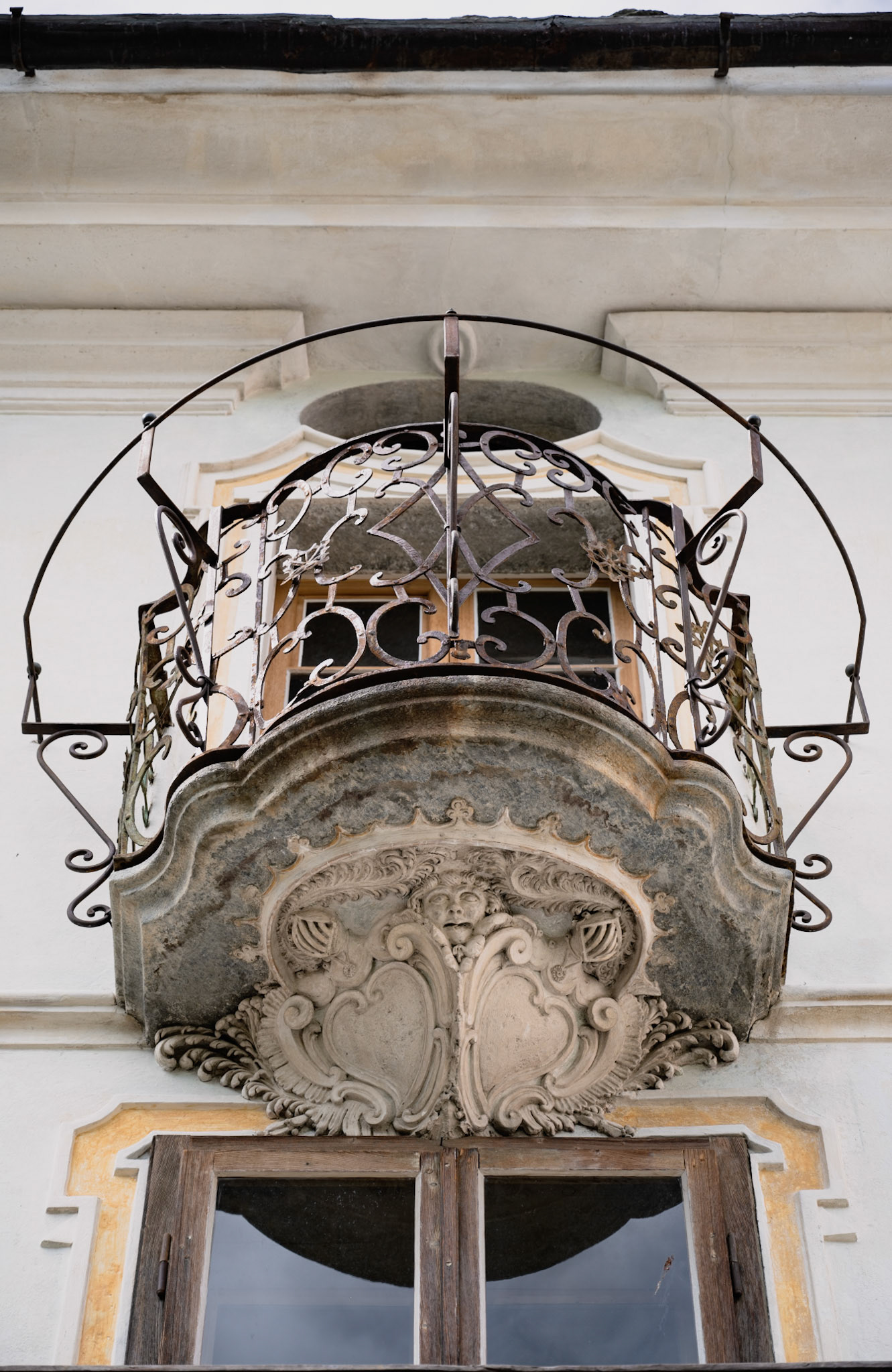
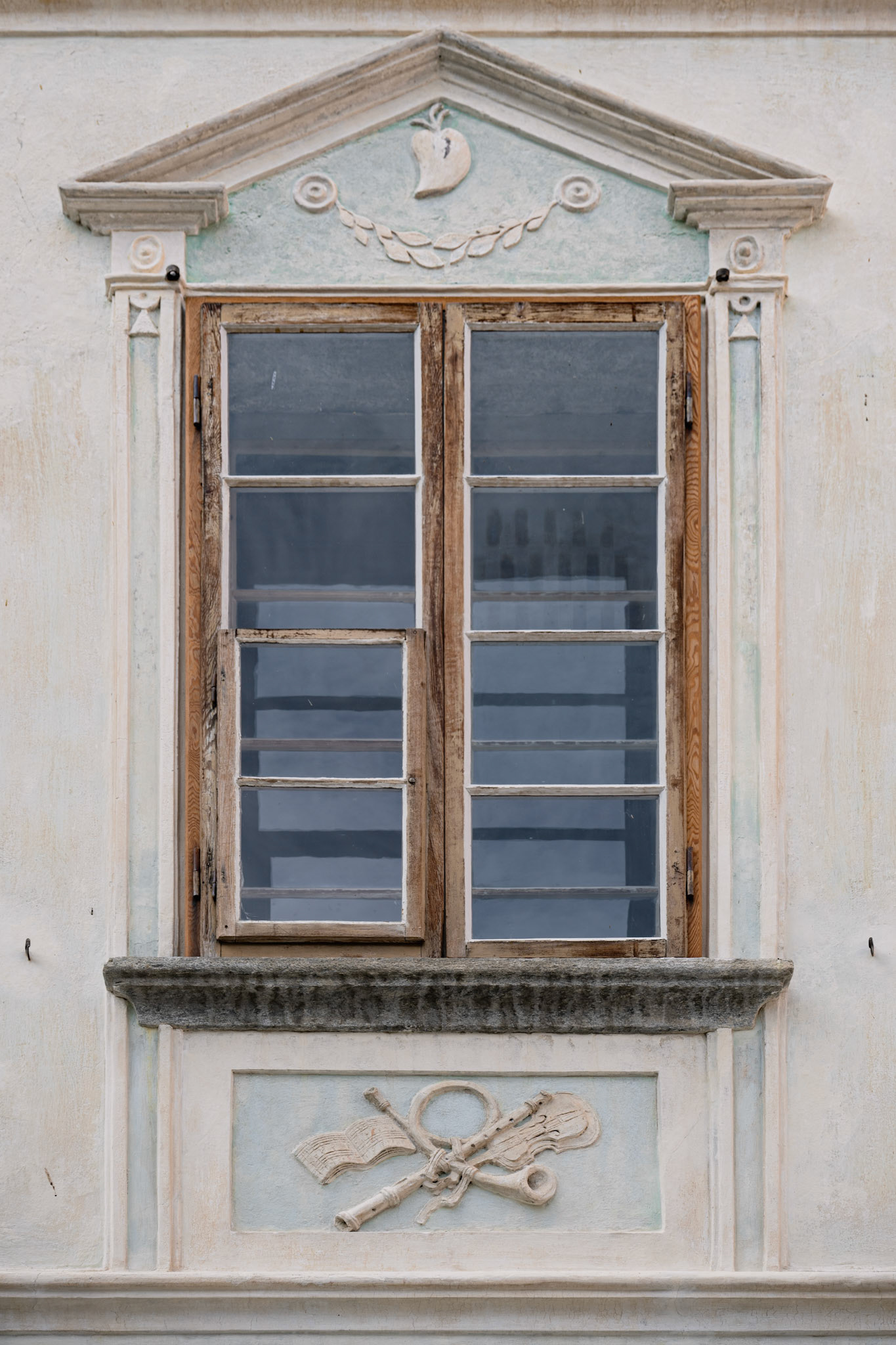
The outside stuccoes showing musical instruments were part of the original design by the Mini-Cortesi family, for whom culture was very important.
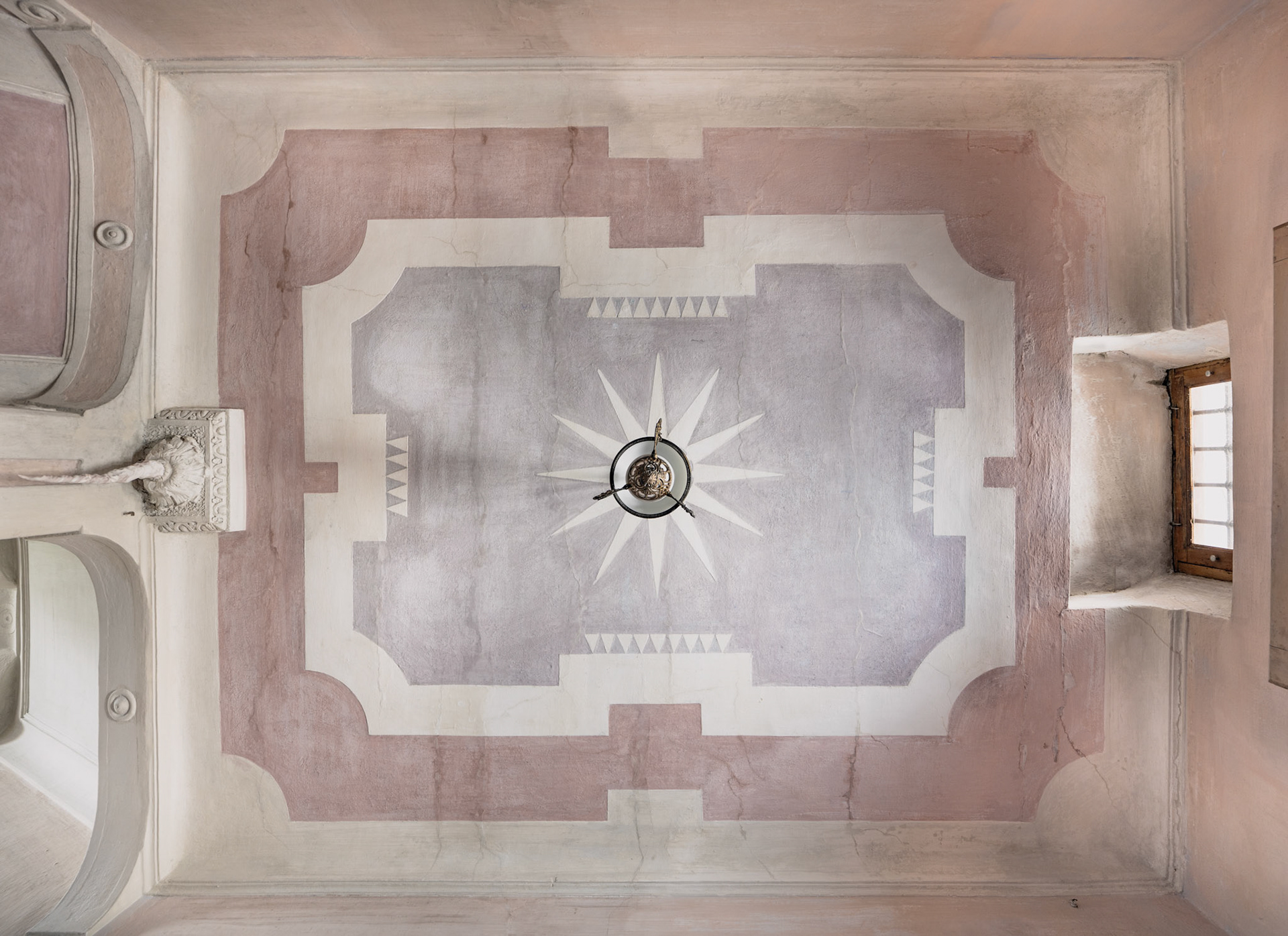
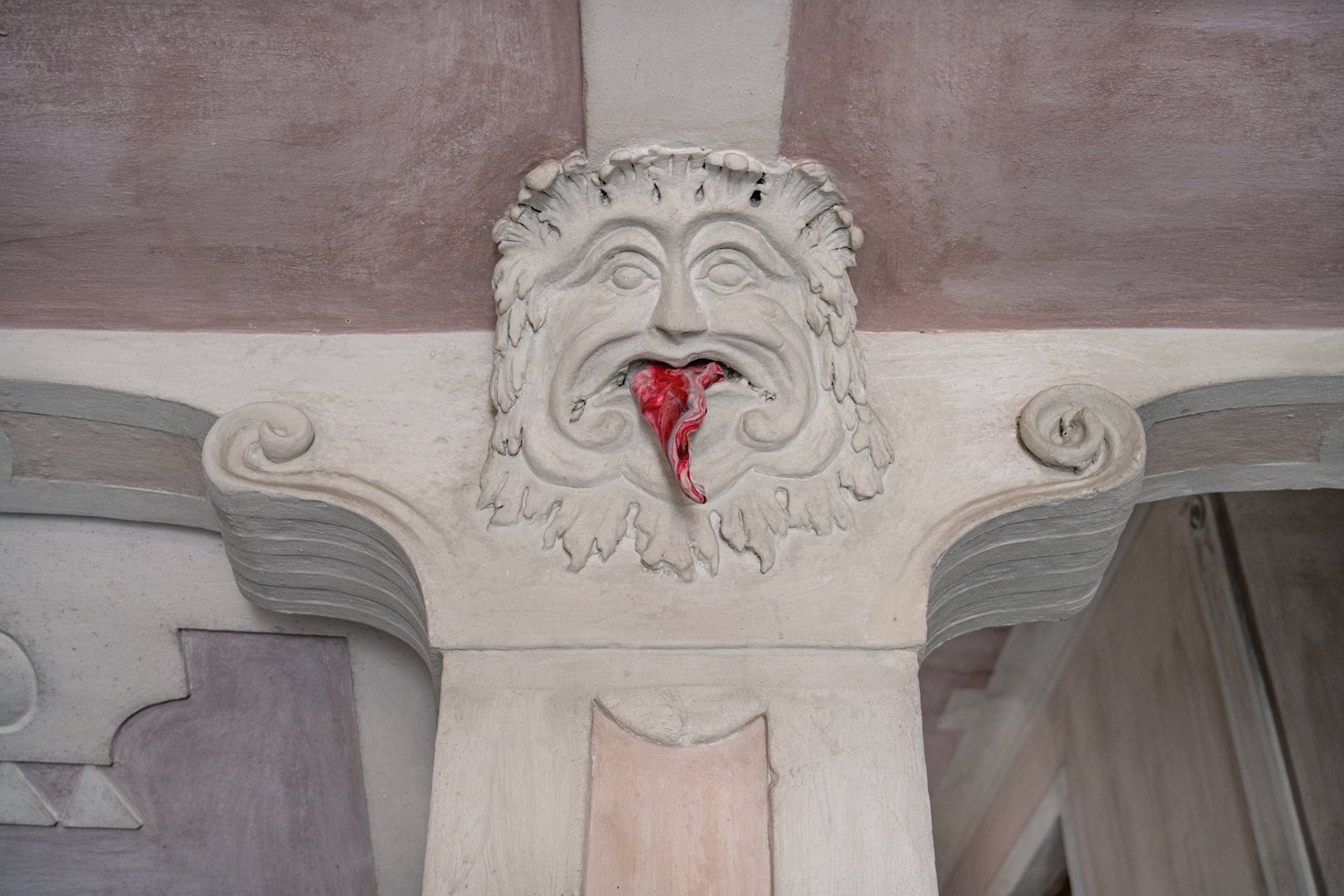
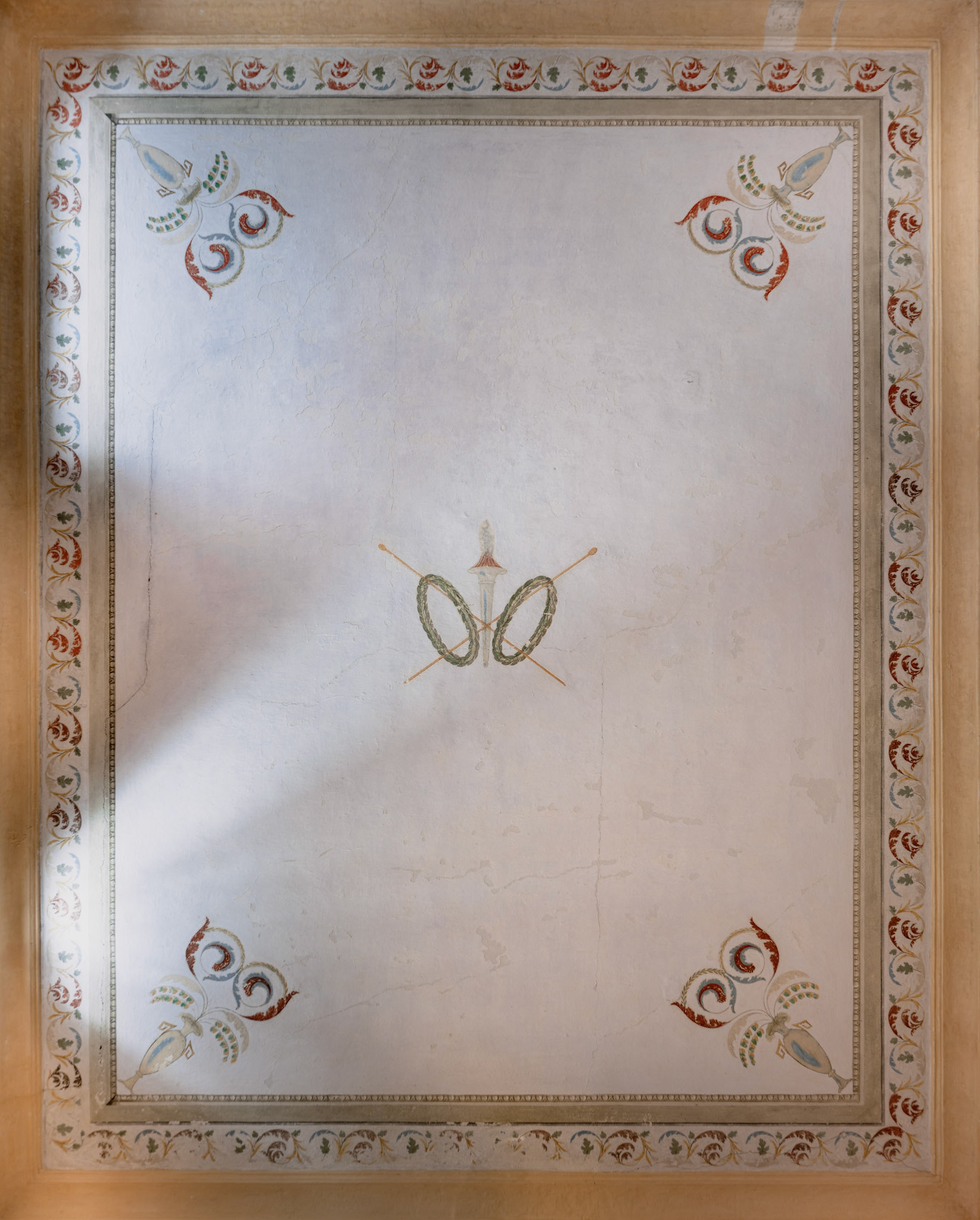
The Layer mandala in the kitchen is a great reminder of the history and age of the house. It is composed of the more than 12 layers of paint found on the kitchen walls.
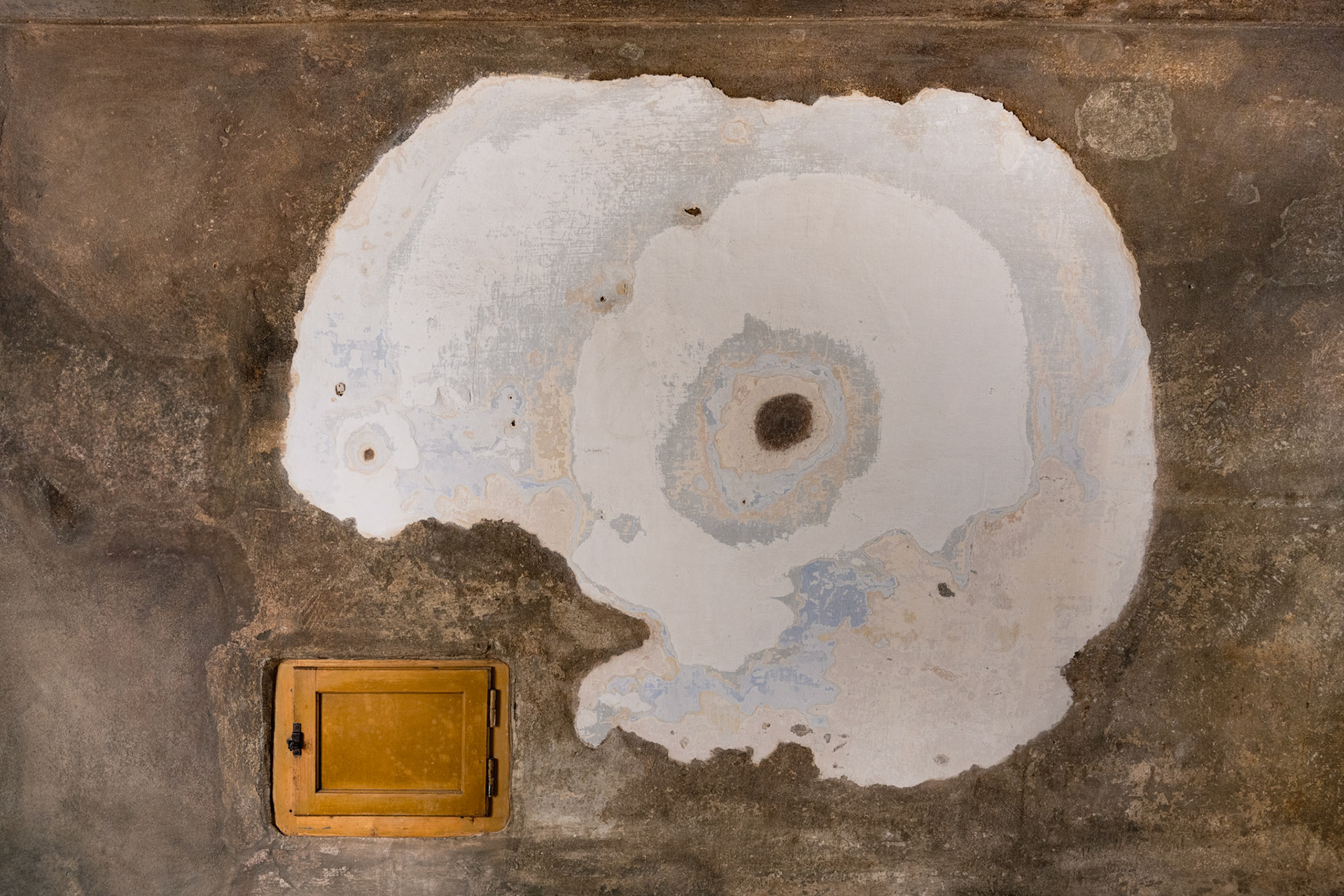
While technically, the house has three levels, the main staircase features half levels with access to one of the bathrooms or the courtyard so we had to spent some time working out how to navigate the house as a family.
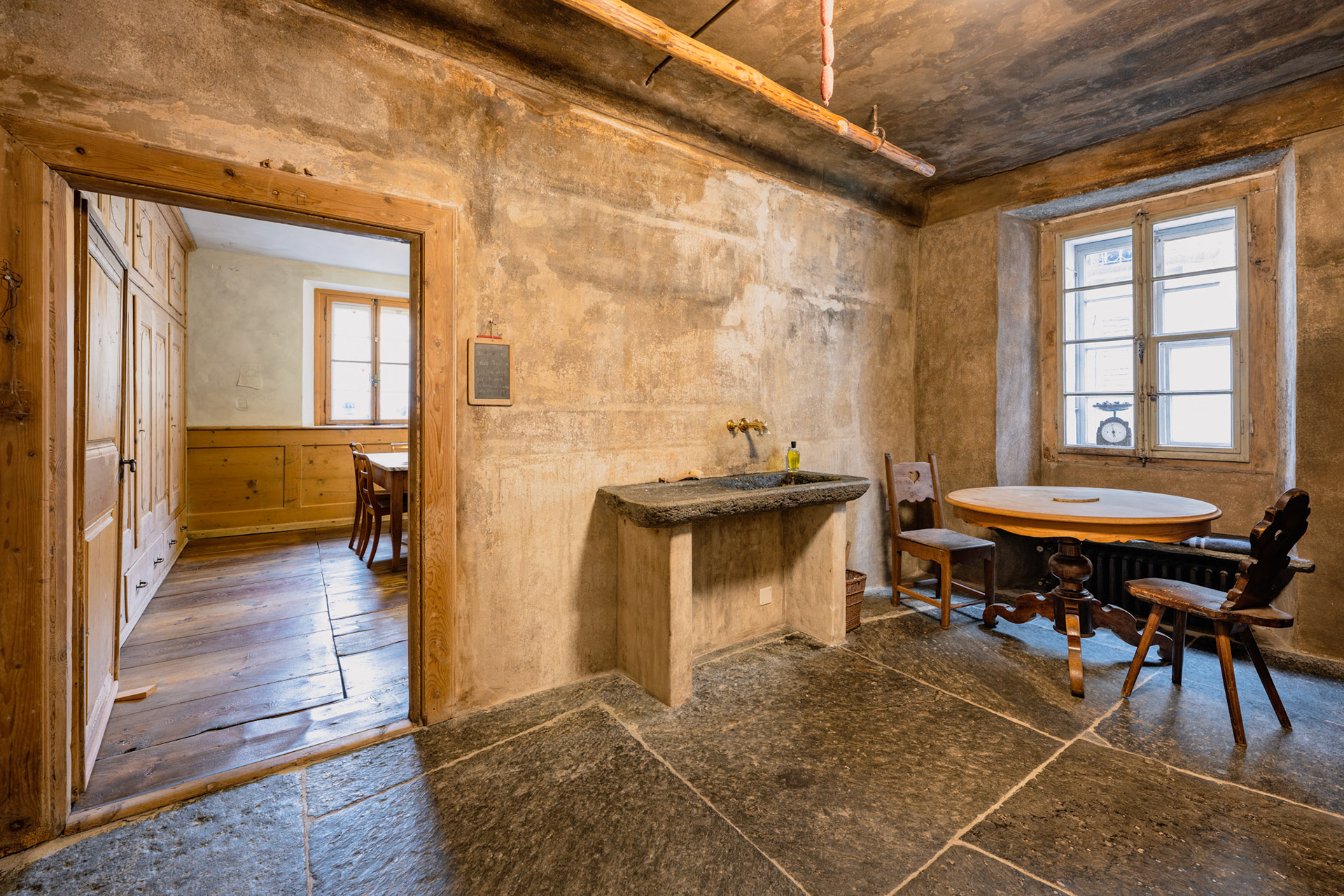
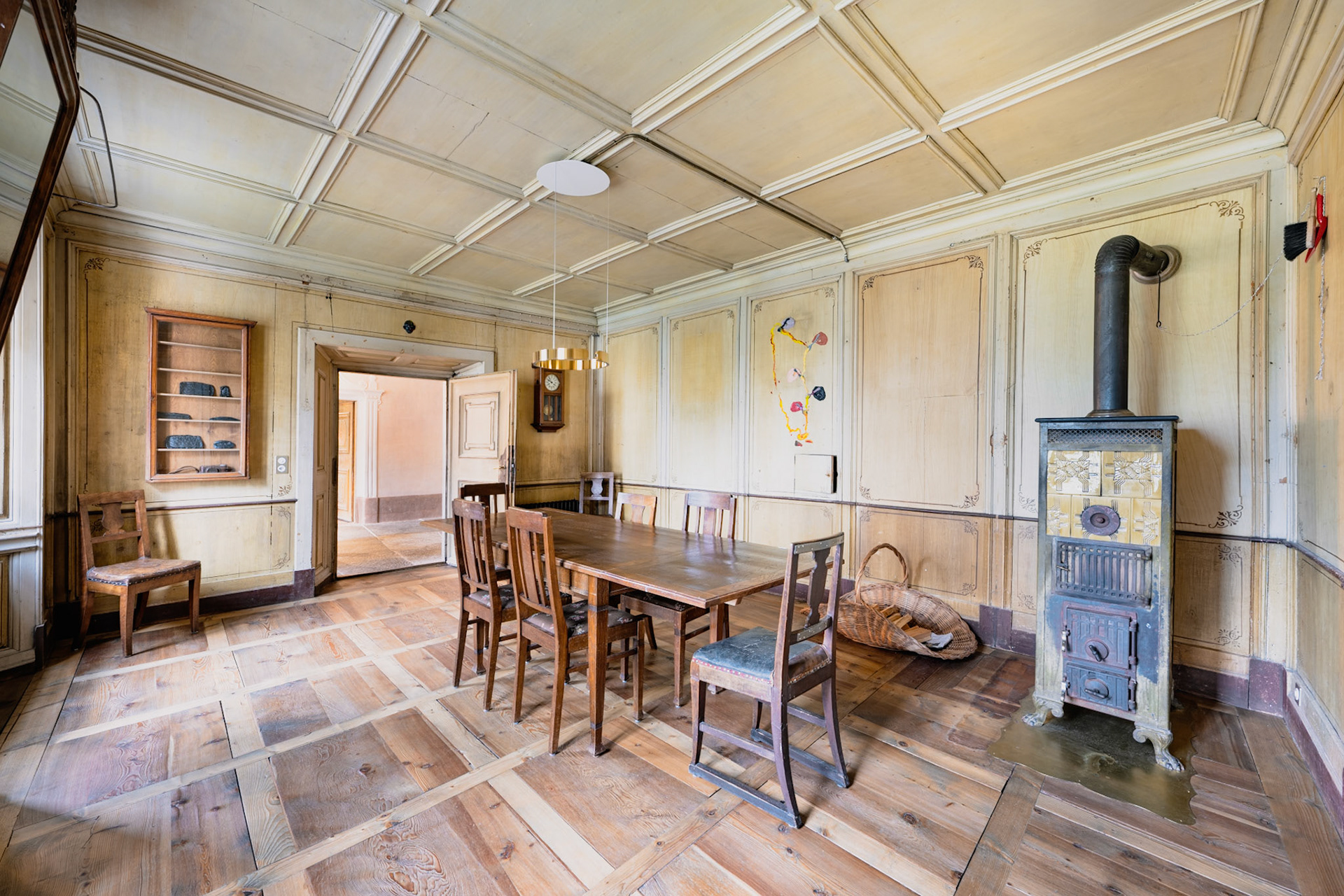
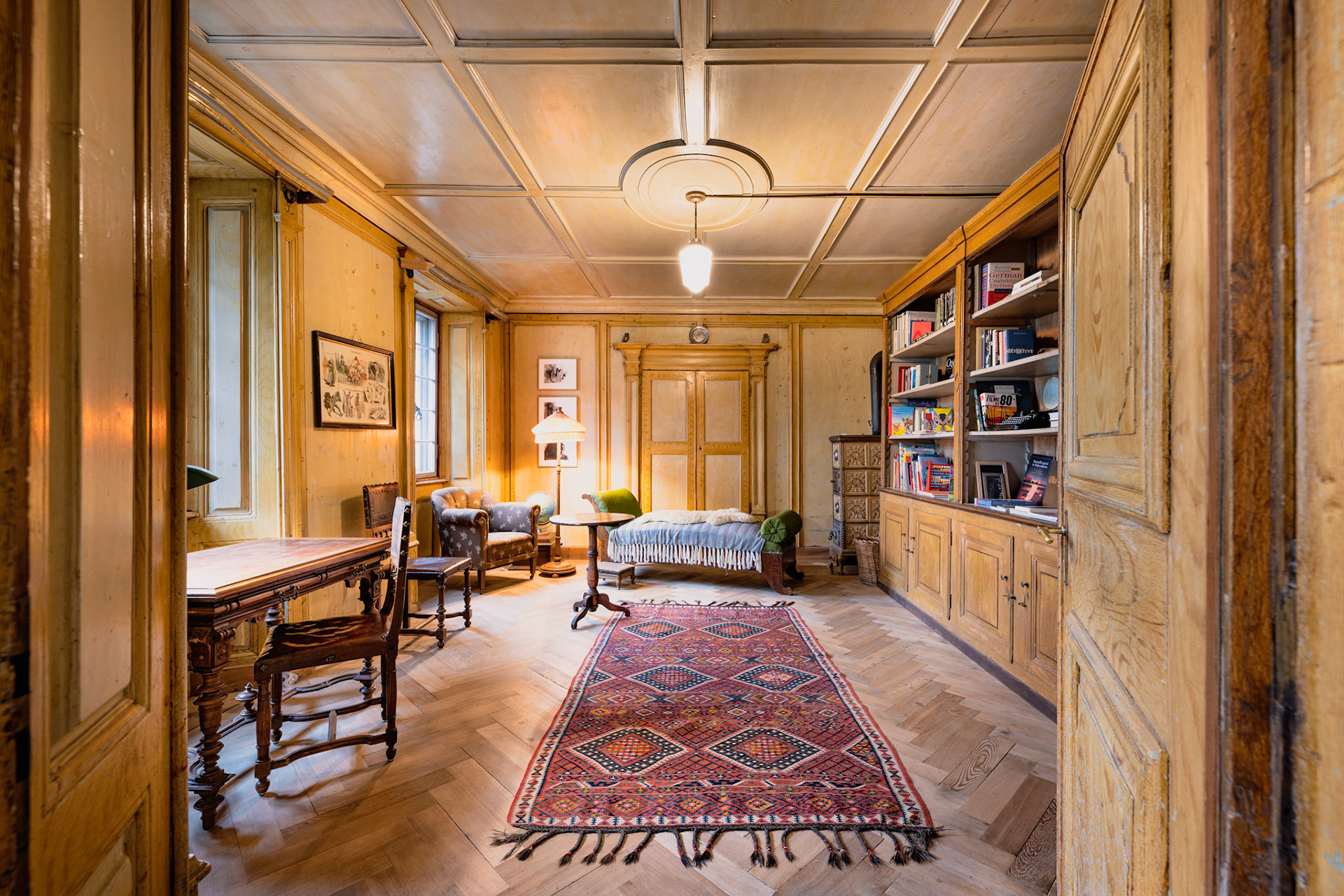
There are three bedrooms, two bathrooms and two kitchens: one of them with a wood oven and the newer one with an electric stove.
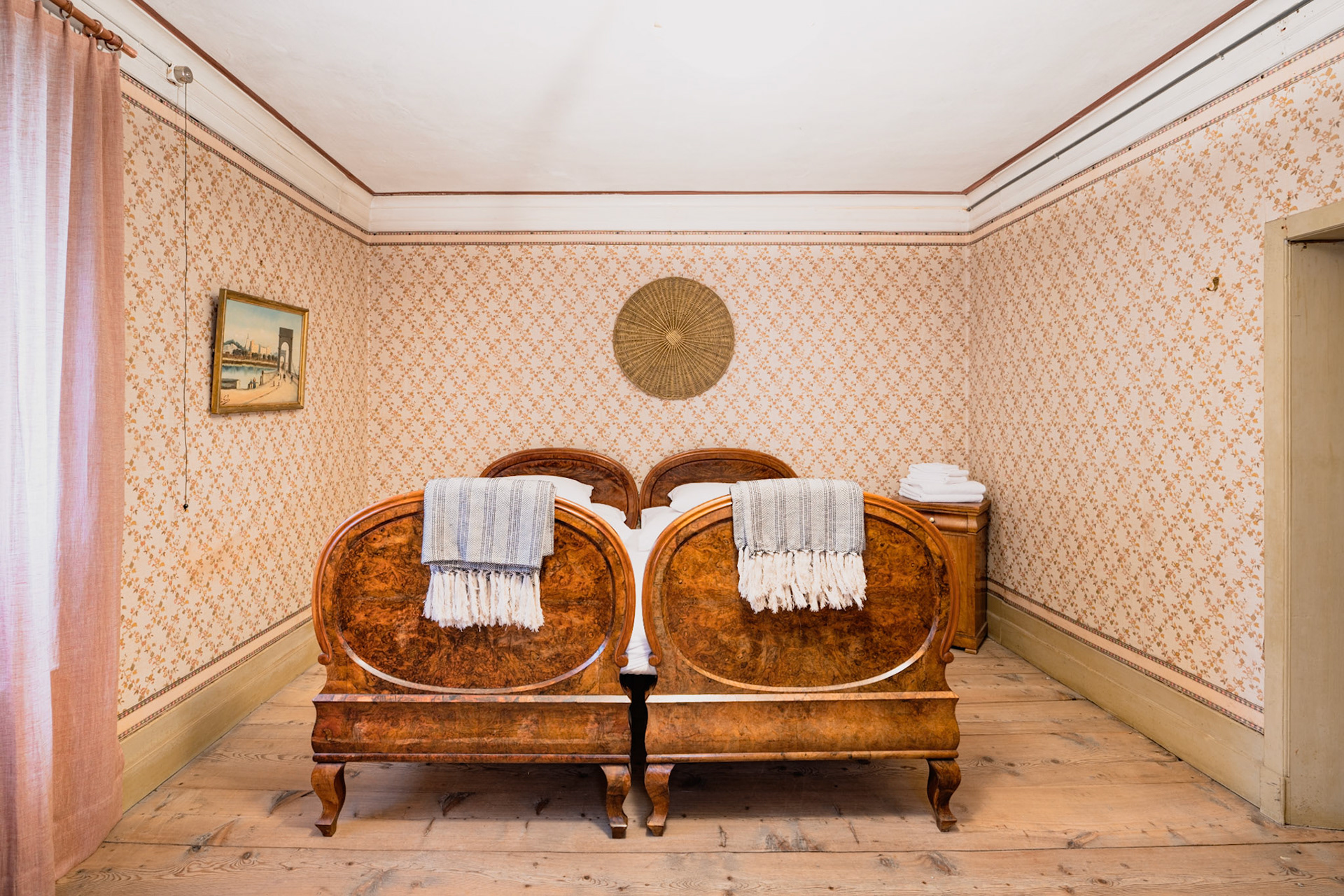
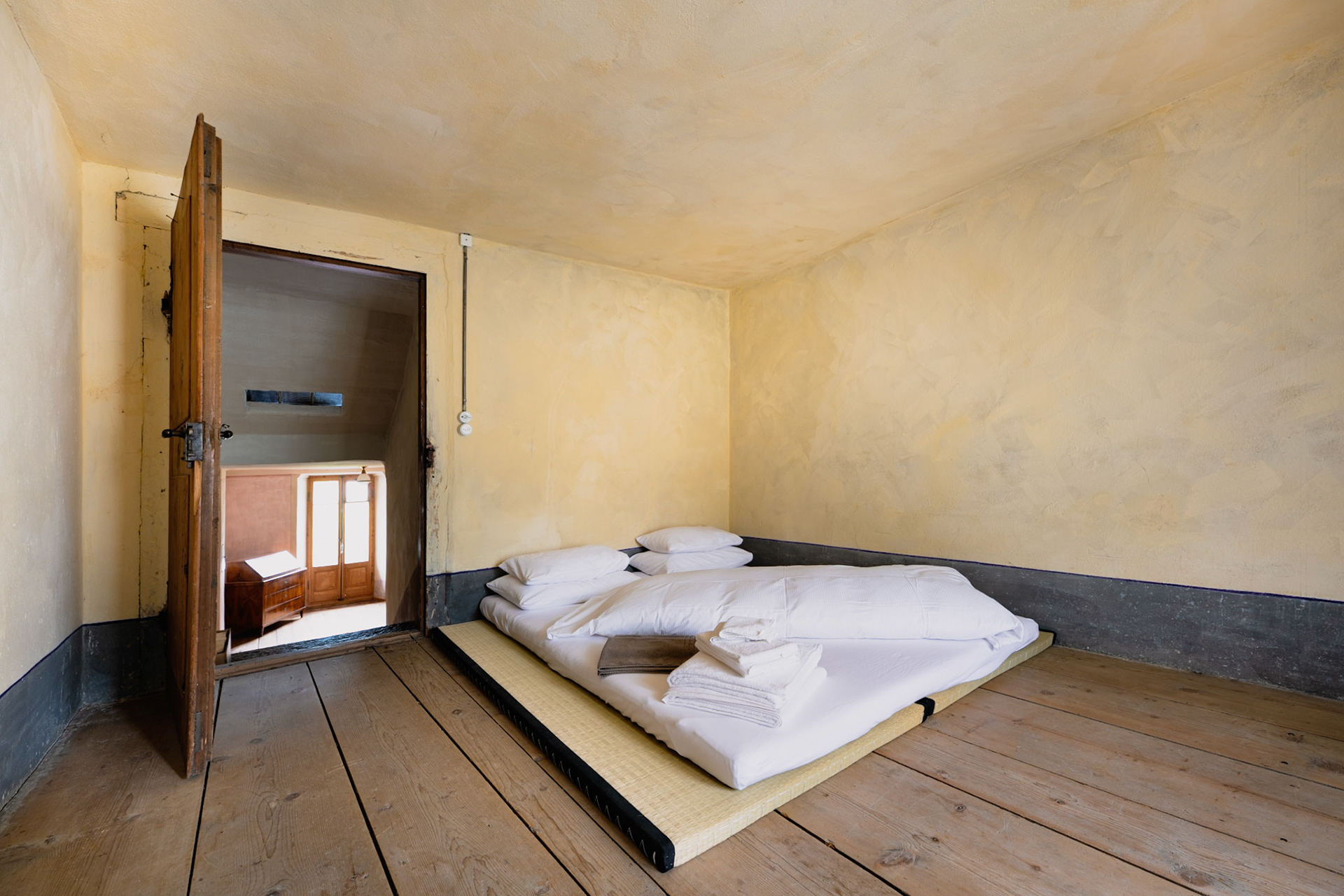
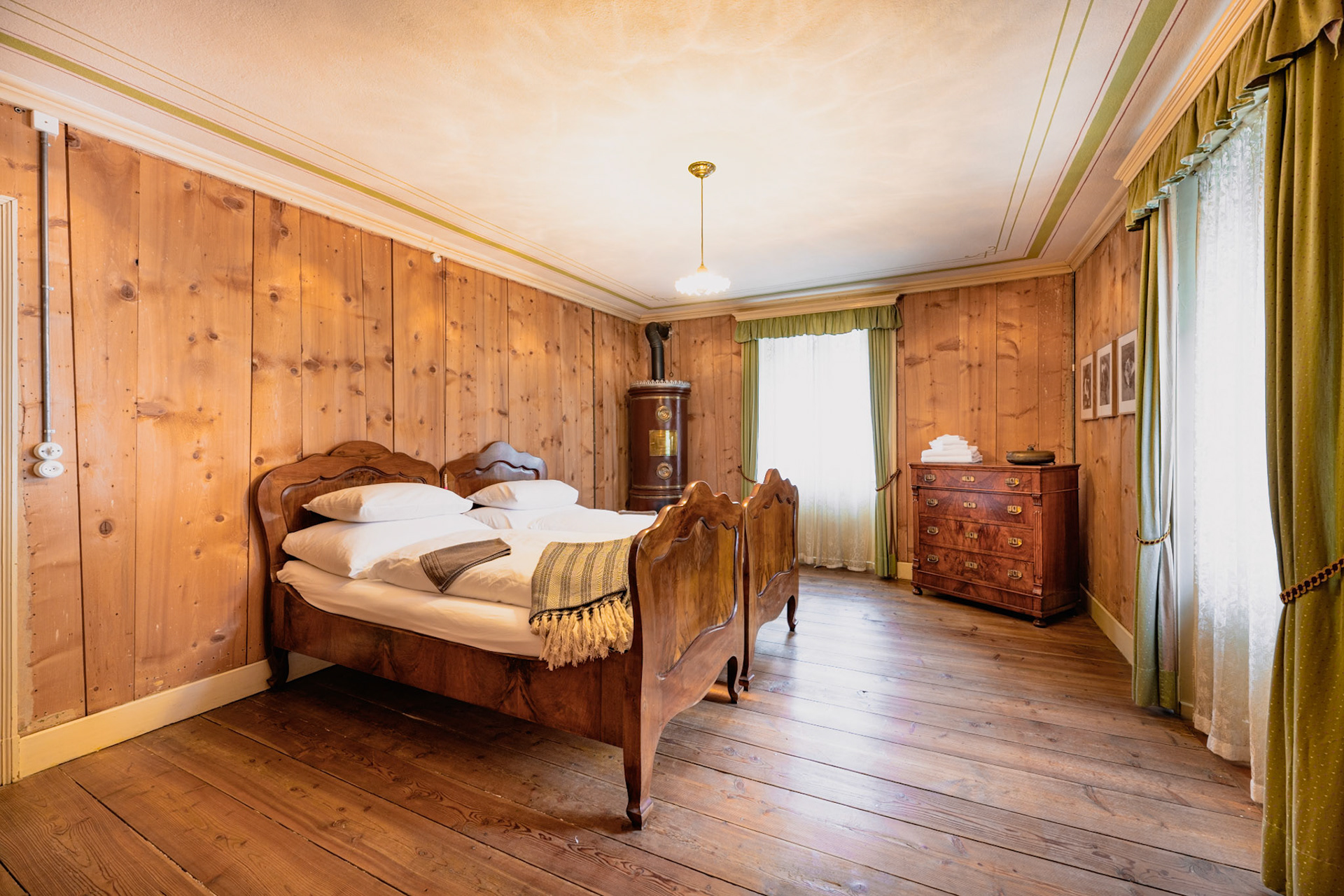
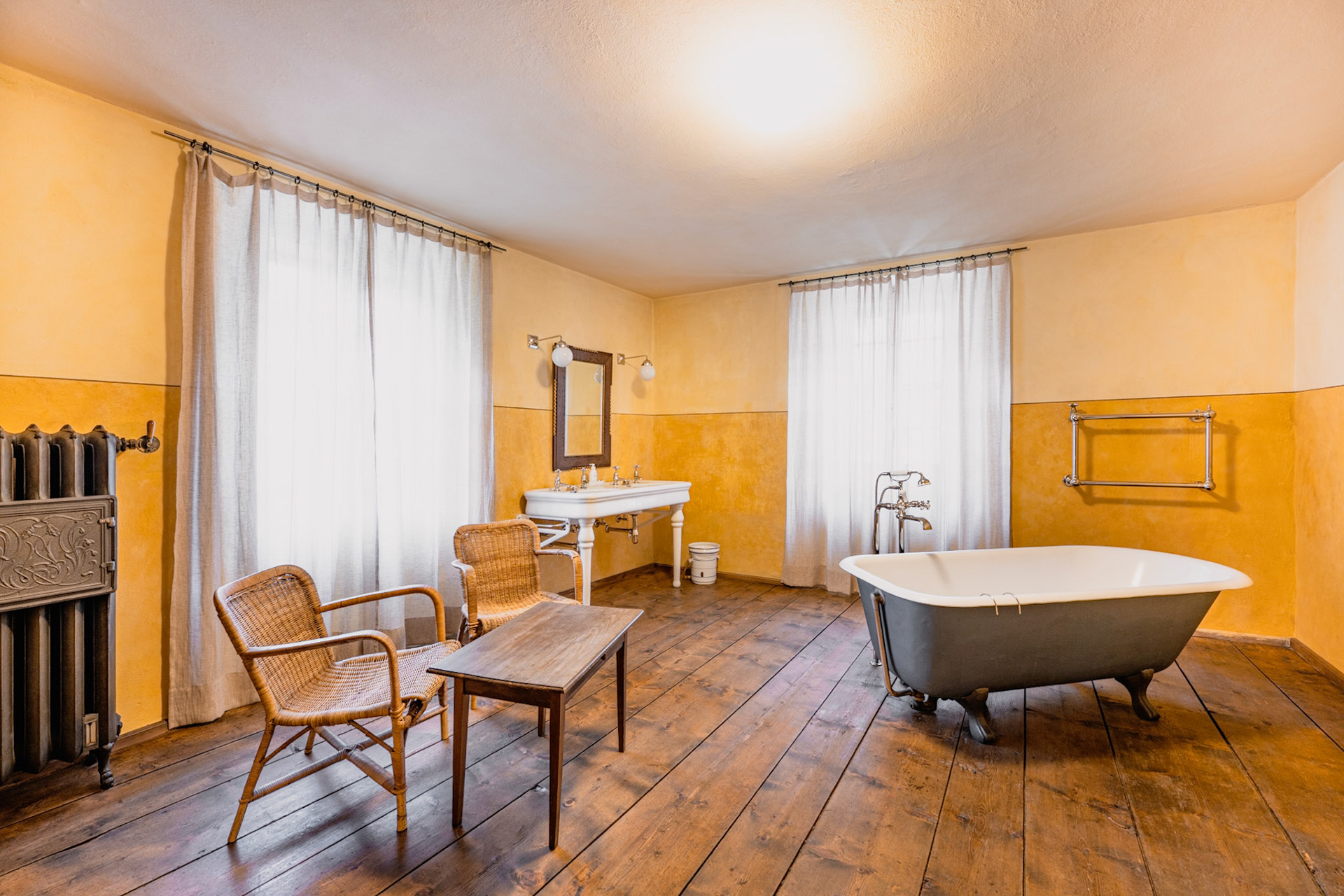
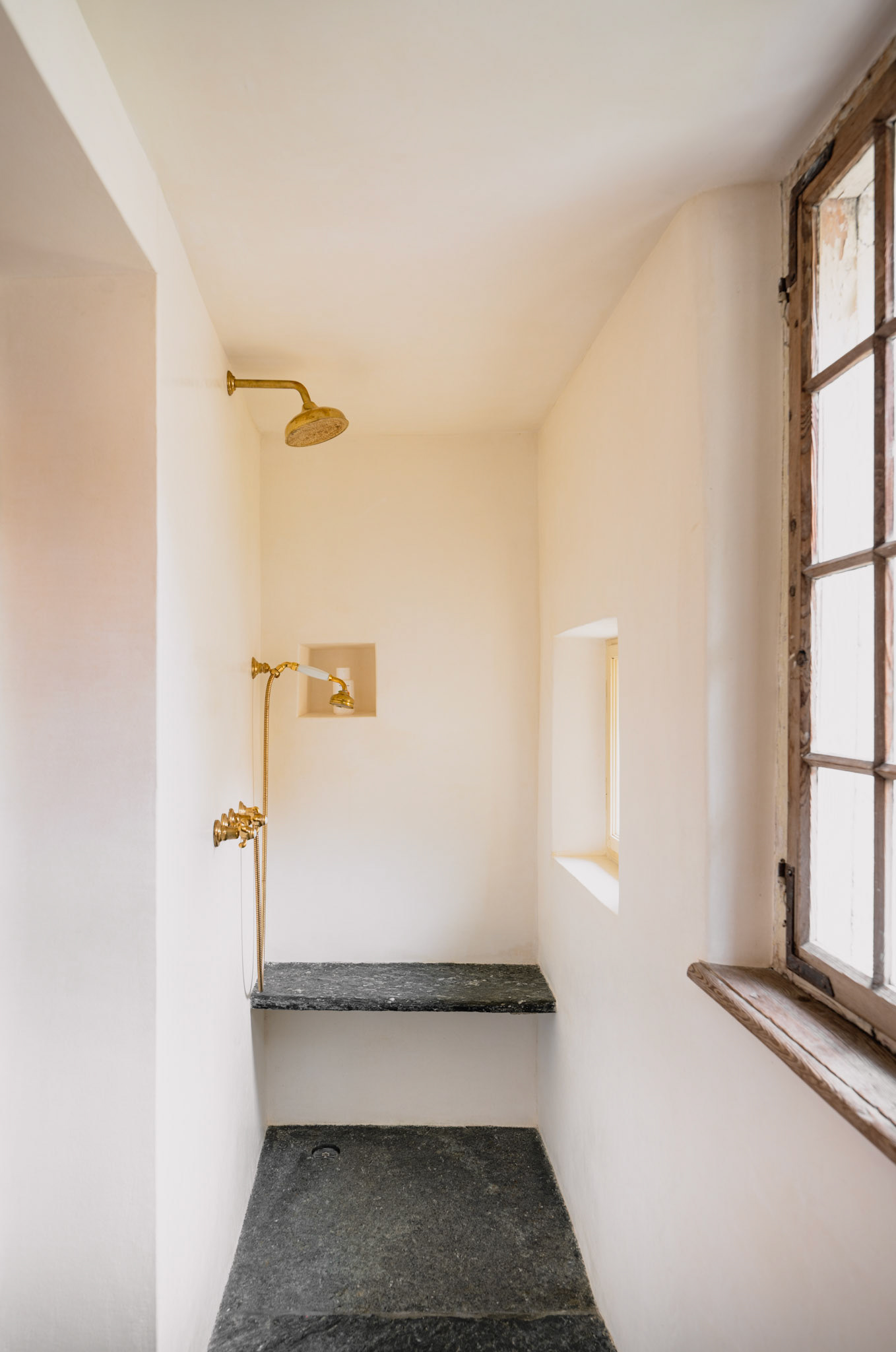
We were immediately charmed by this lived-in building. In addition to the already mentioned small courtyard behind the house, there is also a huge garden in front of it, just across the street. A nearby parking space is also available in case you arrive by car. A bakery, cheese shop and supermarket are just a few steps away so we even could get fresh bread every morning for breakfast (don’t forget to try the brasciadela, a ring bread and specialty from Poschiavo). There are some local products that we discovered during our week and loved: the ice cream from the Hotel-Bistro Semadeni, the pasta from Molino & Pastificio and the beer from Birraria Poschiavina. The last two also make some great gifts for friends and family at home !
Exploring Poschiavo
Terraces of Poschiavo
A great way to start exploring Poschiavo is on a walk to the Runchett da Sotsassa viewpoint. The walk leads up through the terraces that were once used to grow fruits and vegetables and allows great views on the town and its different buildings. Some benches along the way invite you to simply enjoy the view.
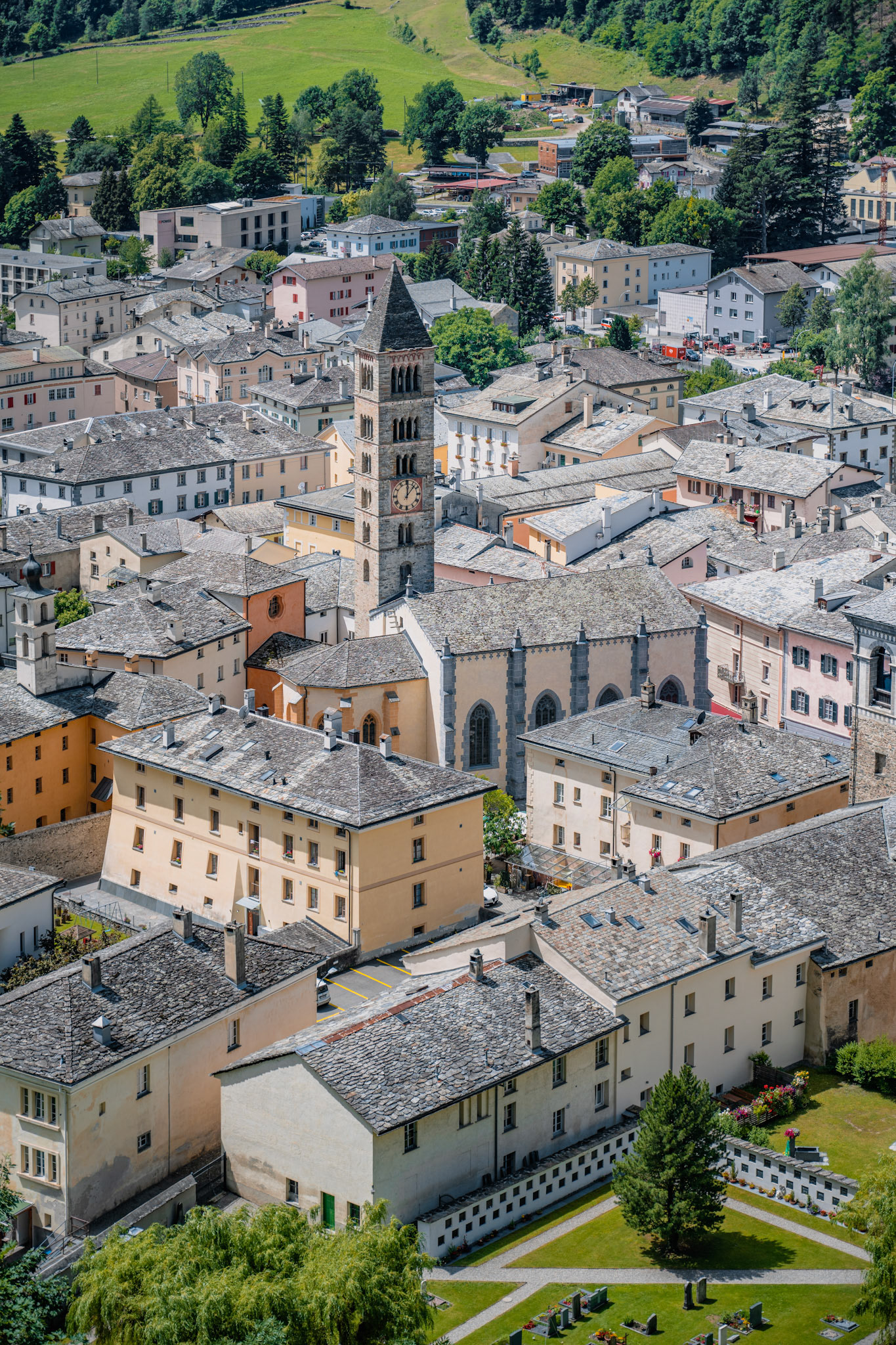
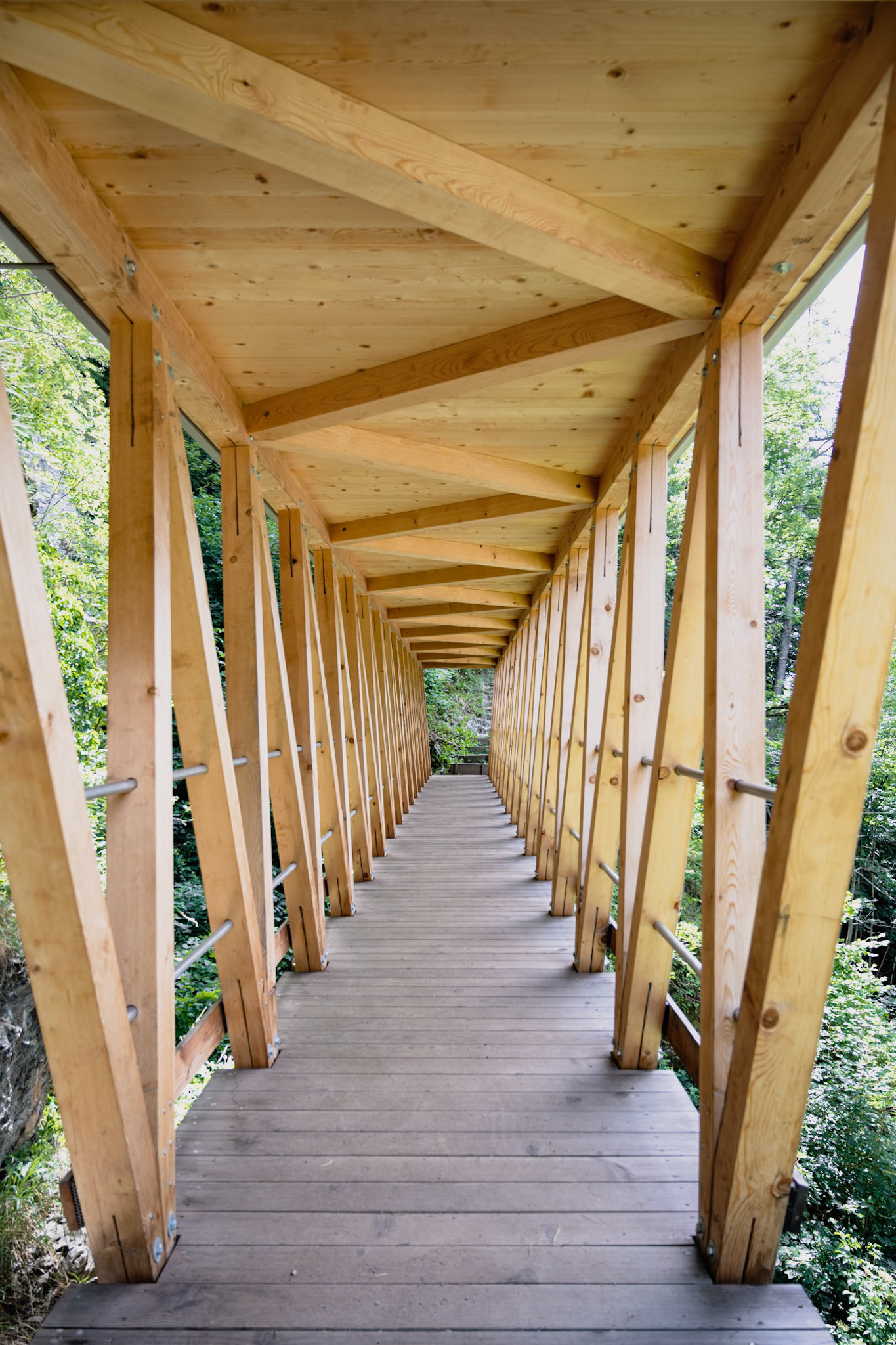
Once back in town, let’s explore some of its fascinating buildings.
Collegiata di San Vittore
The construction of the Collegiata di San Vittore Mauro began in the 12th century and the tower was erected in the first half of the 13th century. The church was rebuilt and expanded again and again, with the baroque-style building work essentially finished in 1653.
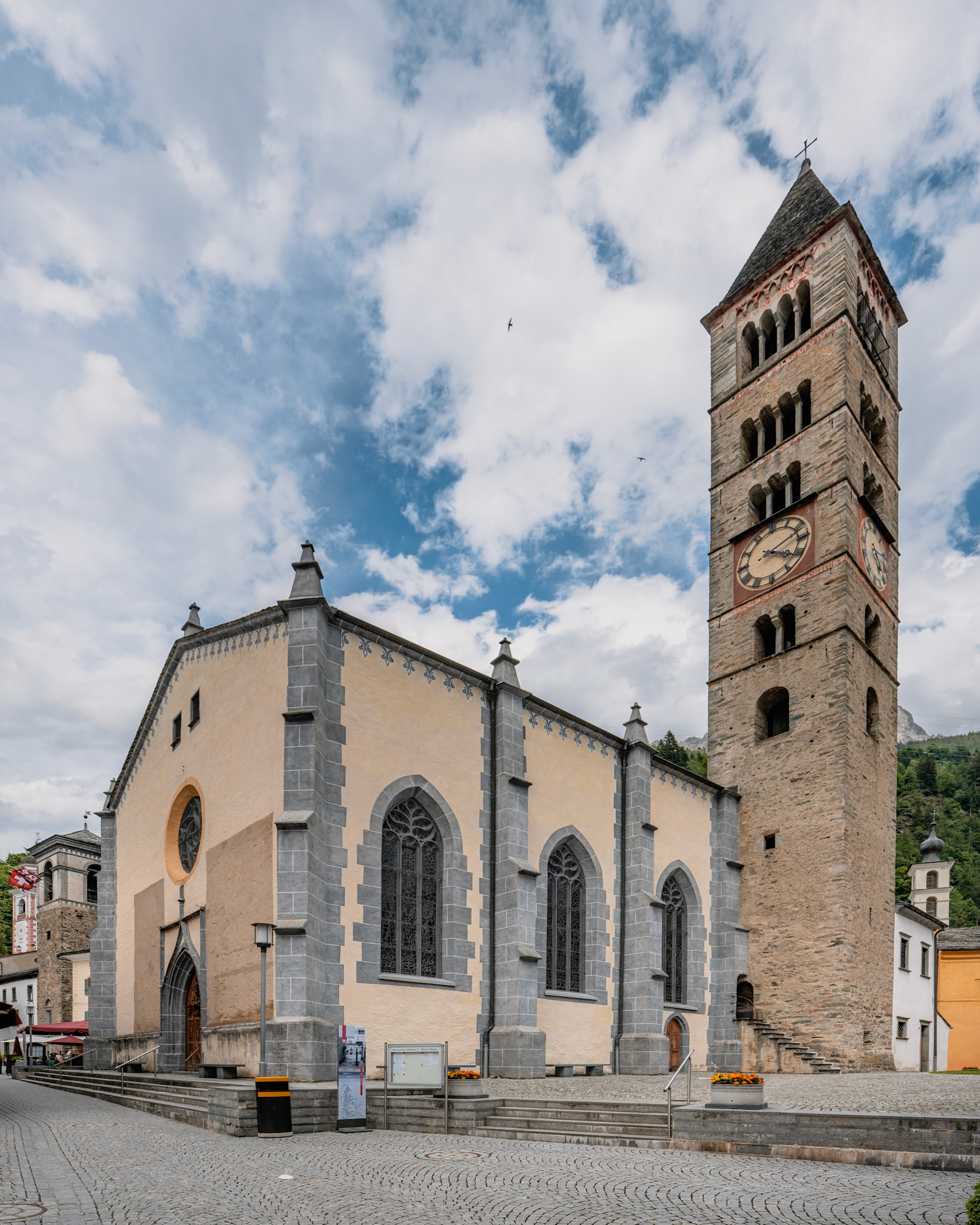
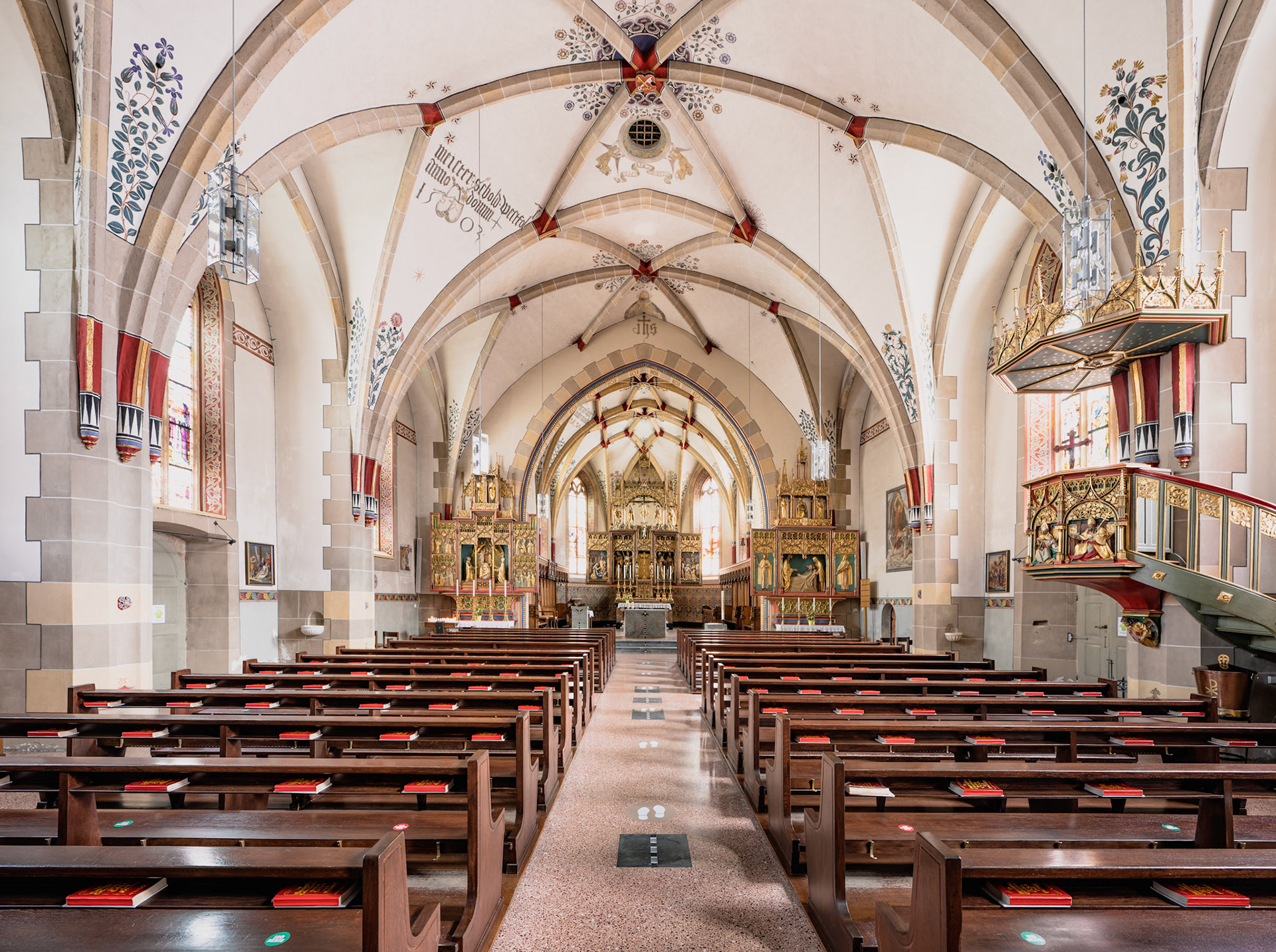
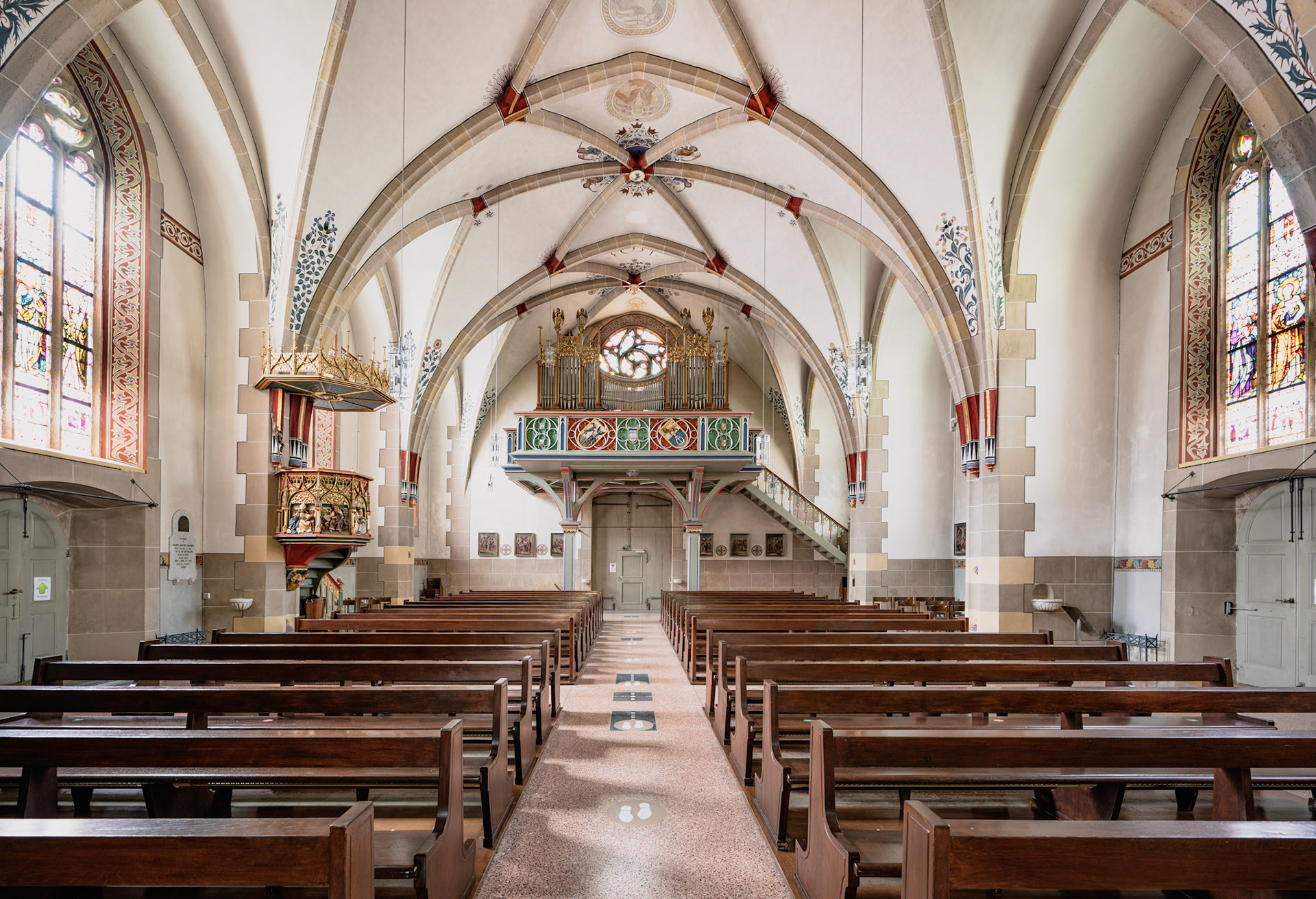
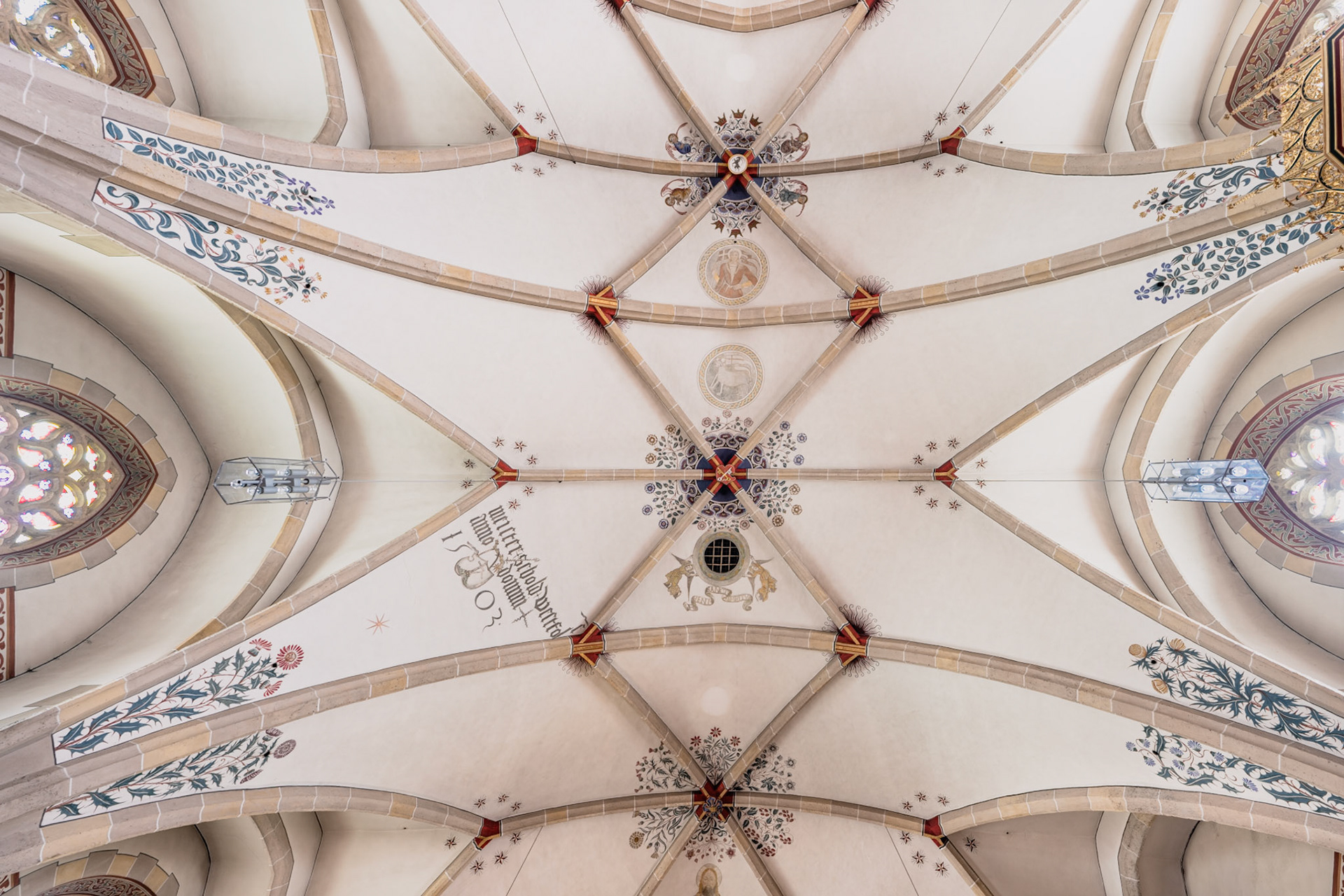
Right next to it is located the Oratorio di Sant’Anna.
Oratorio di Sant'Anna
The oratory ( Ossario E Chìesa Di Sant Anna) dates back to 1439 and was transformed into its current shape in 1732. The interior contains 18th and 19th century stuccoes and paintings. In 1903, the loggia of the oratory was converted into an ossuary. It can be visited on Wednesday afternoons.
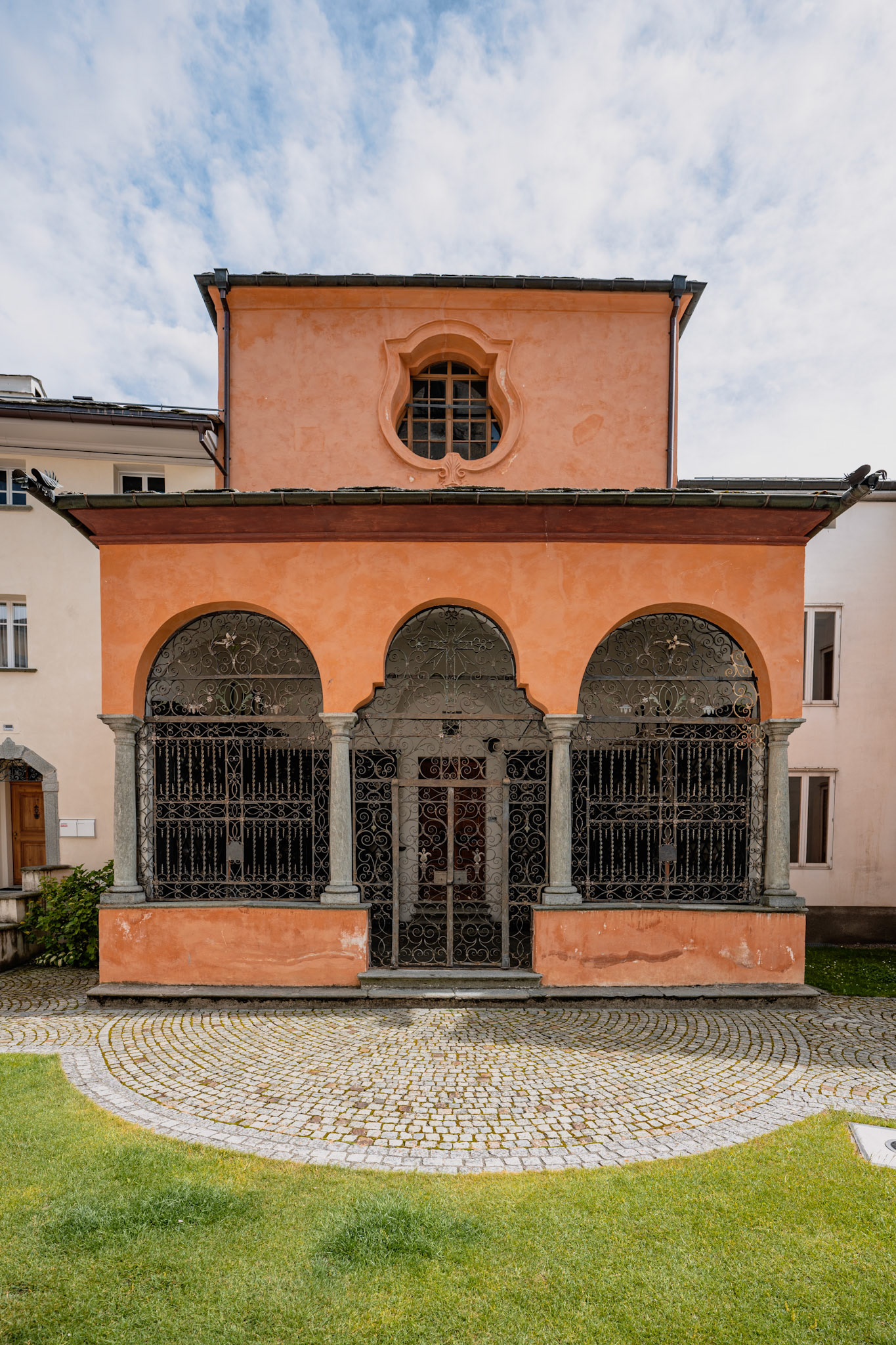
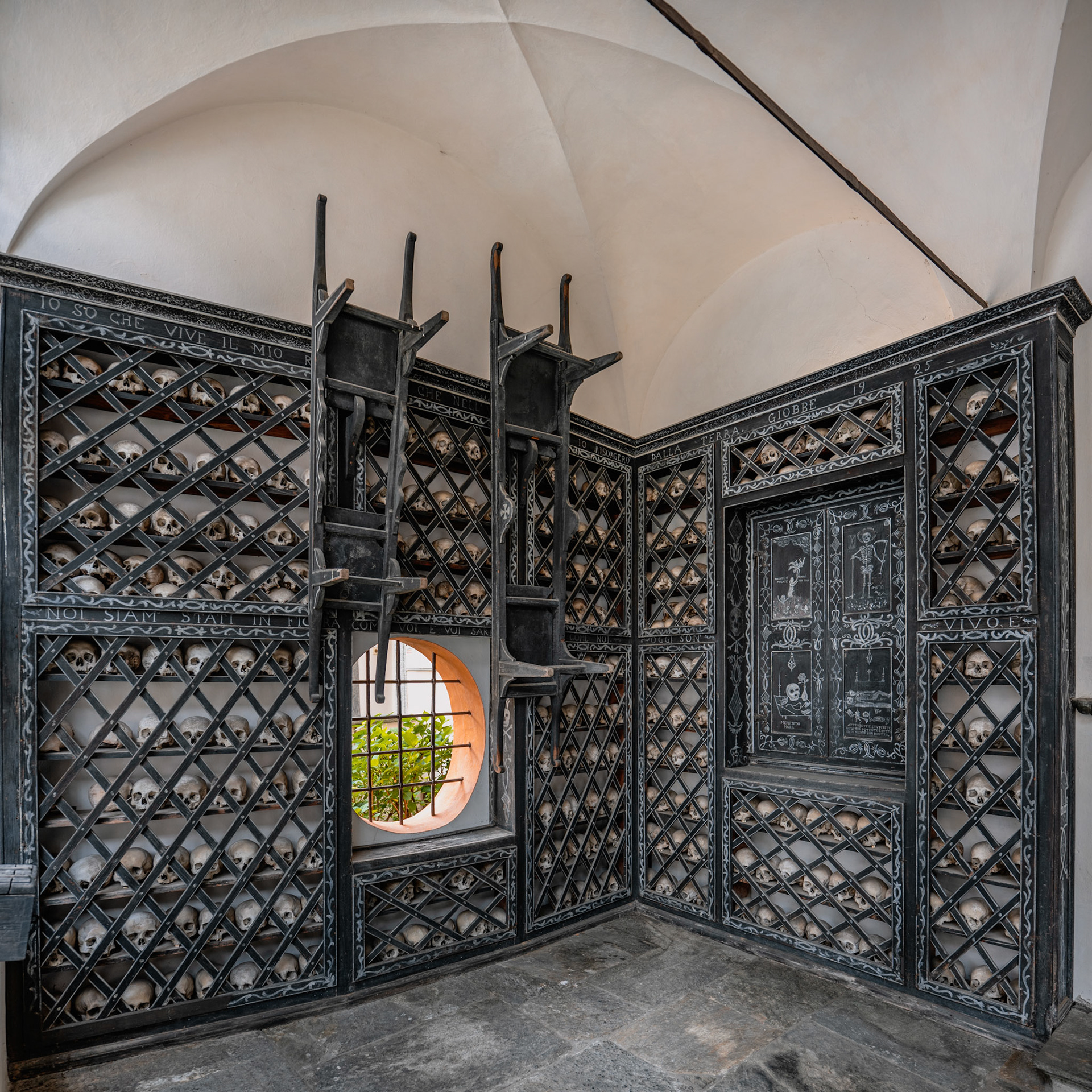
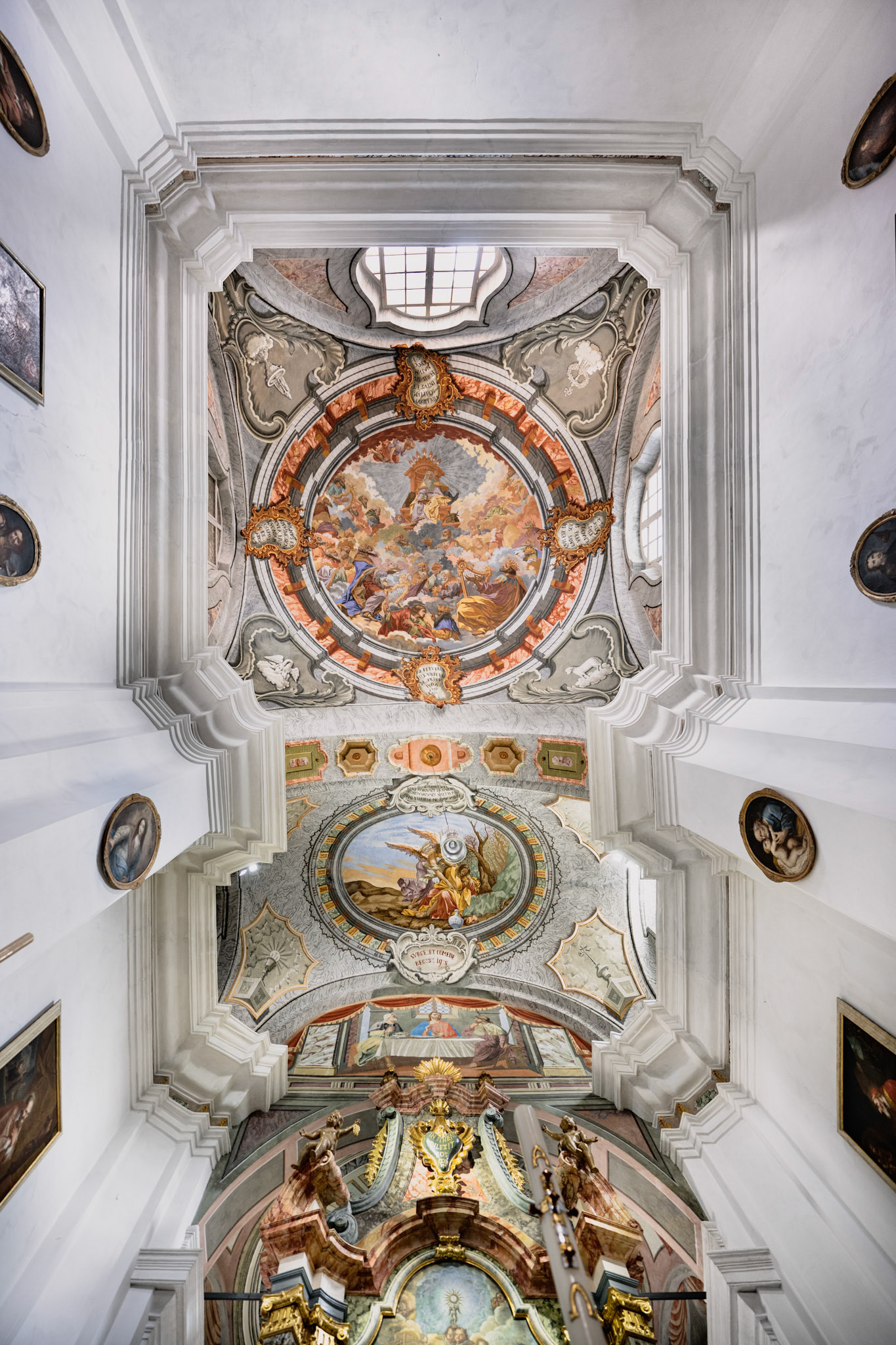
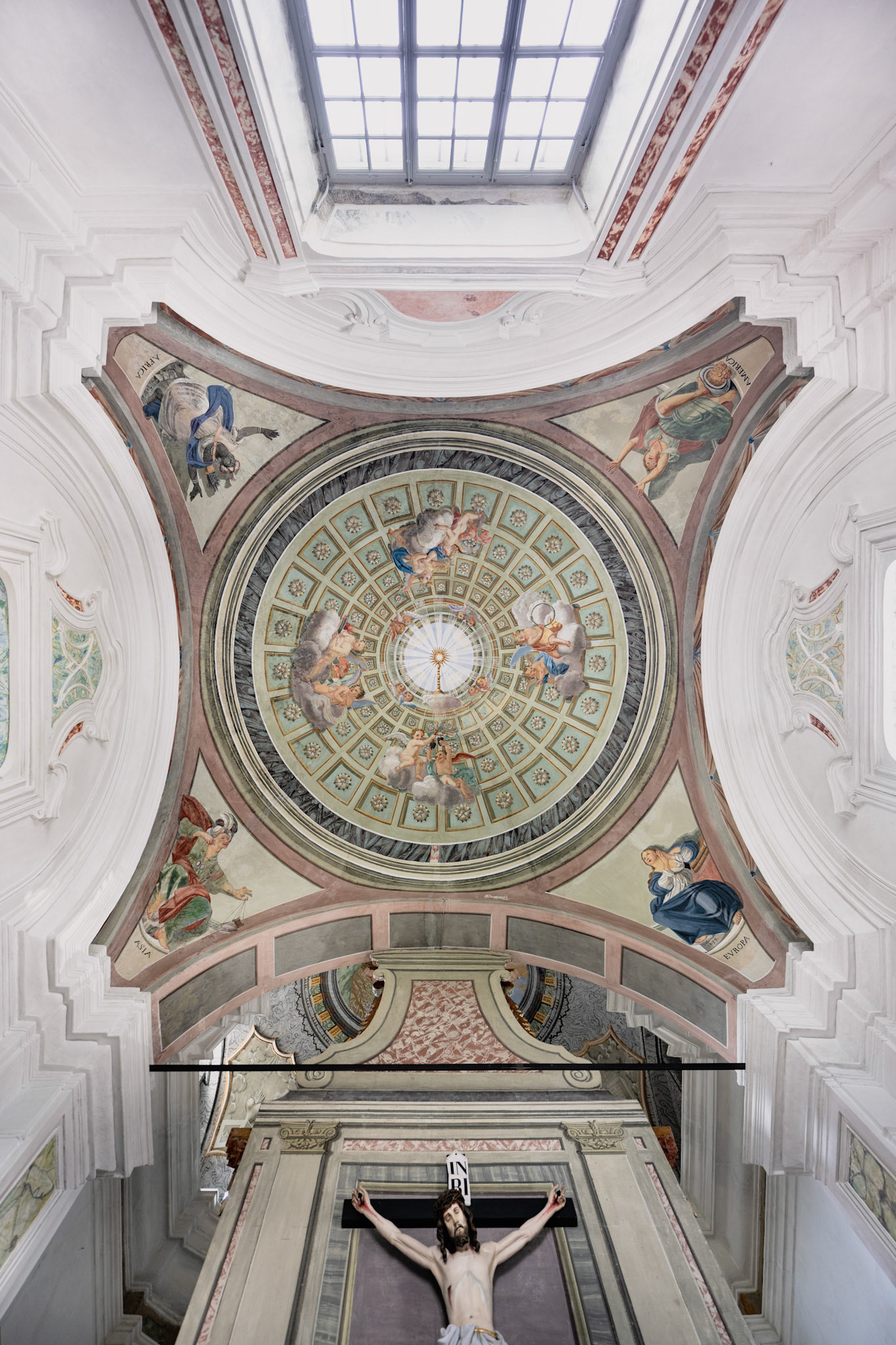
Crossing the river, you’ll be right next to the local history museum.
Museo Poschiavino
The Museo poschiavino is located inside the Palazzo de Bassus-Mengotti. Tommaso de Bassus, a powerful politician from Poschiavo, had the palazzo built in 1655. In 1701, it was sold to Lorenzo Mengotti and the chapel was consecrated in 1731.
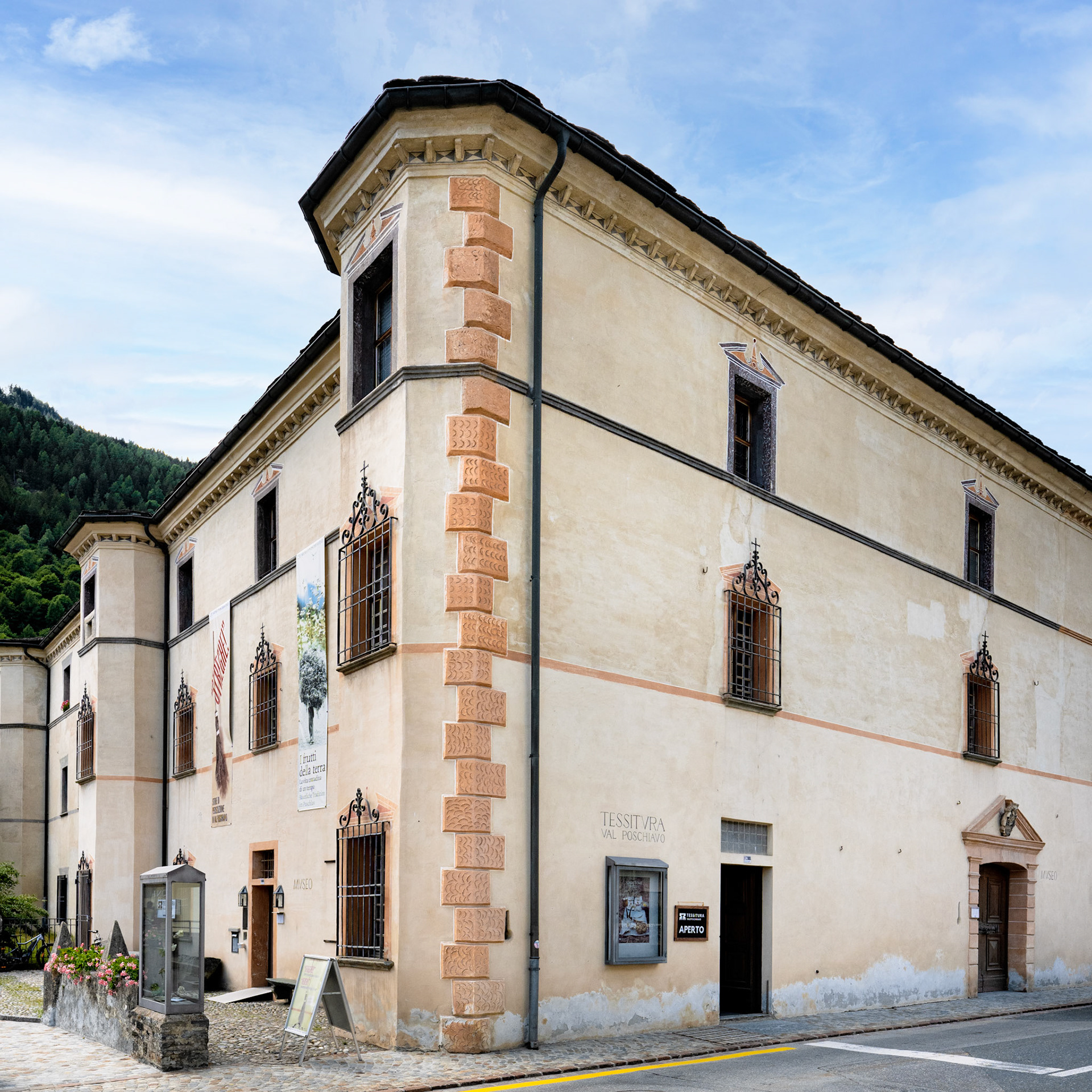
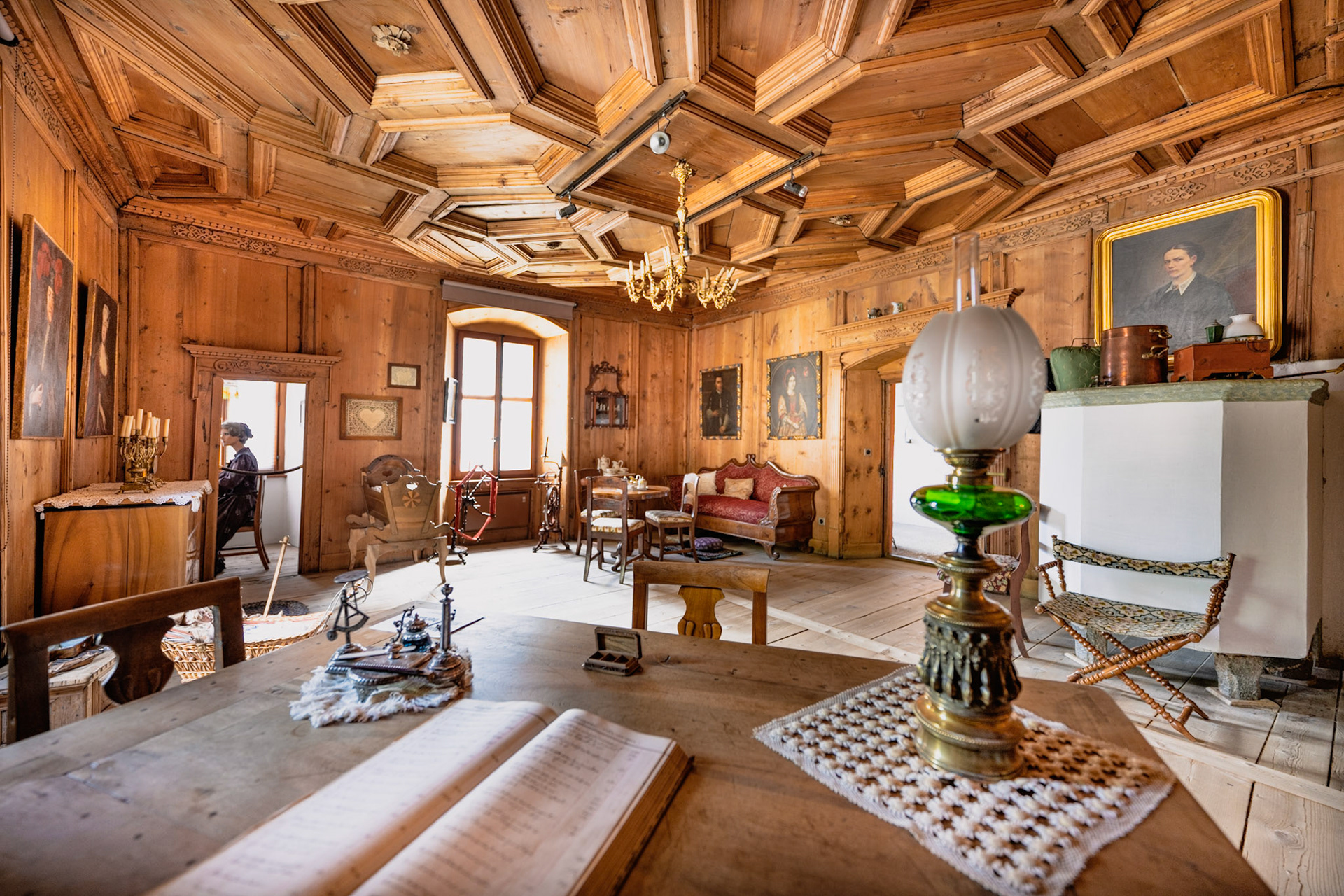
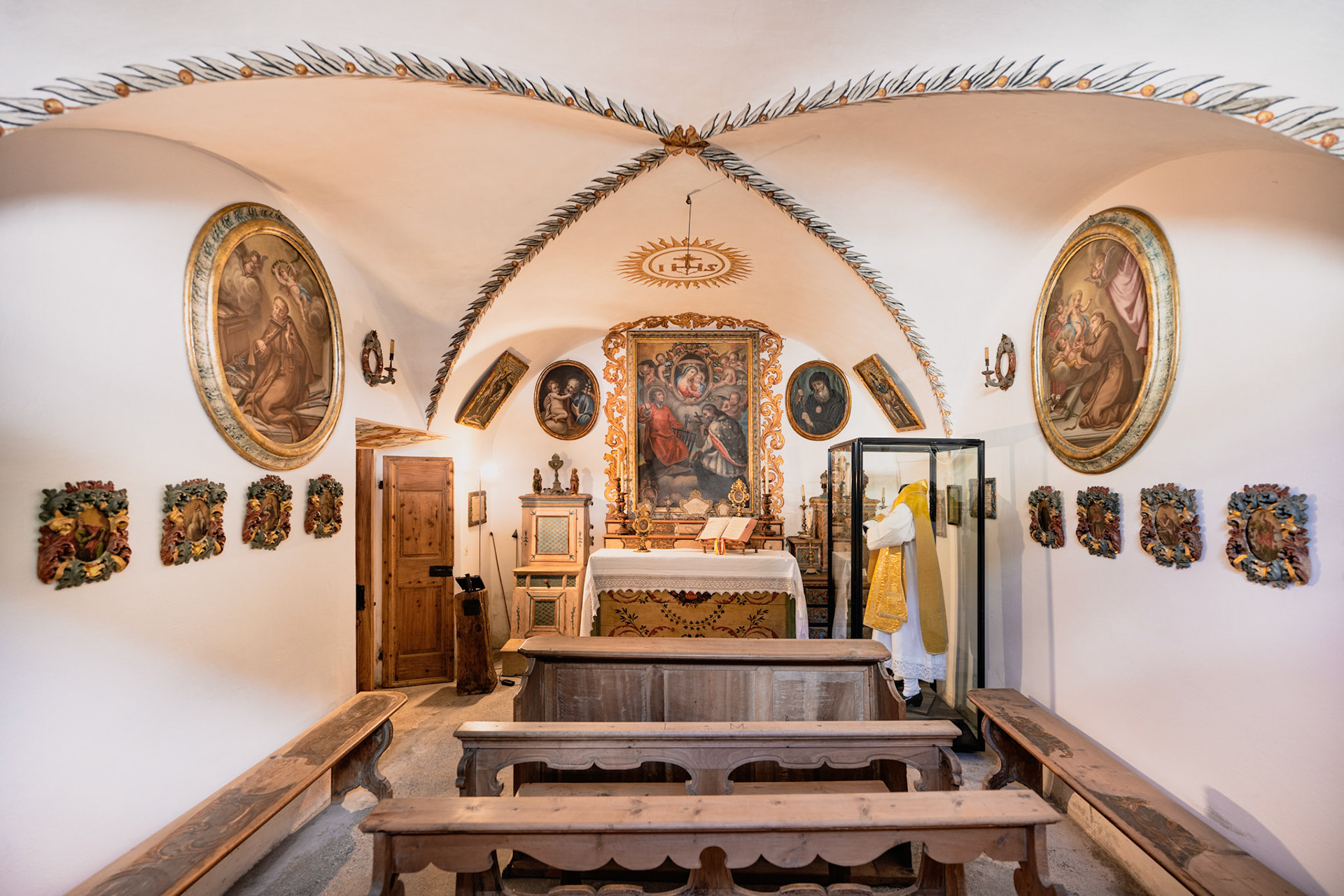
The museum has a very interesting exhibition on the Grisons Pastry Makers and the emigration of local residents.
From here, it’s a short walk to Valposchiavo Turismo right next to the train station, where you can obtain the keys for two additional churches:
San Pietro
The construction year of the Romanesque Kapelle San Pietro is unknown. The colorful Renaissance paintings date from 1538.
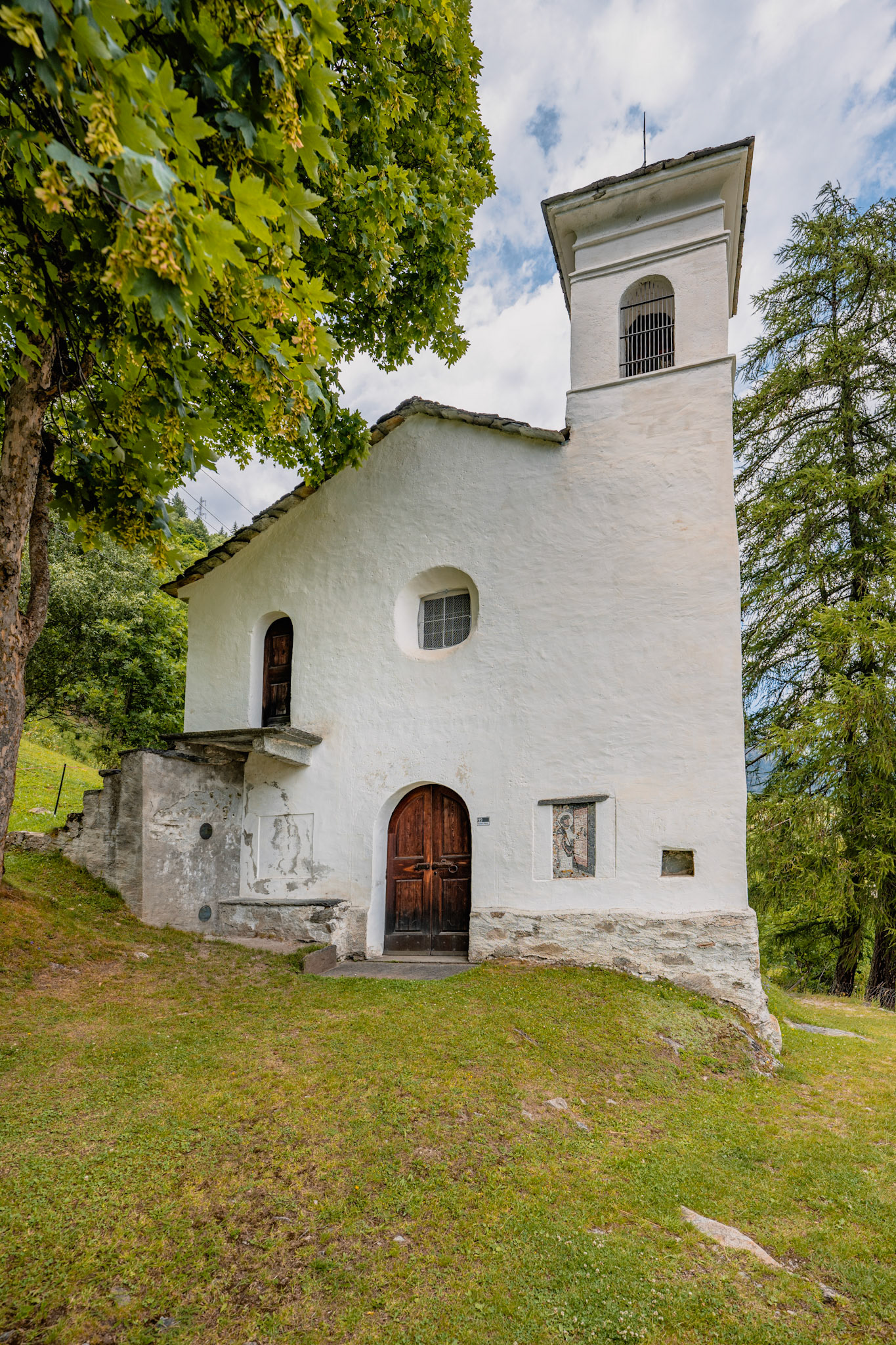
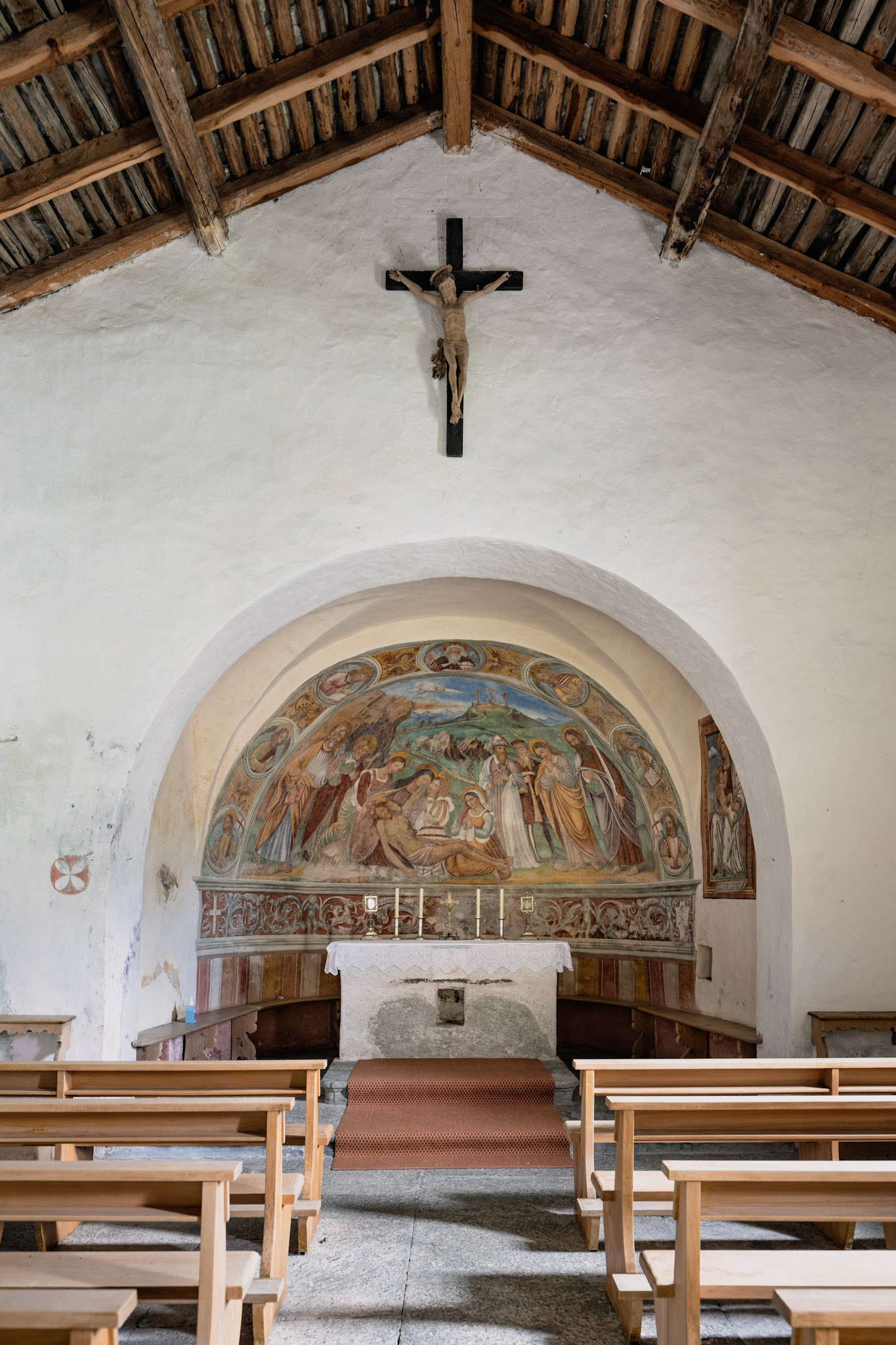
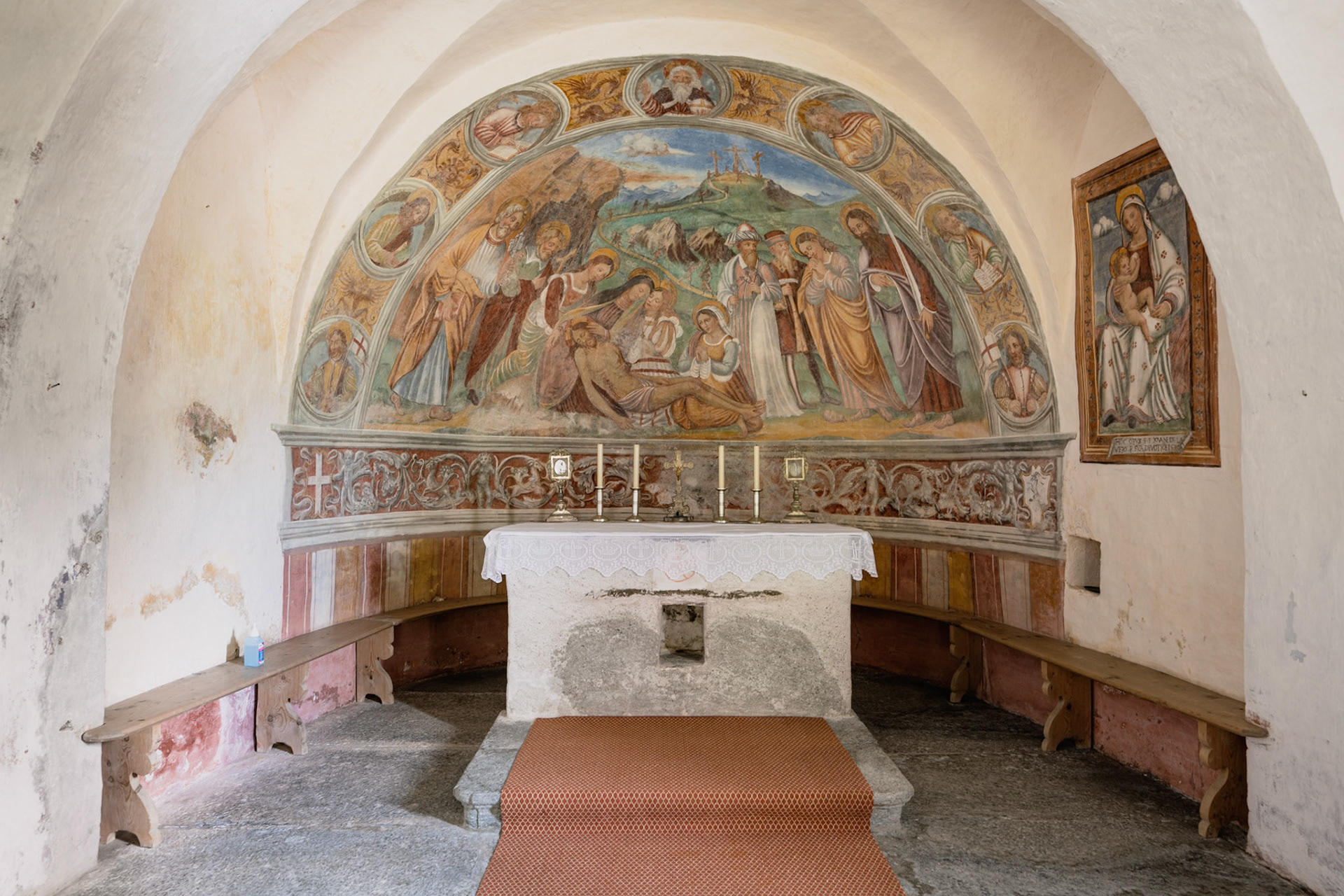
The other church is Chiesa di Santa Maria Assunta and on your way there, you’ll pass through Palazzi Street.
Palazzi Street
The Palazzi are a 120 meters long, straight row of colourful houses built to plans by Venetian architect Giovanni Sottovia in the second half of the 19th century. They all face south and have gardens on the other side of the street. It’s an interesting contrast to the winding streets of the town center.
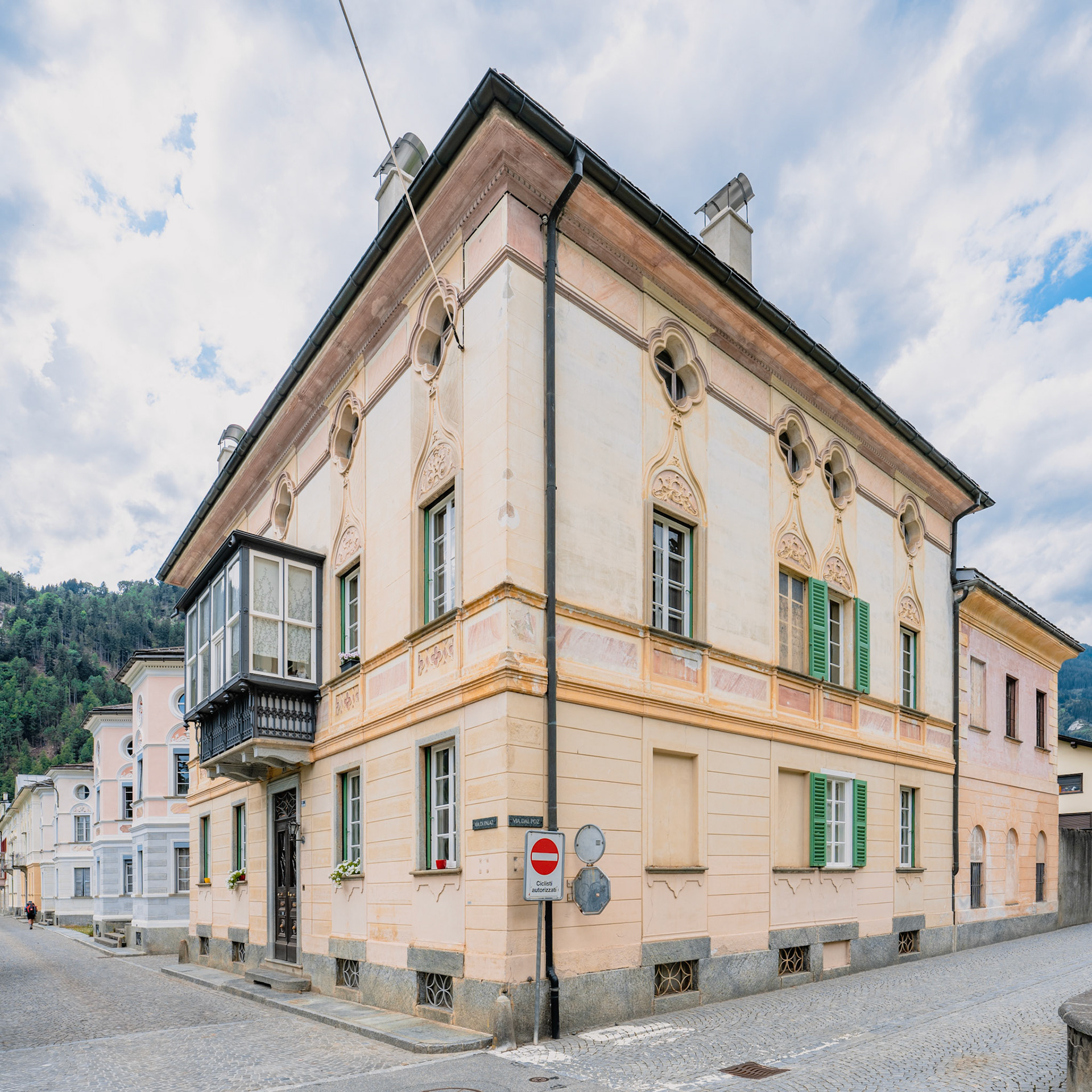
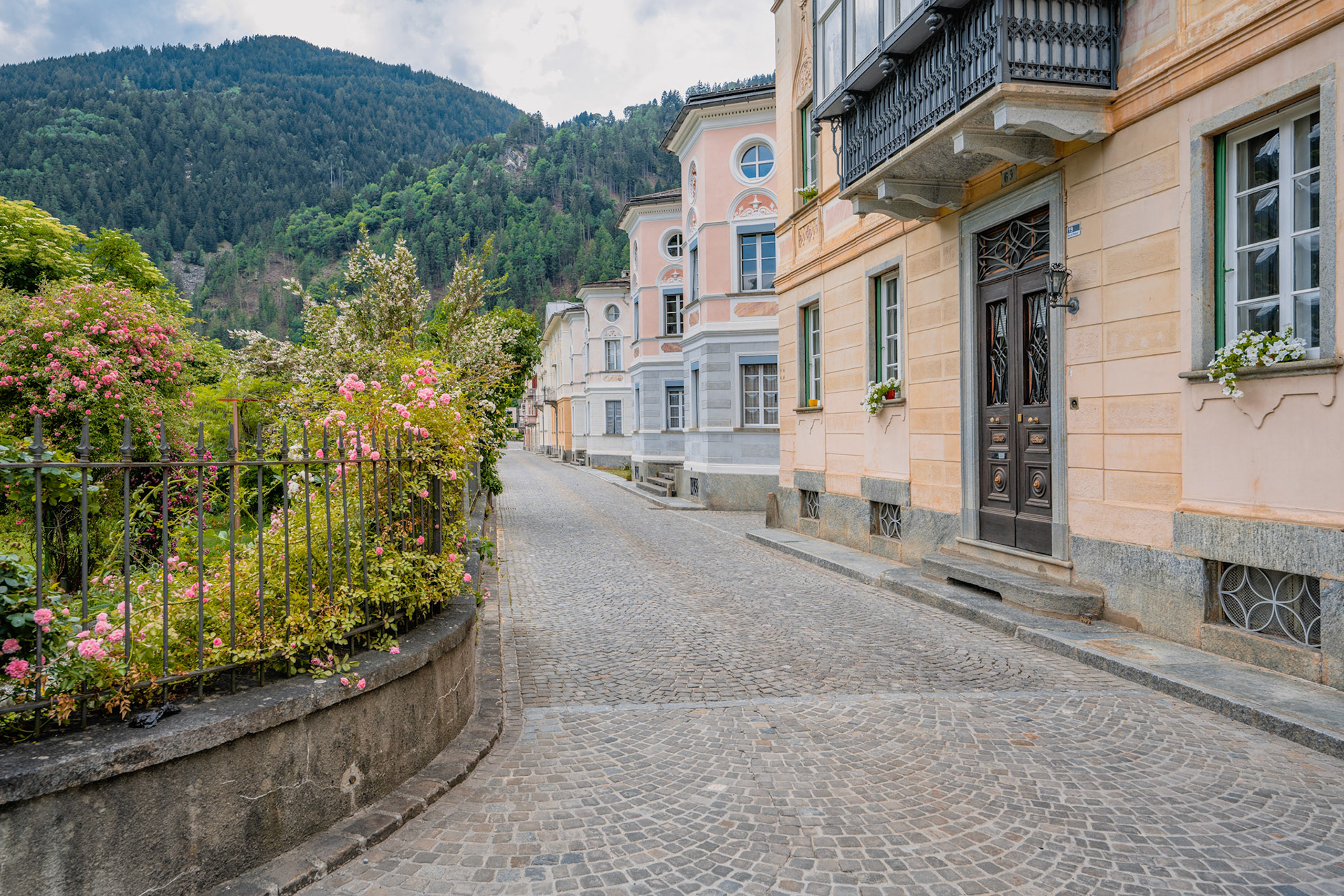
Chiesa di Santa Maria Assunta
The Chiesa Santa Maria Assunta was built in its current Baroque form between 1692 and 1709. It is located on a small artificial terrace slightly outside downtown and has a very interesting style with an octagonal dome at its centre.
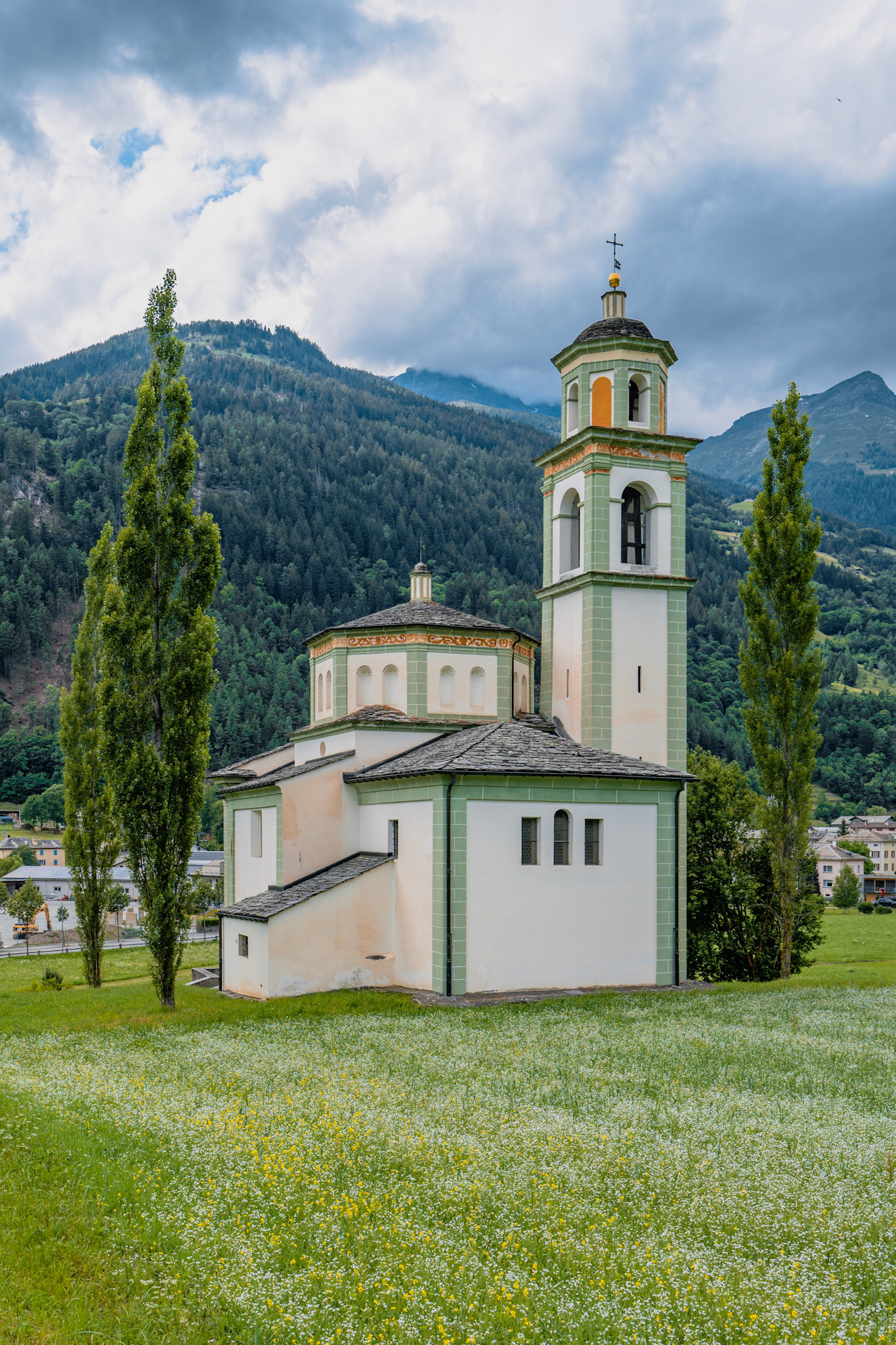
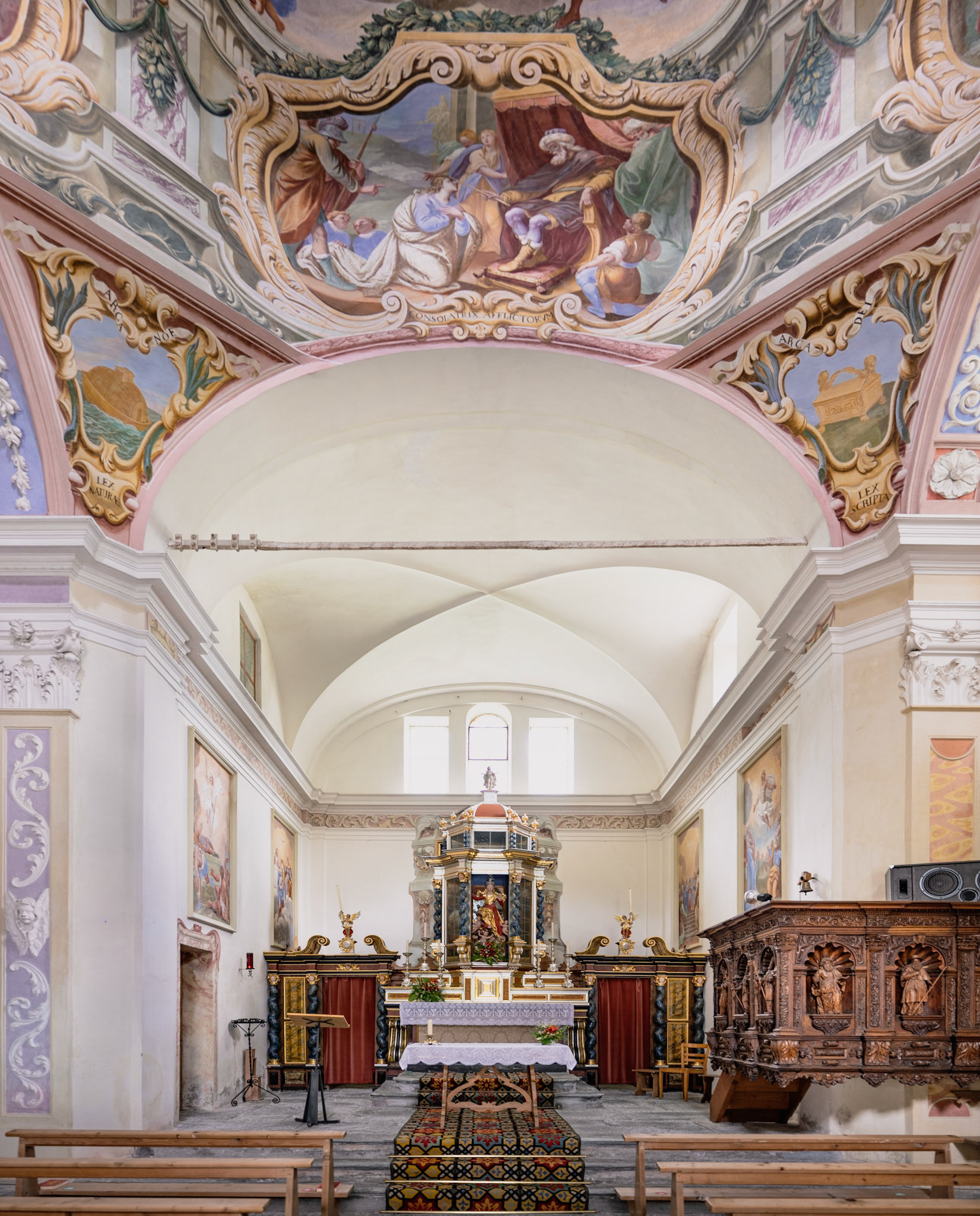
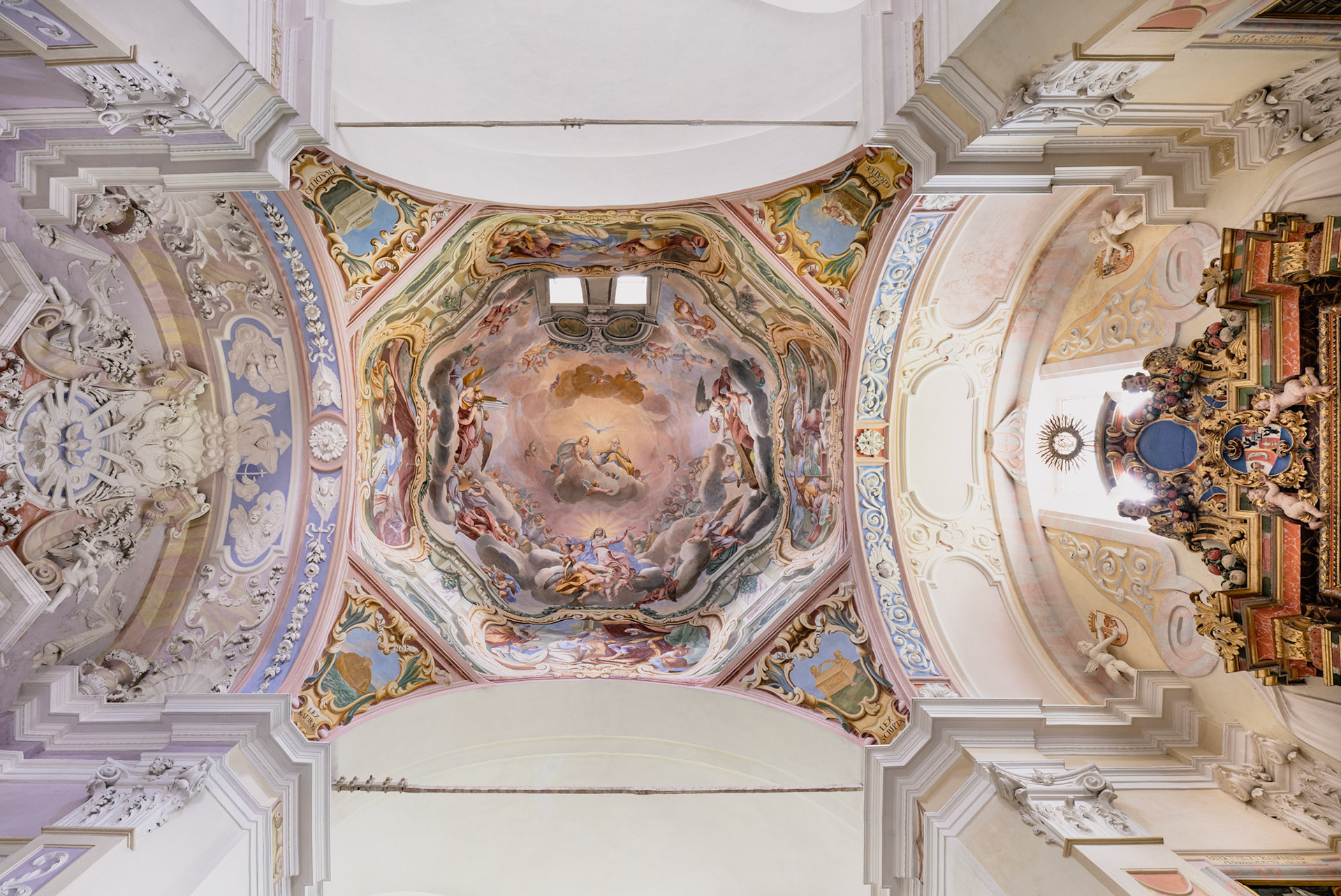
Art in Poschiavo
Museo Casa Console
The art Museum Museo Casa Console is housed inside a building constructed by Antonio Semadeni in 1856. Antonio Semandeni was a skilled and successful pastry chef from Poschiavo who emigrated to Poland. He later also exercised the function of consul of Switzerland in Warsaw, hence the name of his home: Casa Consul.
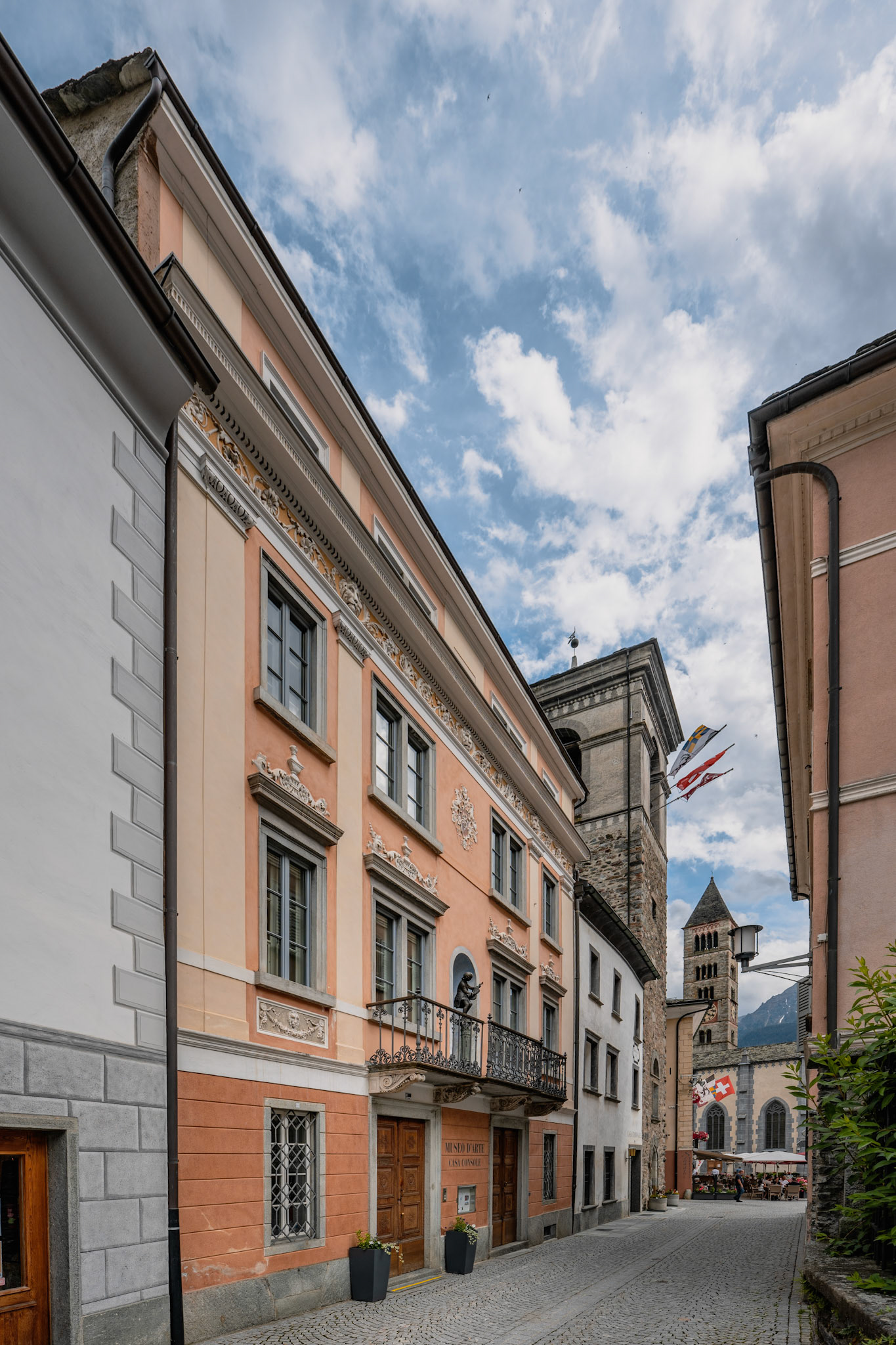
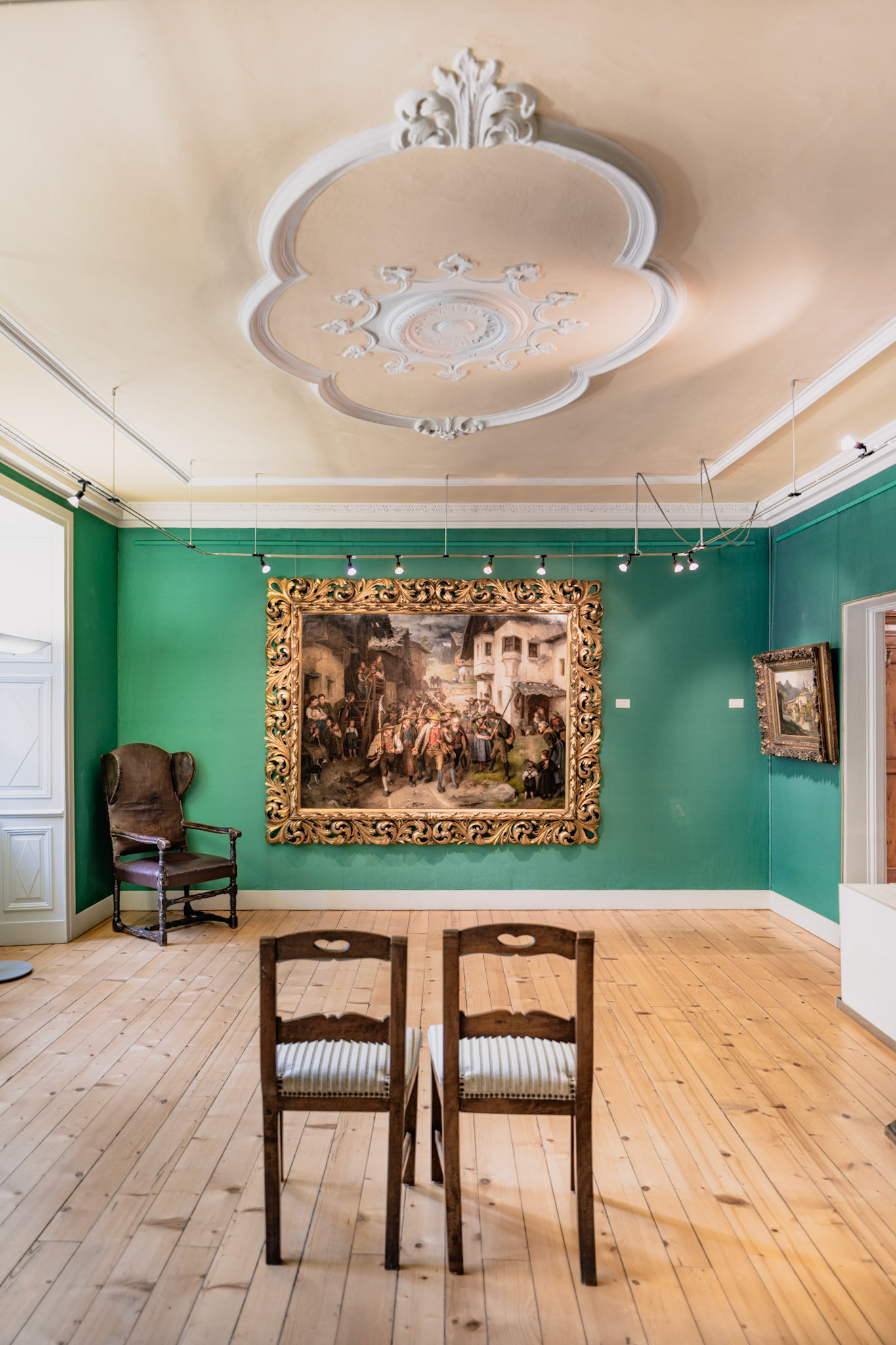
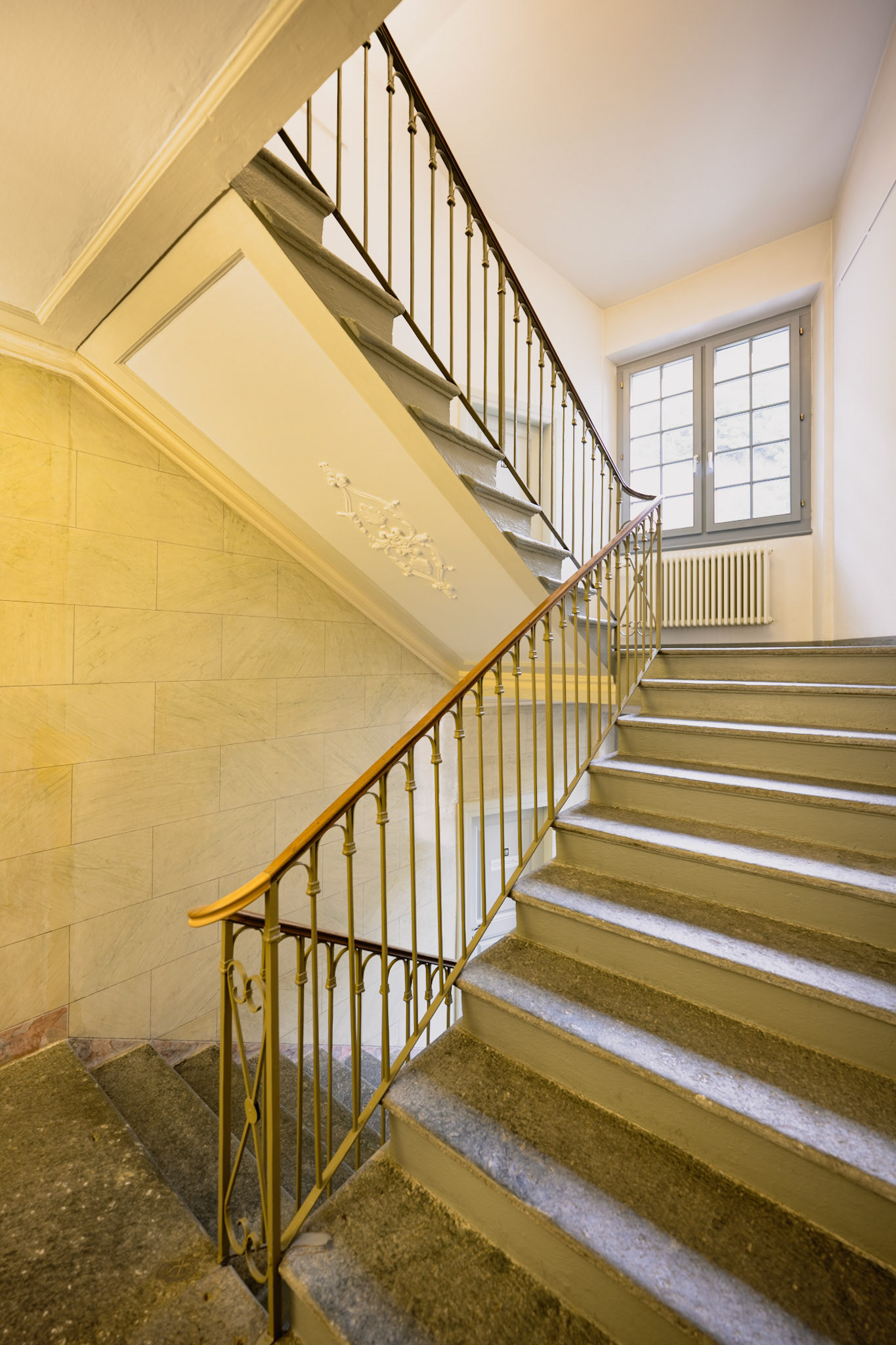
Glaser/Kunz
Magdalena Kunz and Daniel Glaser, owners of the Palazzo Glaser/Kunz, live in Zurich. In their atelier they developed the concept of cinematic sculpture, through the fusion of sculpture and video projection.
The historic palazzo not only is an important inspiration, but also an exhibition space for them. While some of their artworks are always visible in the house, such as the Clock in the staircase, some others are in rooms that can be opened upon request.
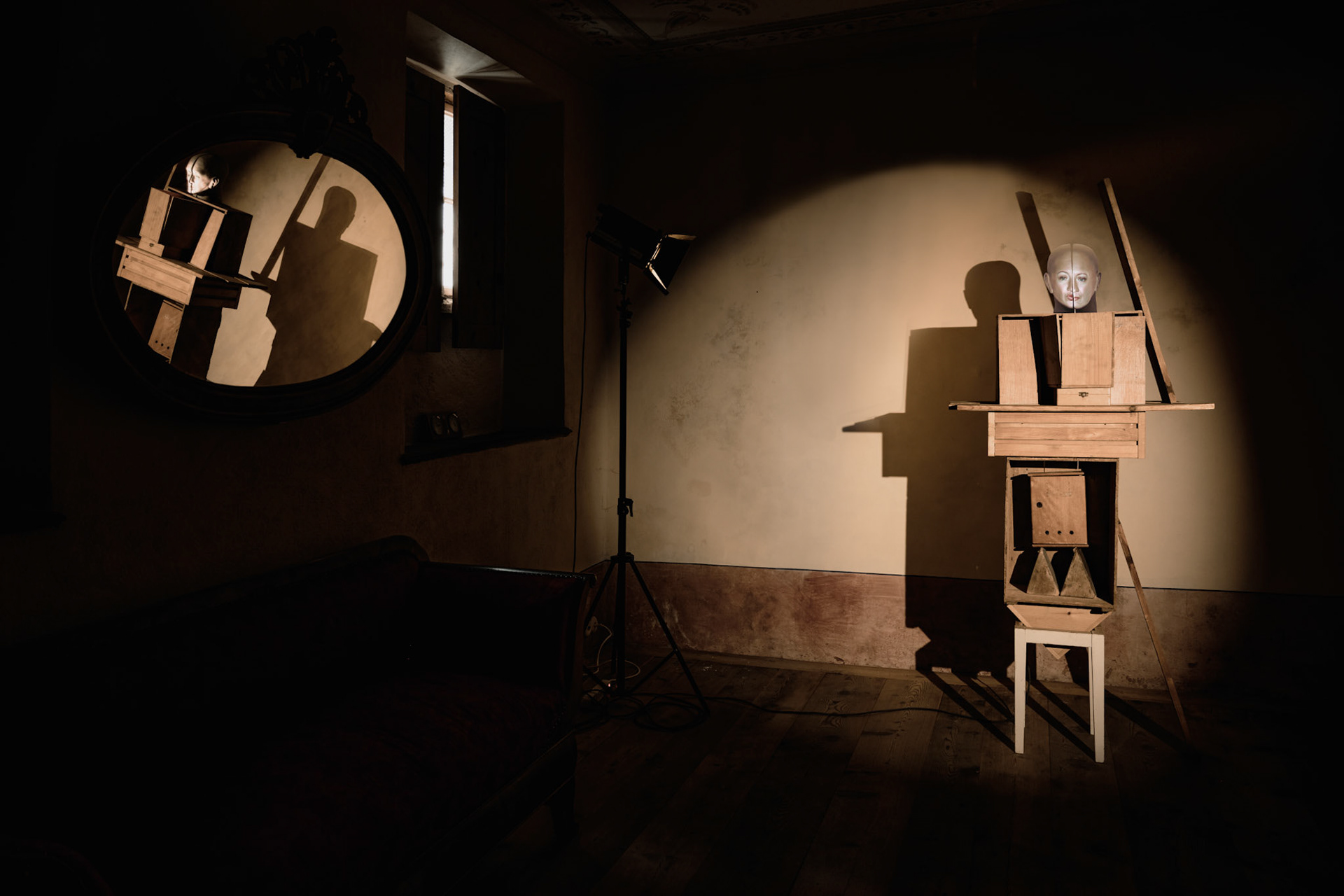
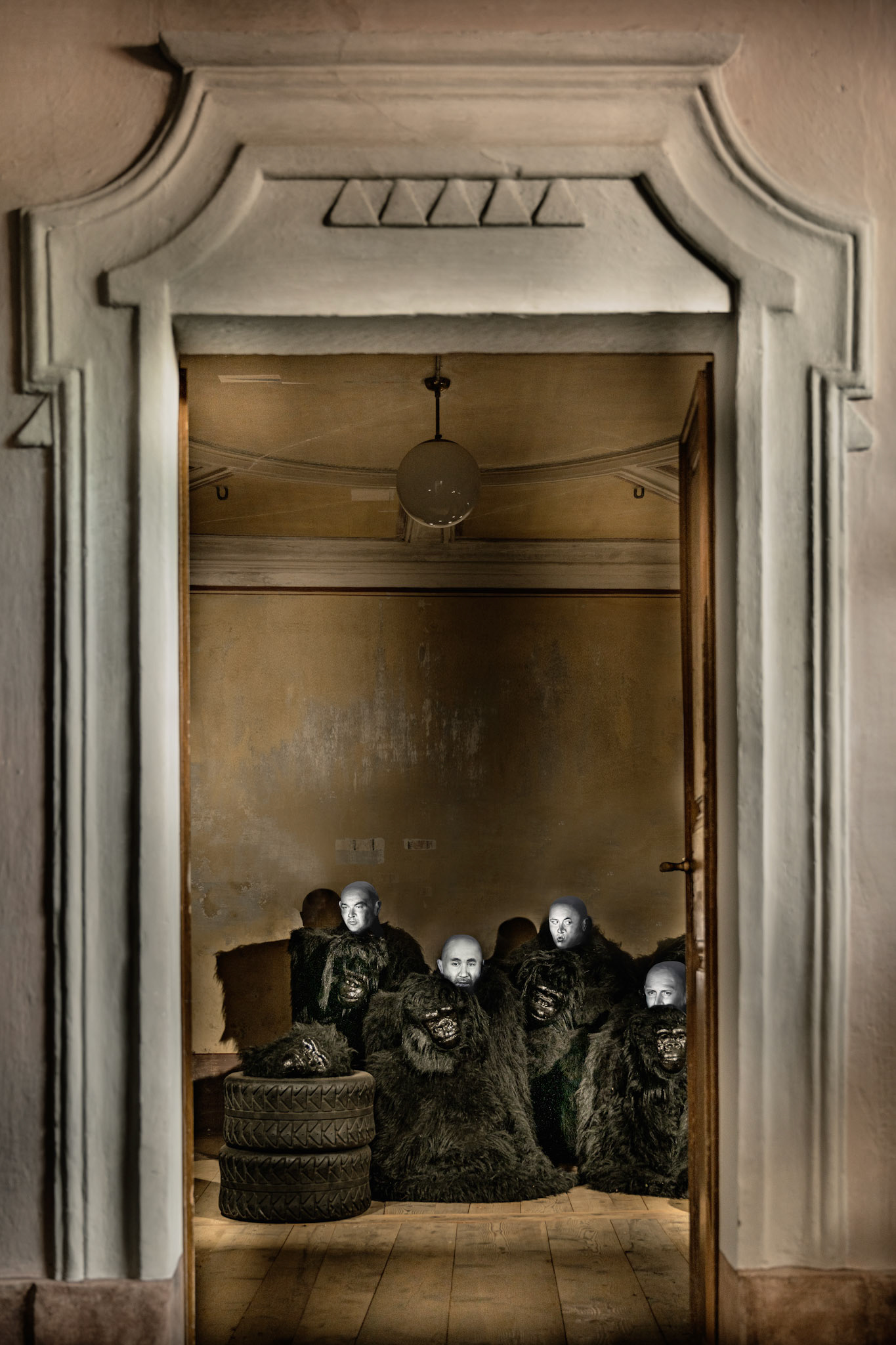
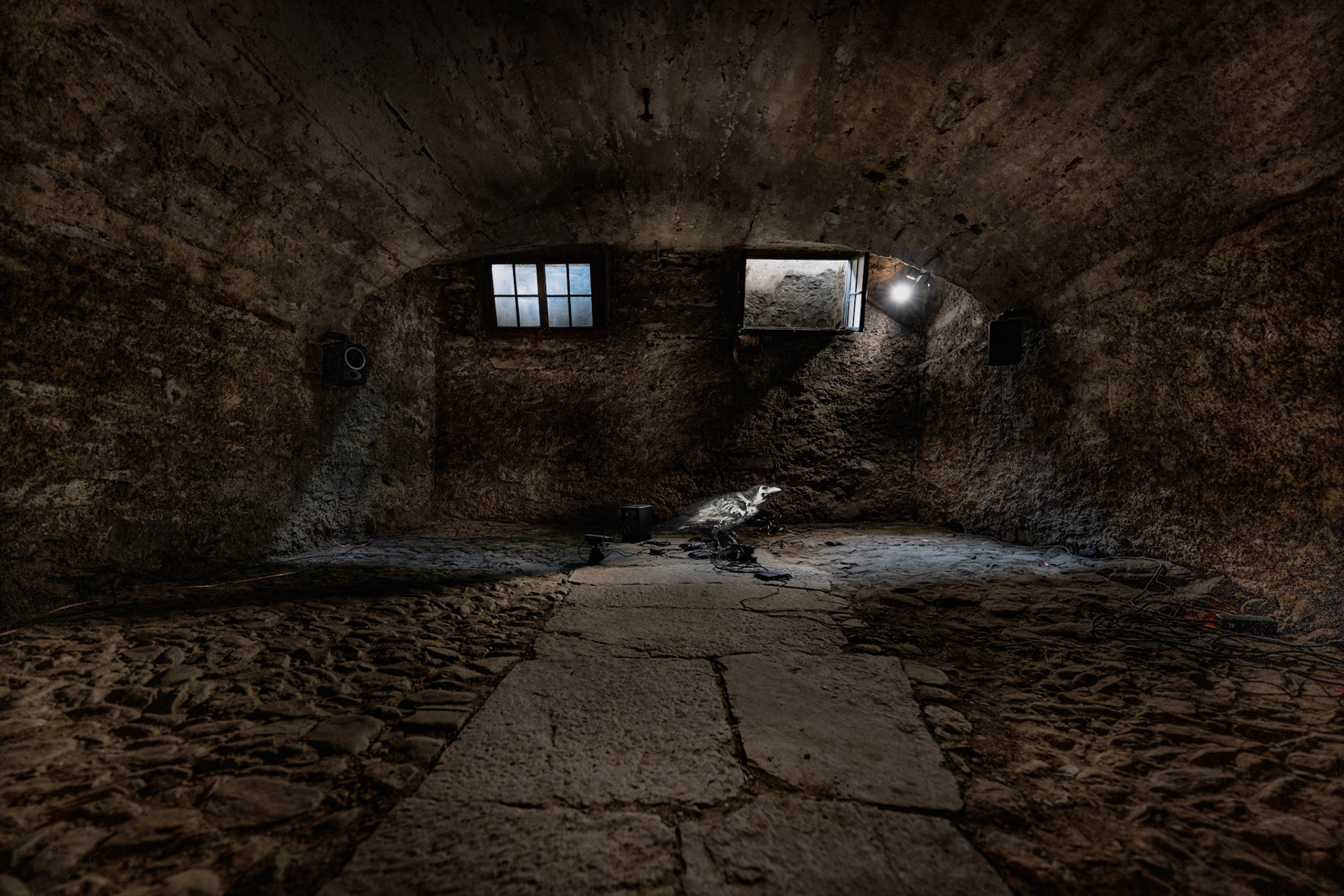
Hiking Tips
Val Poschiavo is a beautiful place for hiking. We went for small hikes of about 10km or less. Let’s start at the top and walk all the way down !
Bernina Pass maintenance base and hiking to Cavaglia
The most comfortable way to get back to the Bernina Pass from Poschiavo is by taking the train.
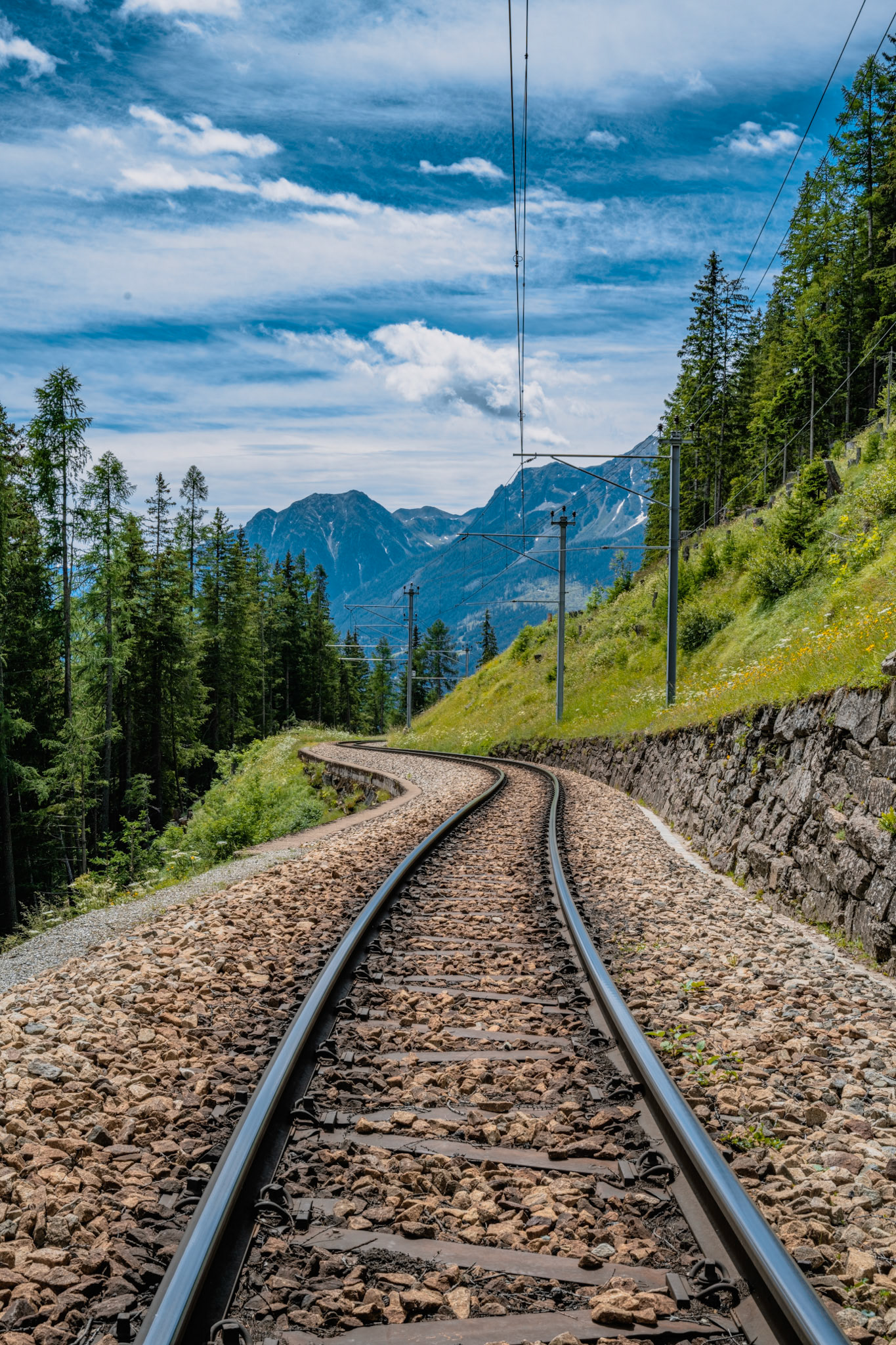
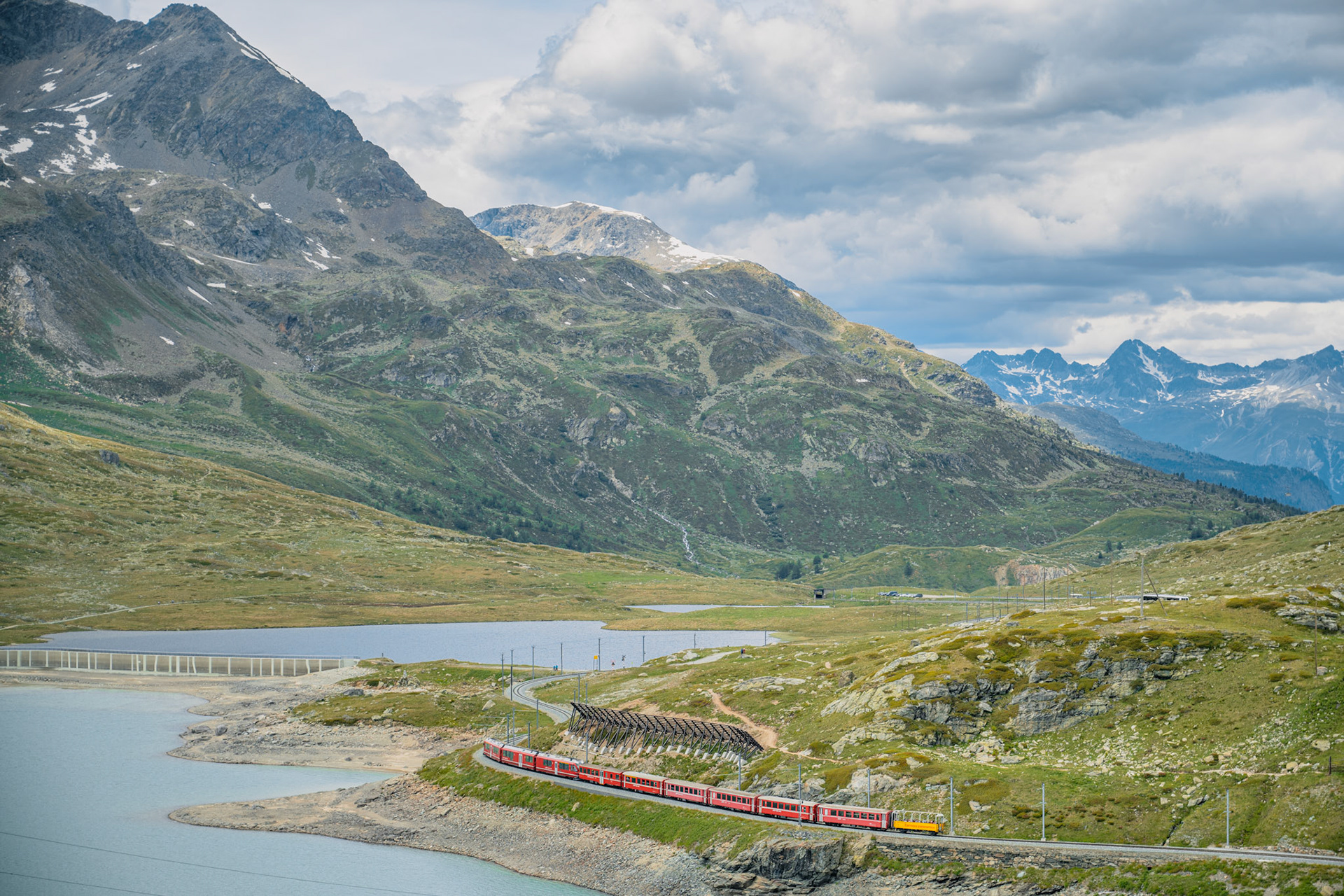
The purpose of the new Bernina Pass maintenance base, completed in 2019, is to keep Val Poschiavo connected with the rest of Switzerland all year round, clearing the snow from the Bernina pass. On top of the silo for gravel and salt, a camera obscura was installed.

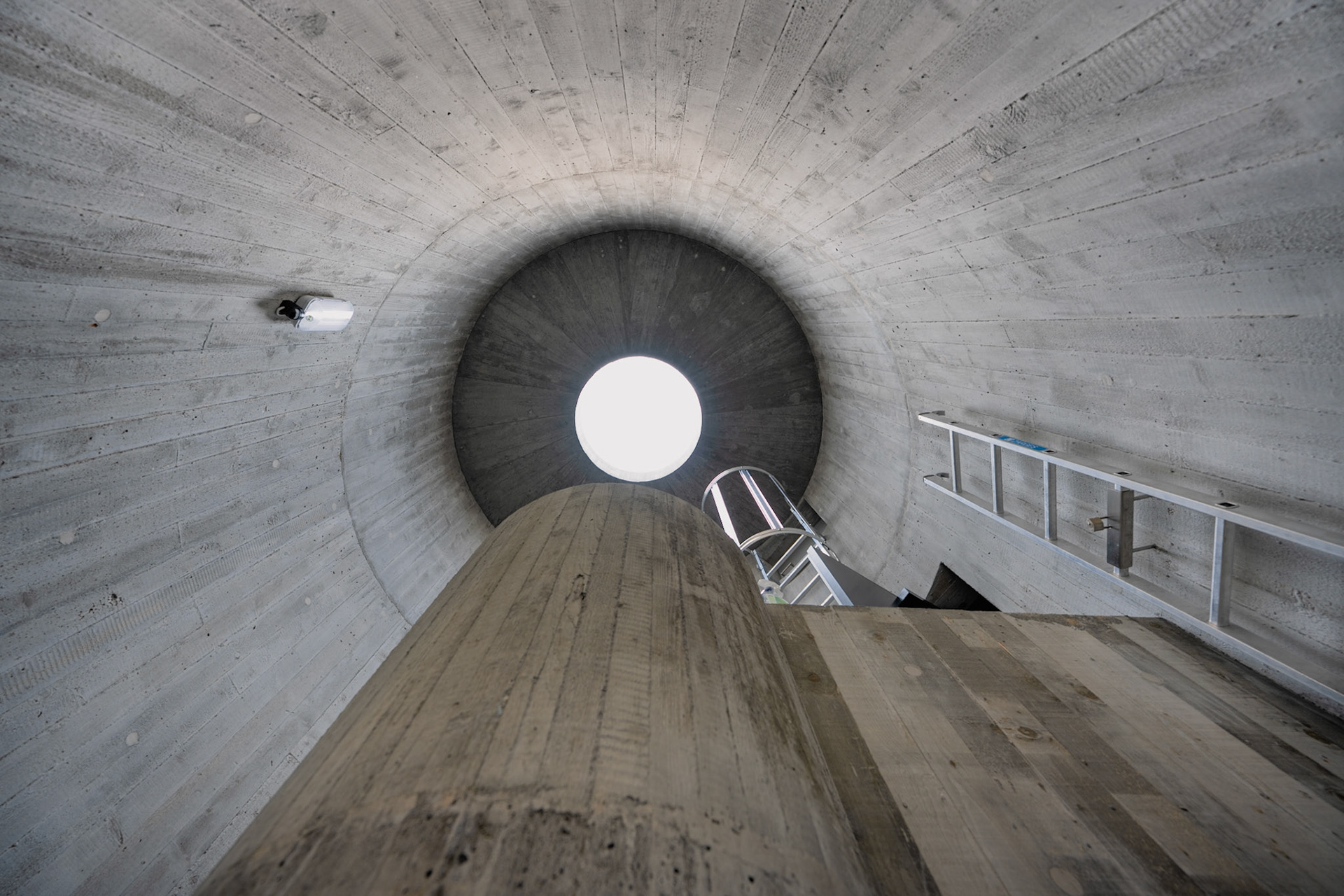
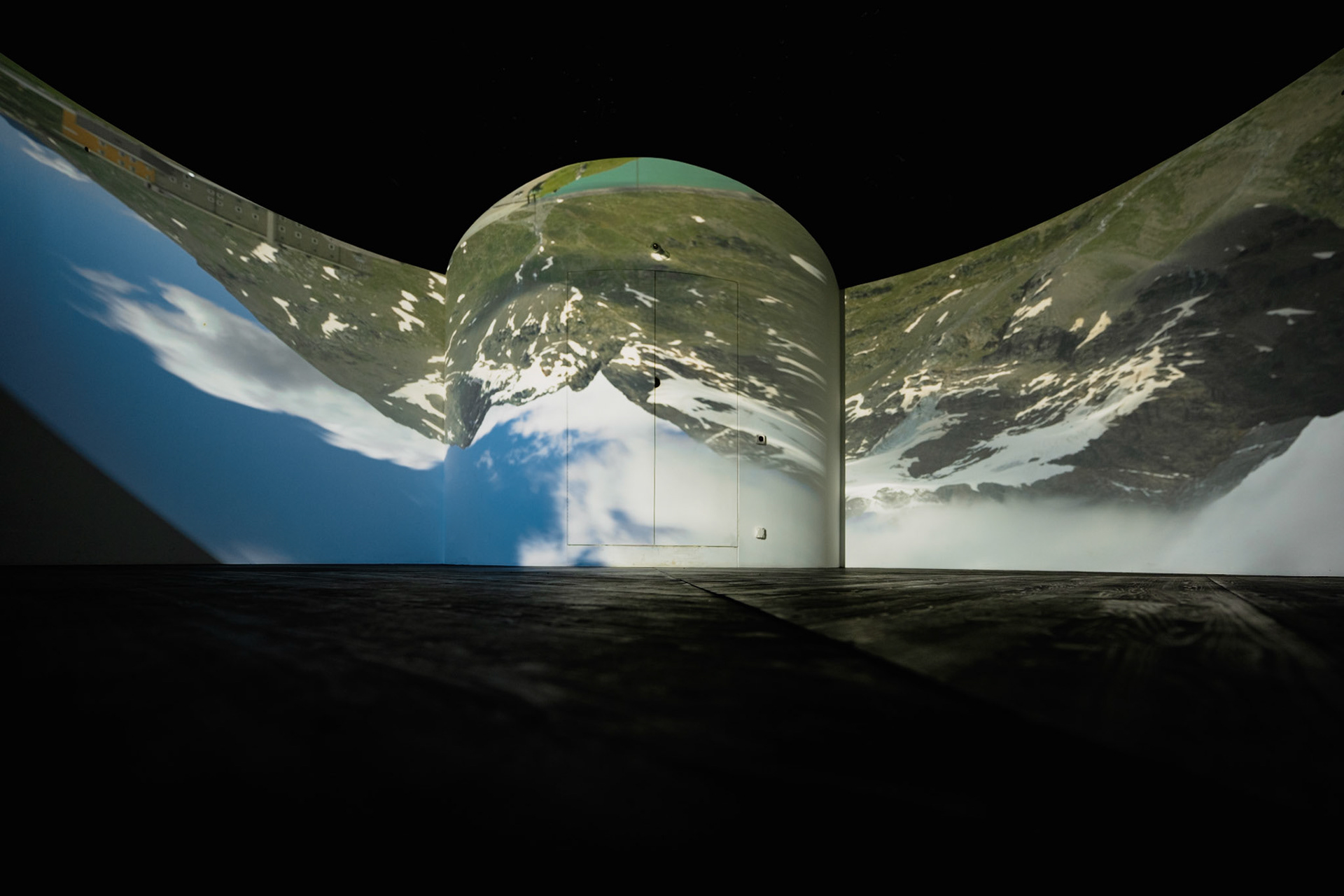
Plan about 1h for the guided visit.
Following the Lago Bianco, you can then hike down to Cavaglia at slightly above 1700m with spectacular views of the Palü glacier and lake. A 25 minute train journey brings you back to Poschiavo.
Cavaglia and hiking to Poschiavo
This hike starts where the previous one ended: in Cavaglia. Just a short walk from the train station, the Glacier Garden ( Giardino dei Ghiacciai di Cavaglia) with its Giants’ Pots is spectacular. These special glacier formations were created over the course of thousands of years when gravel and debris, transported by the glacier water, ground giant holes into the bedrock.
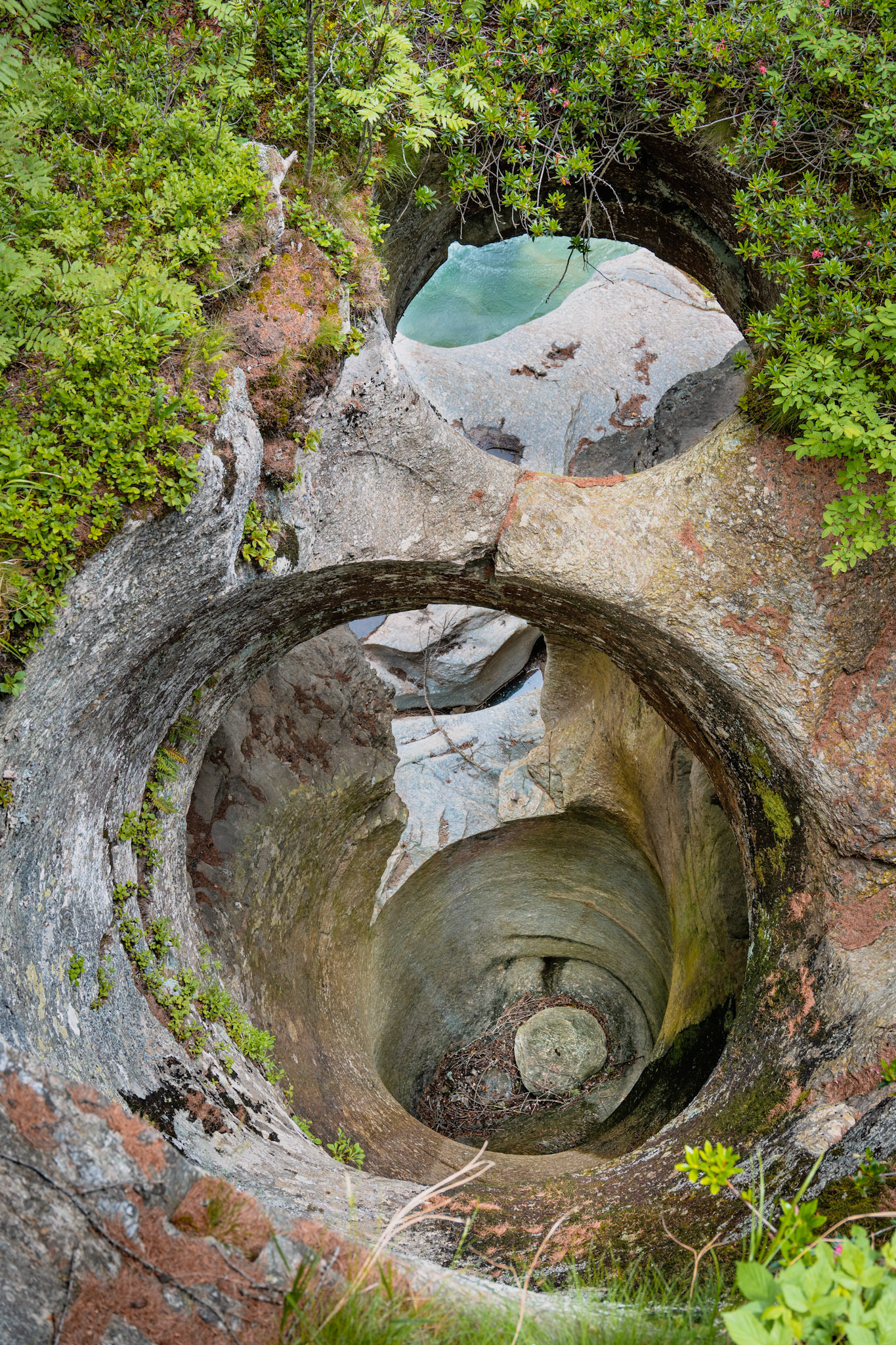
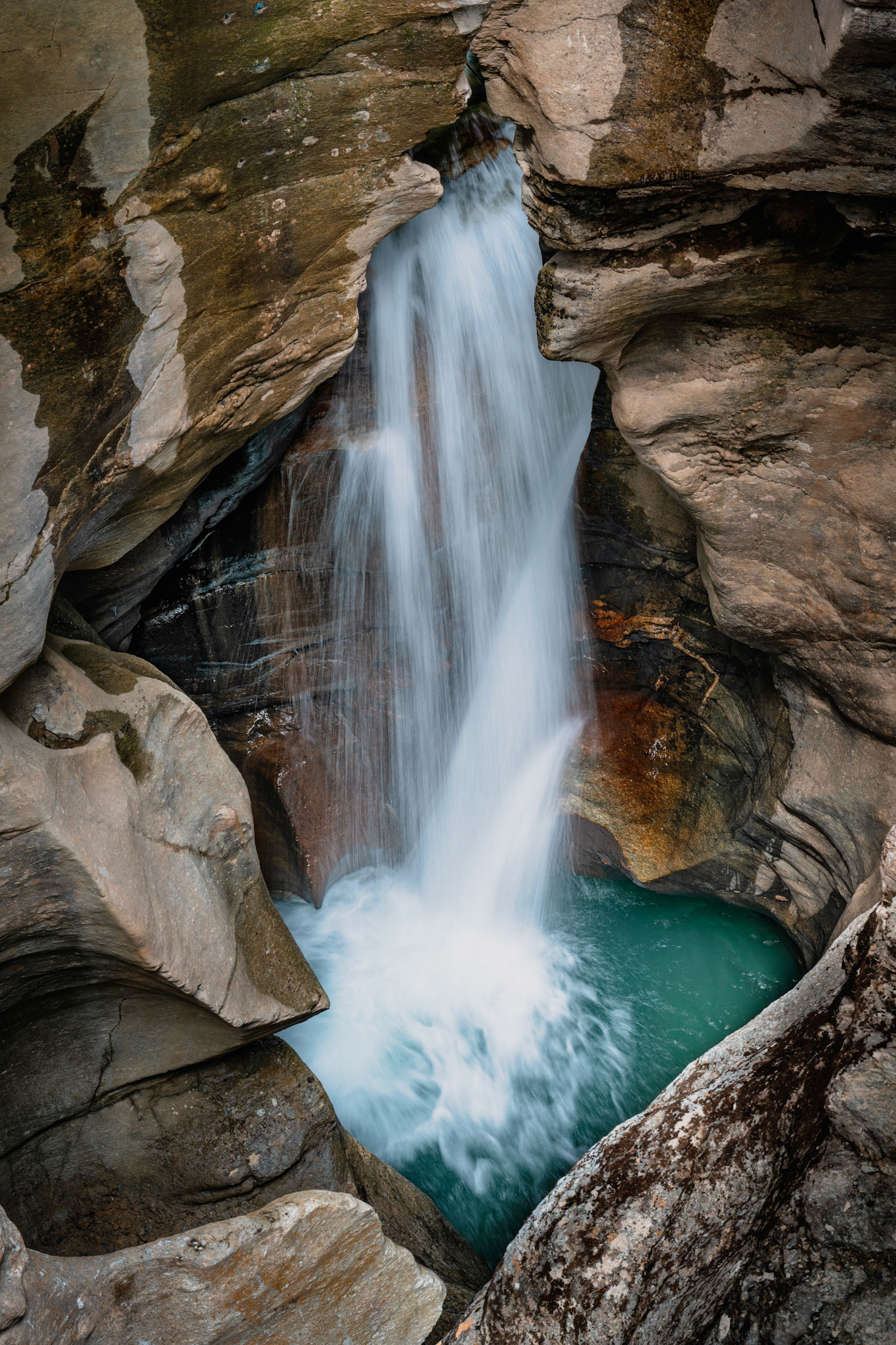
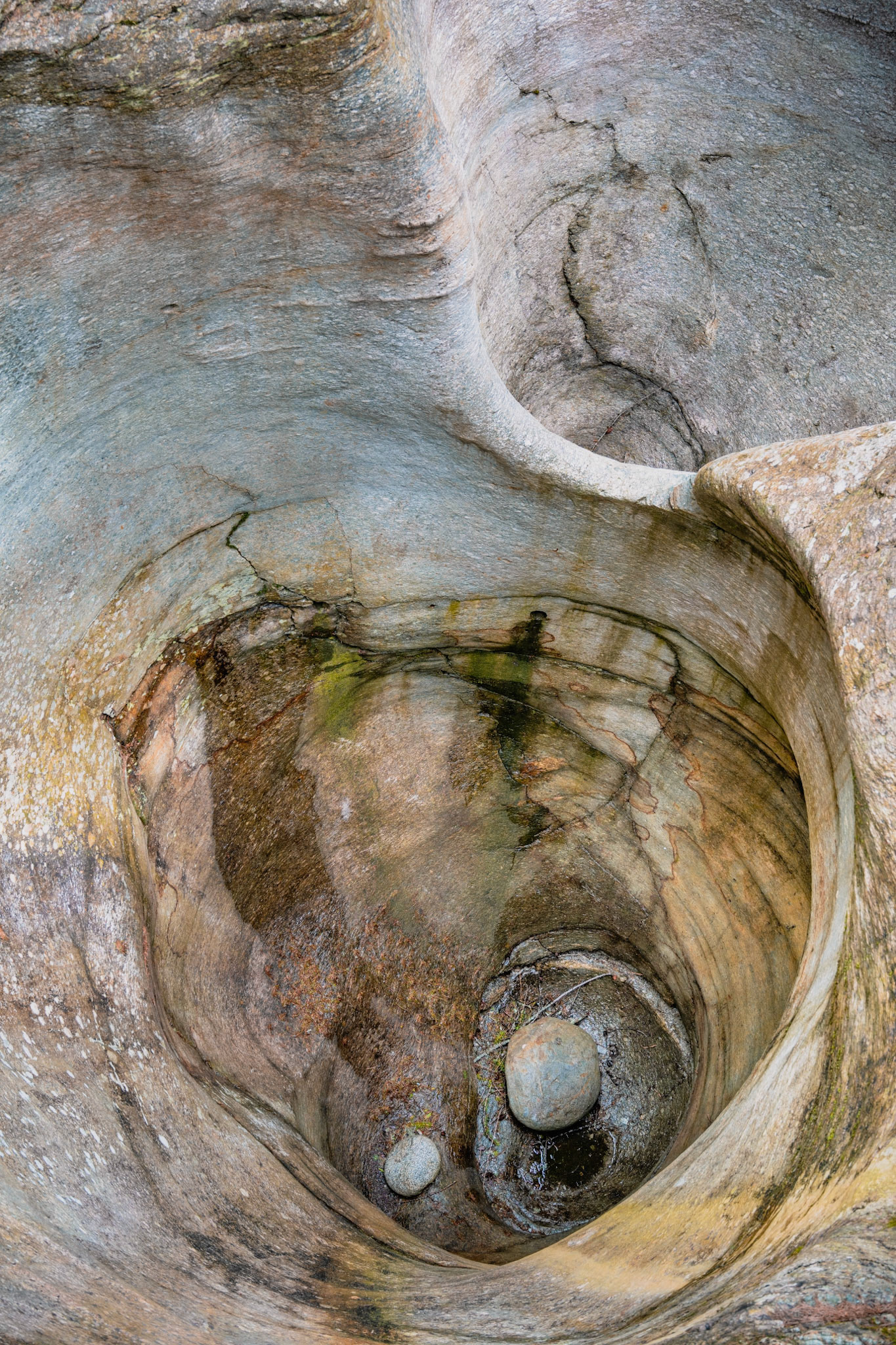
From there, you can hike back to Poschiavo on the well indicated trail. The total distance is about 10km.
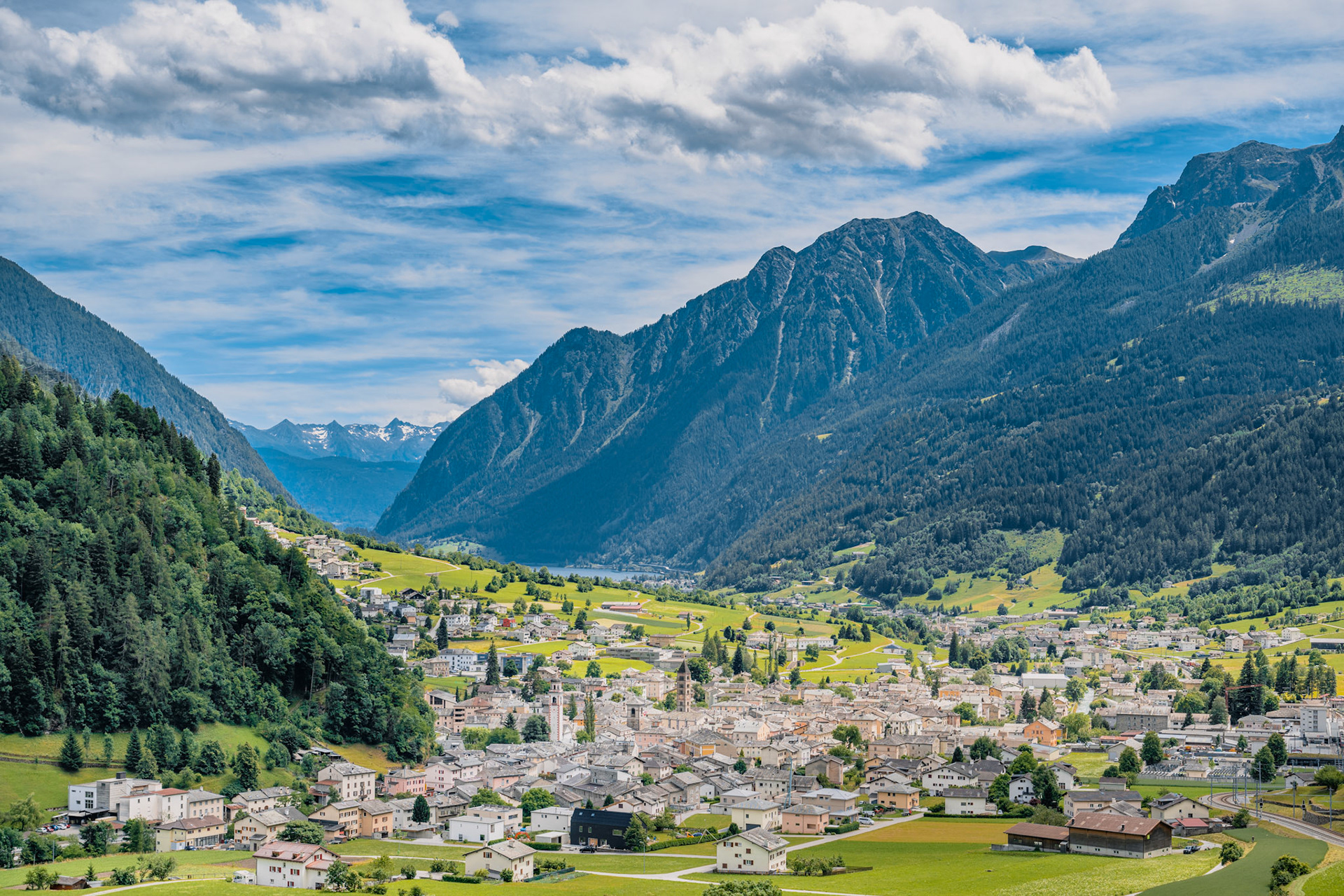
Brusio Spiral Viaduct / Lago Poschiavo
The Bernina railway, the only rail link between Italy and eastern Switzerland, is the highest-elevation adhesion railway route in Europe. Inaugurated in 1908, the Brusio spiral viaduct was built in order to limit the railway's gradient to a maximum of 7%. It is a UNESCO World Heritage site since 2008.
Since trains pass frequently on this line, it was a real pleasure to simply sit next to this viaduct and take in the view of the passing trains going up and down the Bernina line.
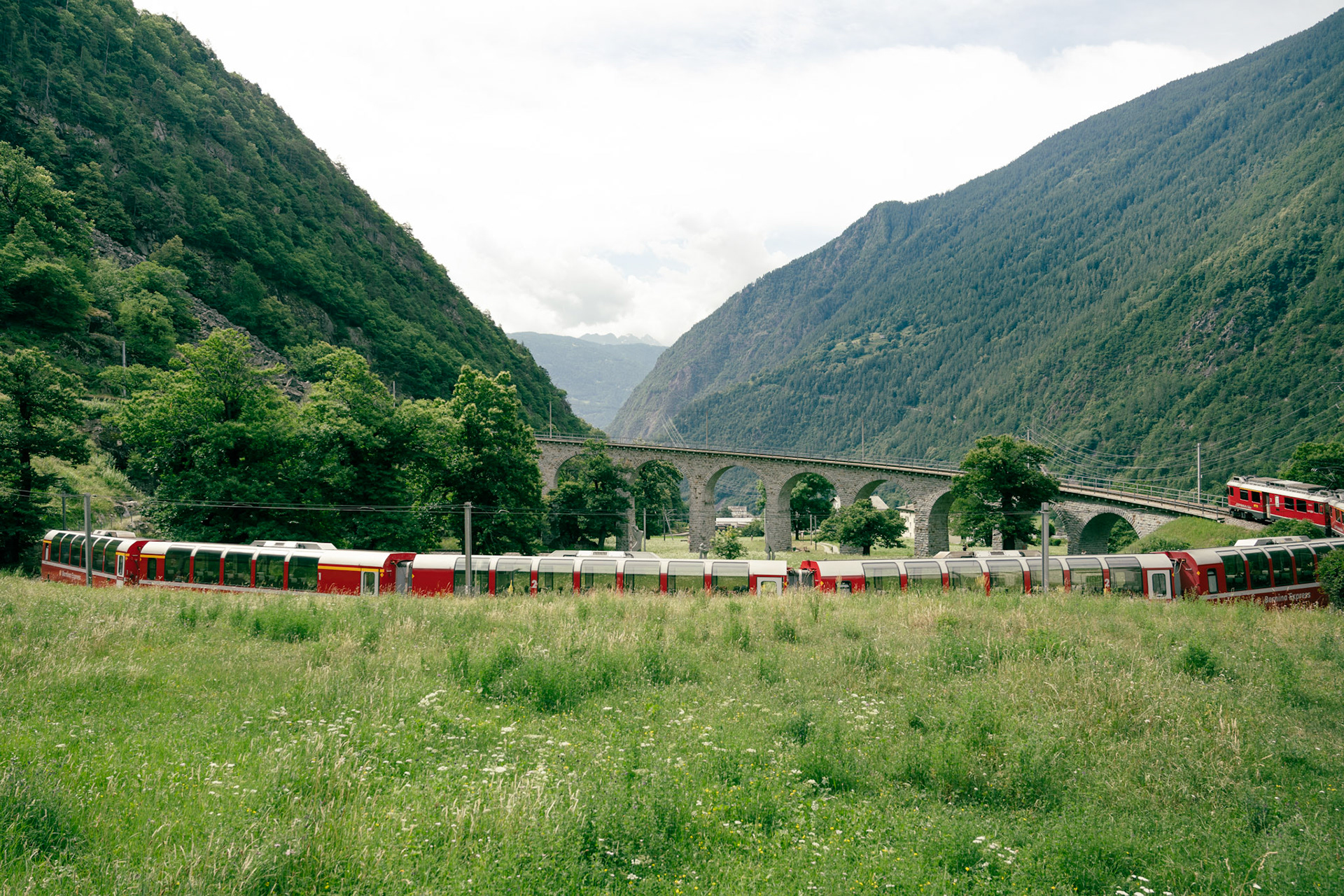
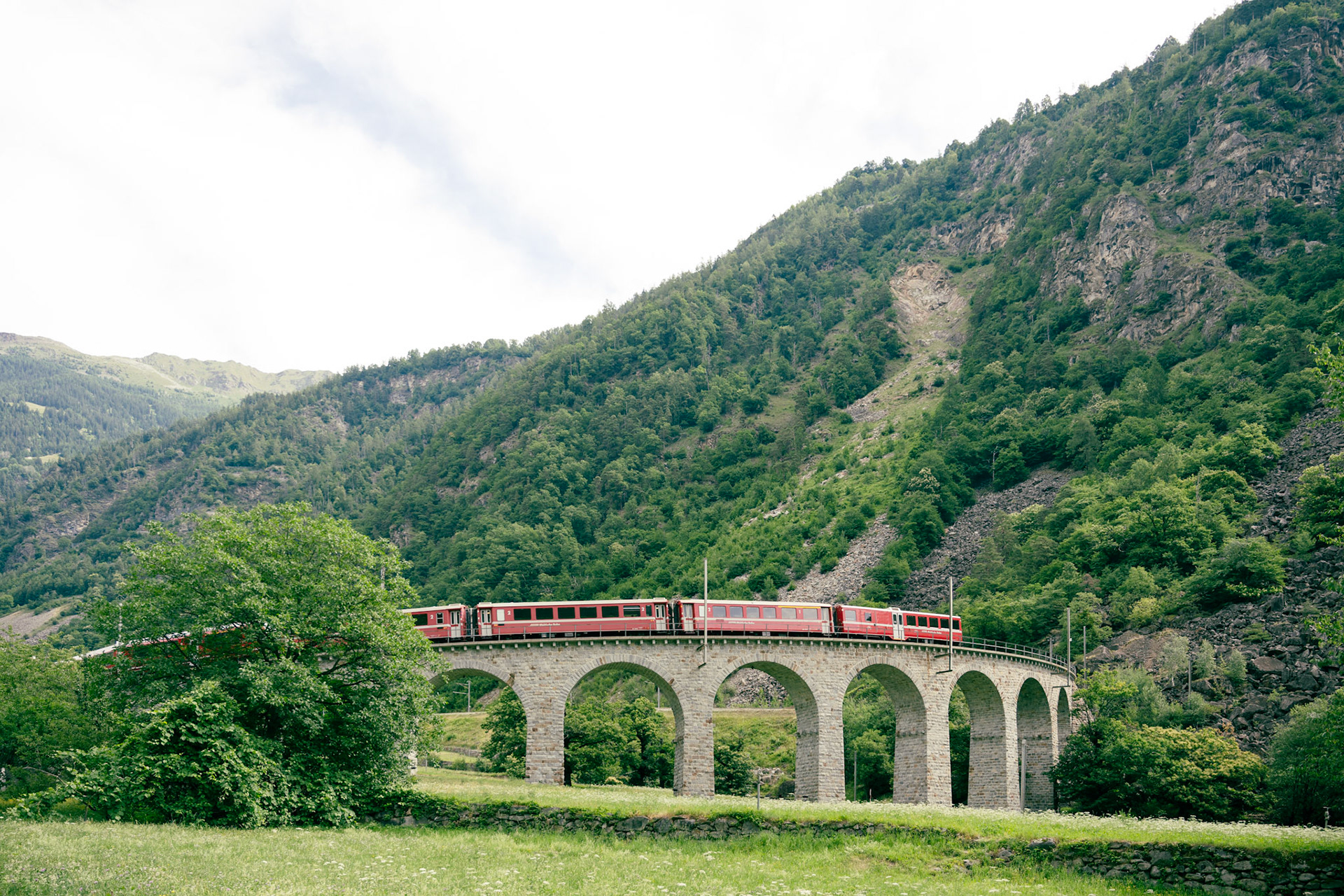
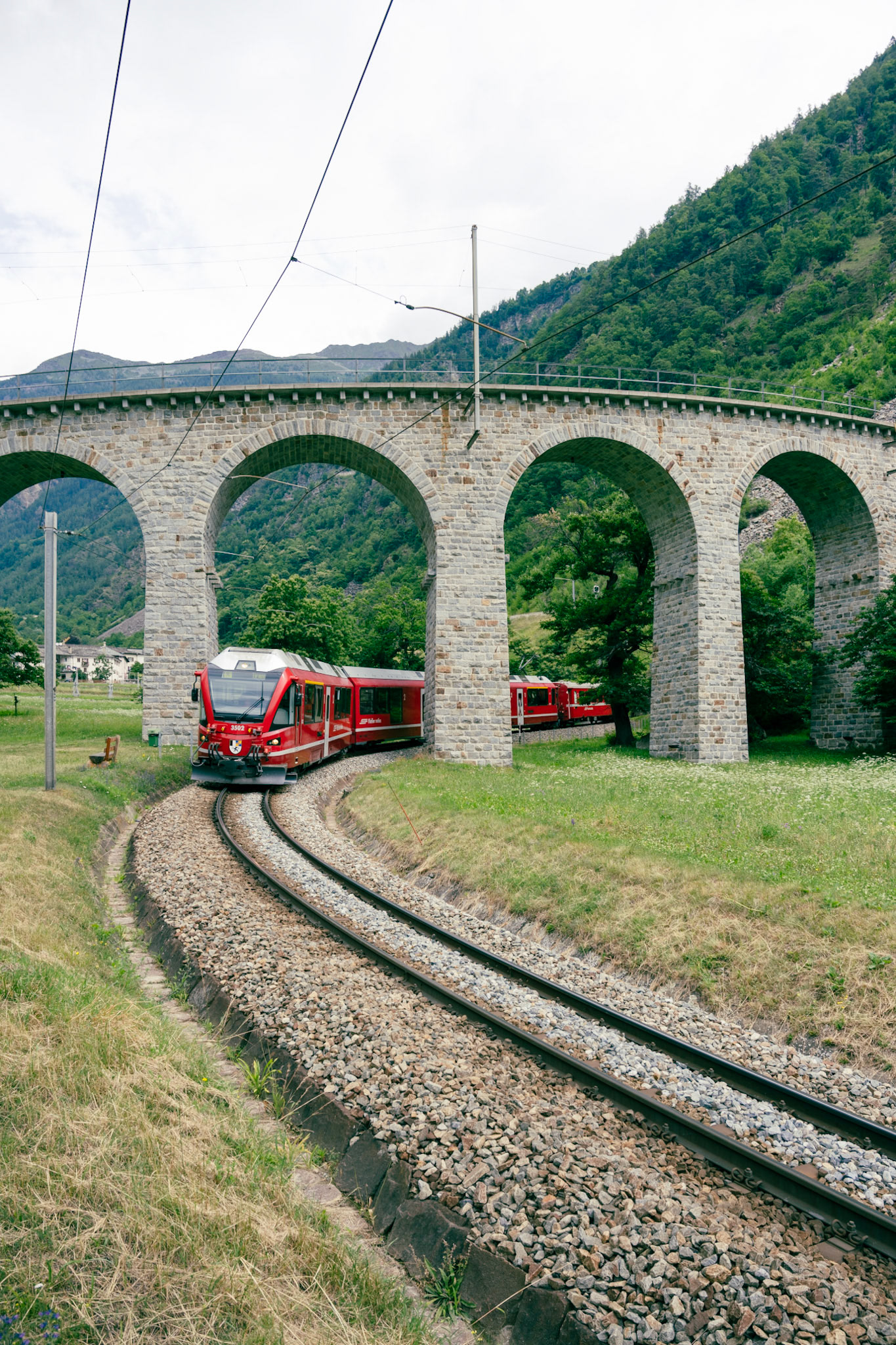
On the way back to Poschiavo, a stop at the Poschiavo Lake is worthwhile. Depending on the weather and how much you want to walk, there’s a nice trail around the lake.
Val da Camp
Val da Camp is a side valley of Val Poschiavo. Over the millennia, several landslides happened in Val da Camp and the mountain streams behind them created crystal clear lakes. It is part of the Swiss Federal Inventory of Landscapes and Cultural Monuments of National Importance.
The starting point to this hike to one of the most beautiful Swiss mountain lakes is in Sfazù where you find public parking when you arrive early enough. As private motorized traffic is forbidden in Val da Camp, the only way to get to the starting point in Alp Camp is either to walk or to take the small postal bus (advance reservations required). We took the bus on the way up and then walked back to Sfazù.
From Alp Camp, we hiked through pastures to Lagh da Val Viola where we made a first stop.
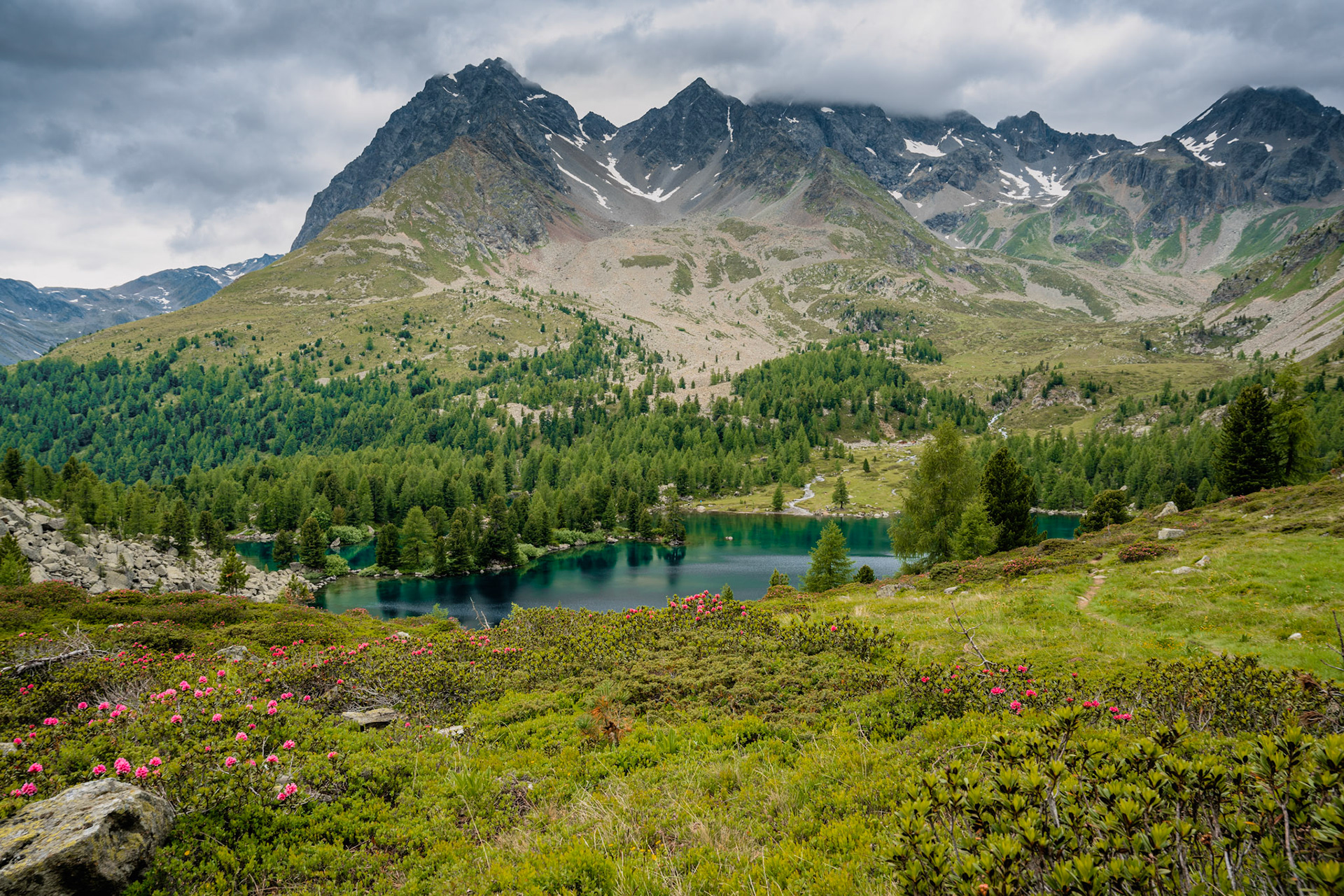
The trail follows and goes around the lake and then across the impressive remains of a landslide before descending towards the smaller Lago di Saoseo.
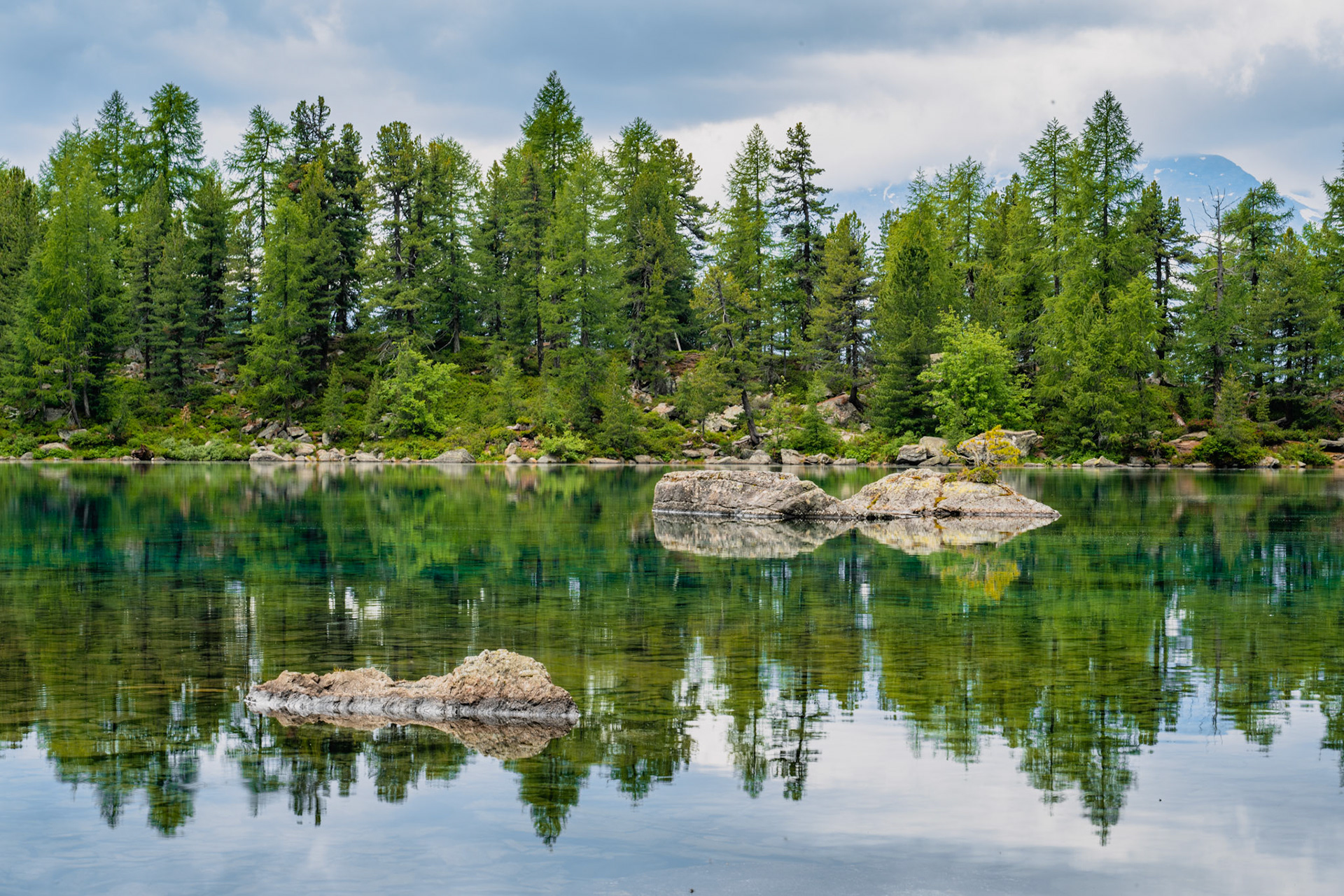
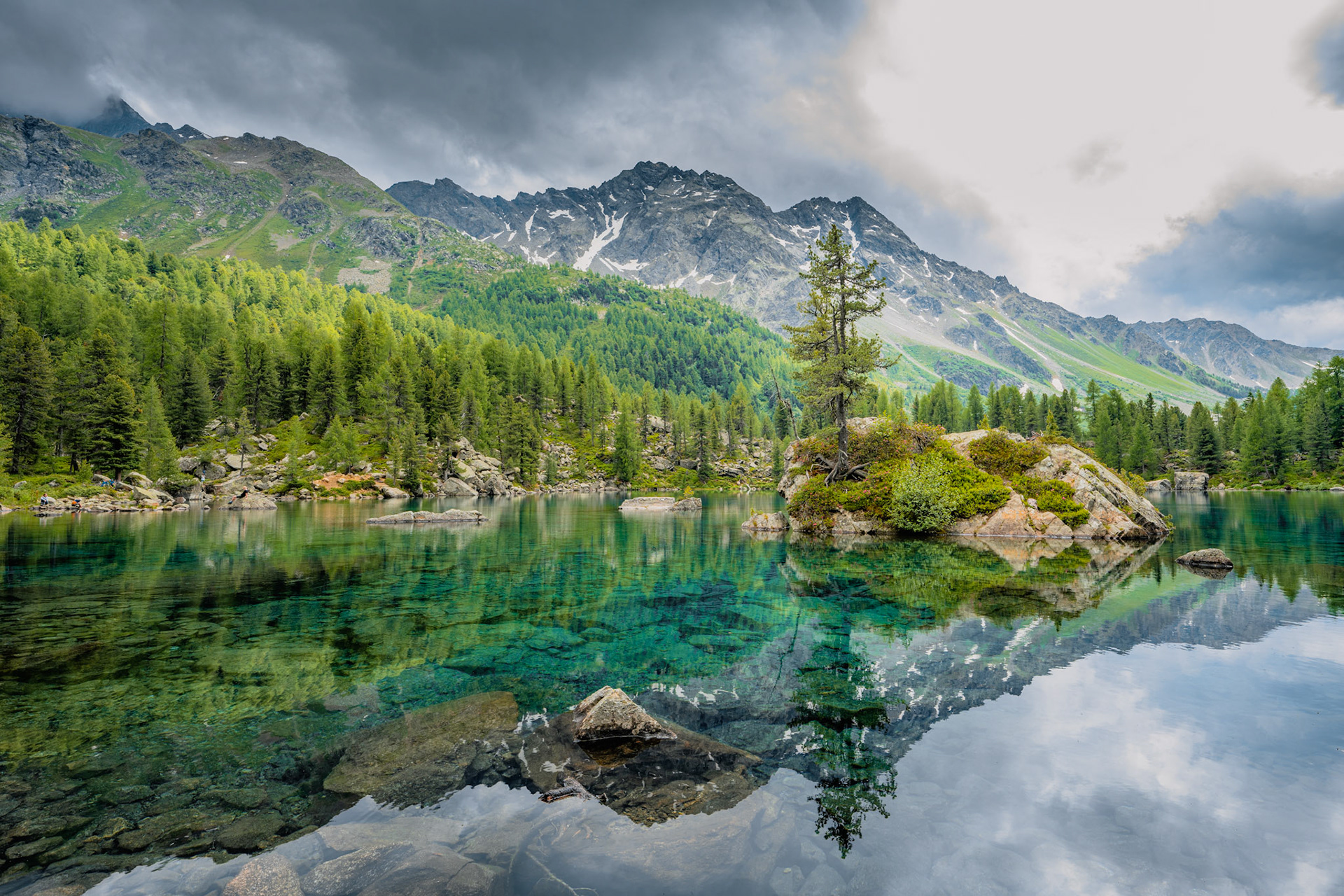
Its water has a beautiful blue colour, and standing at the shore it is so clear that we could see every single stone and tree trunk at the bottom.
We walked back to Sfazù on the left side of the Campo river following the directions towards Terzana, thereby avoiding the gravel road taken by the post bus upon our arrival.
Val Poschiavo impressed us with its gastronomic tradition, its beautiful grand landscape and its interesting architecture. In one week, we felt like we were barely able to scratch its surface !
